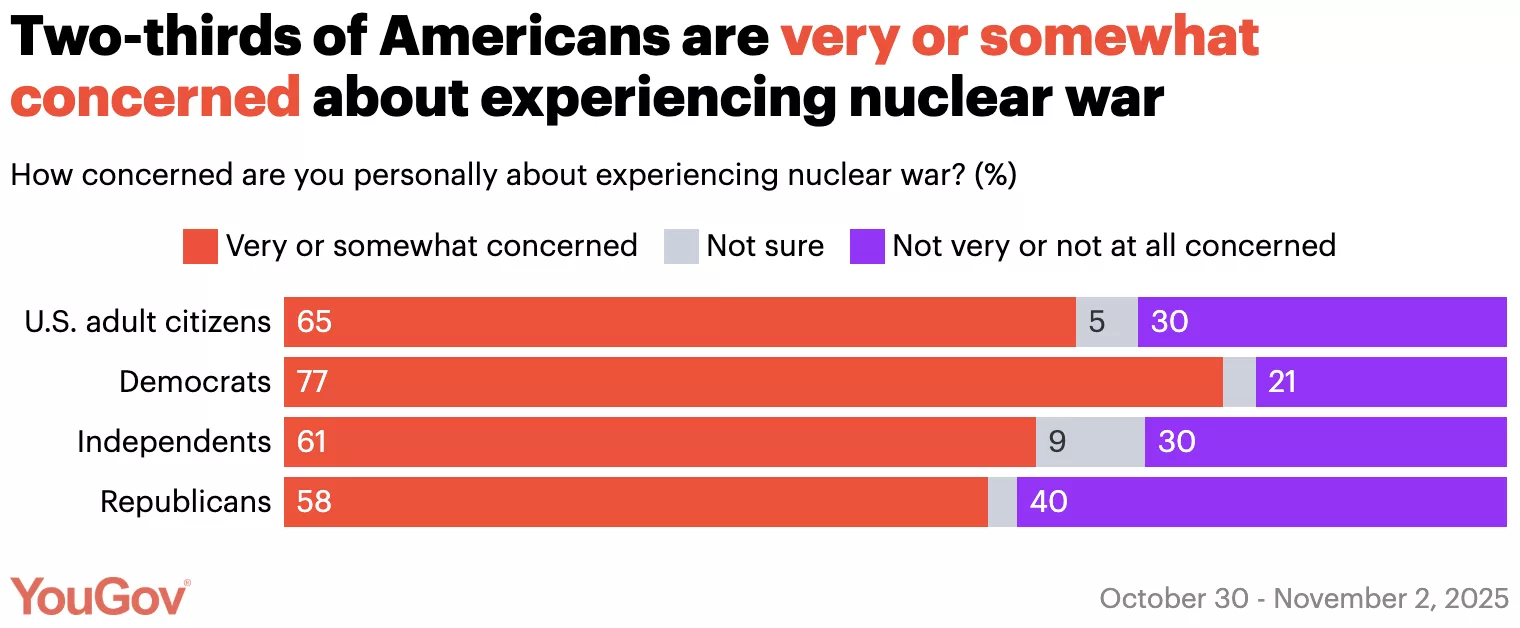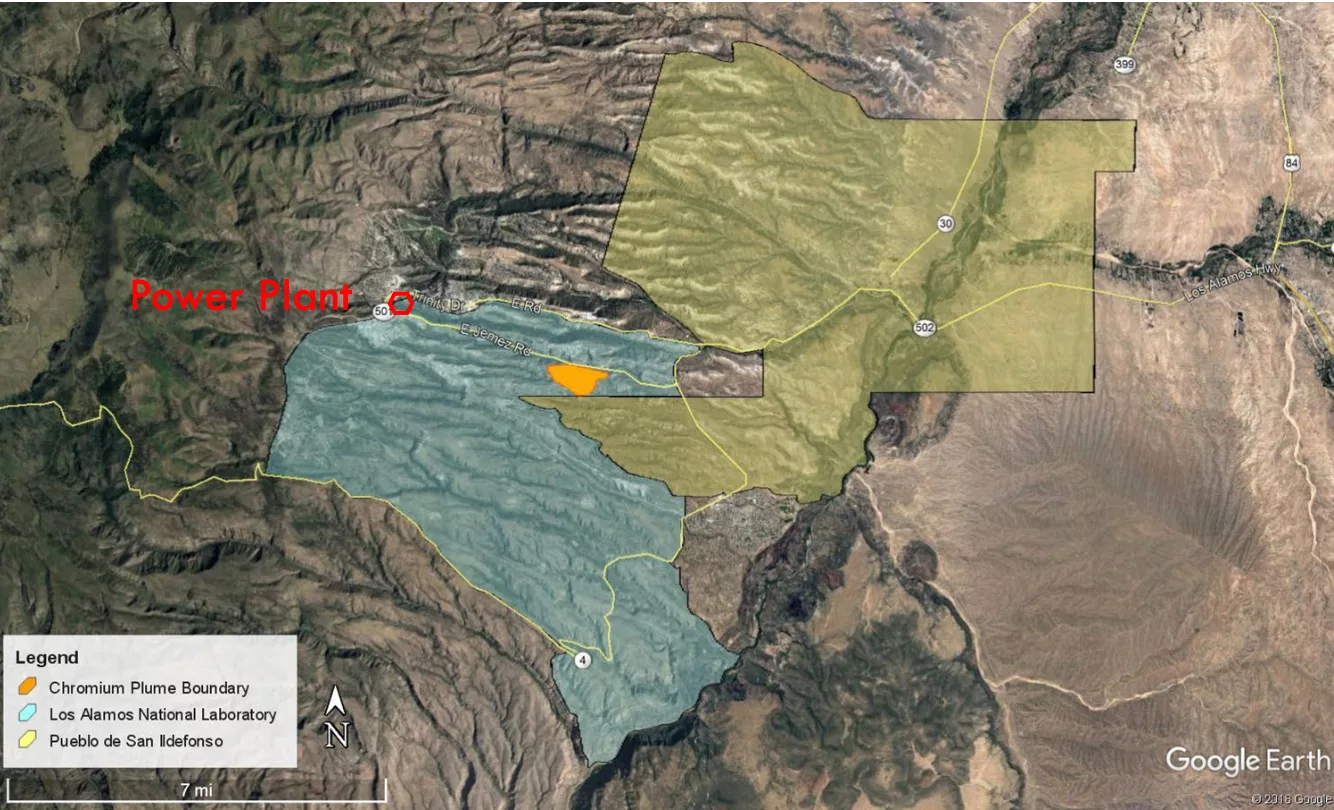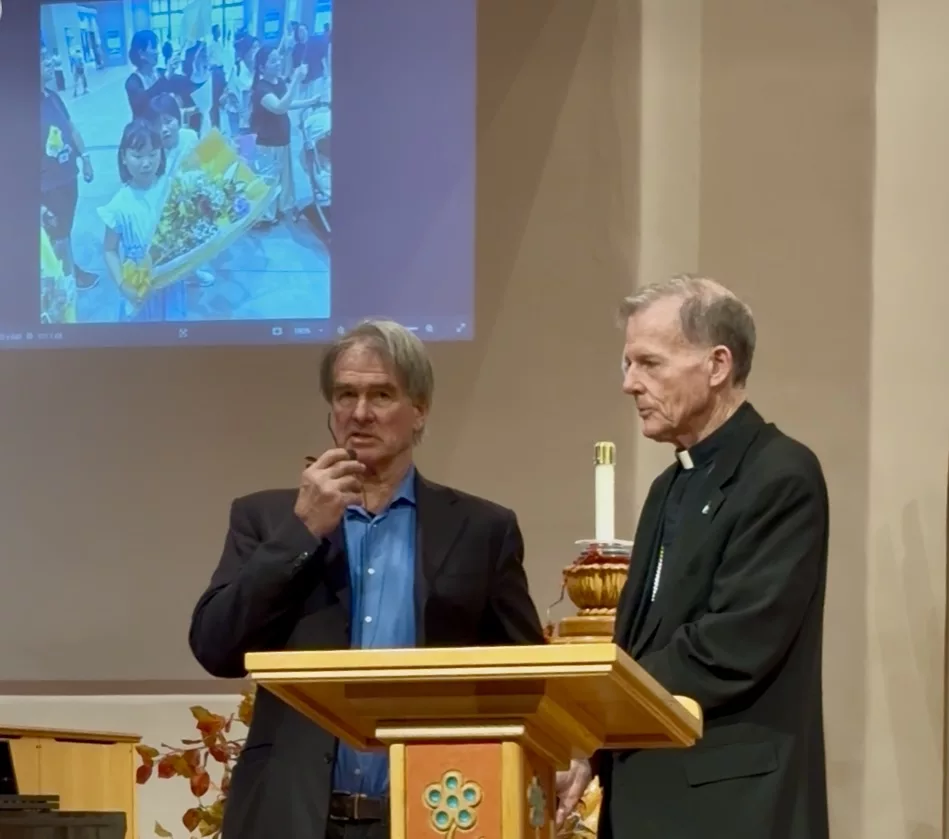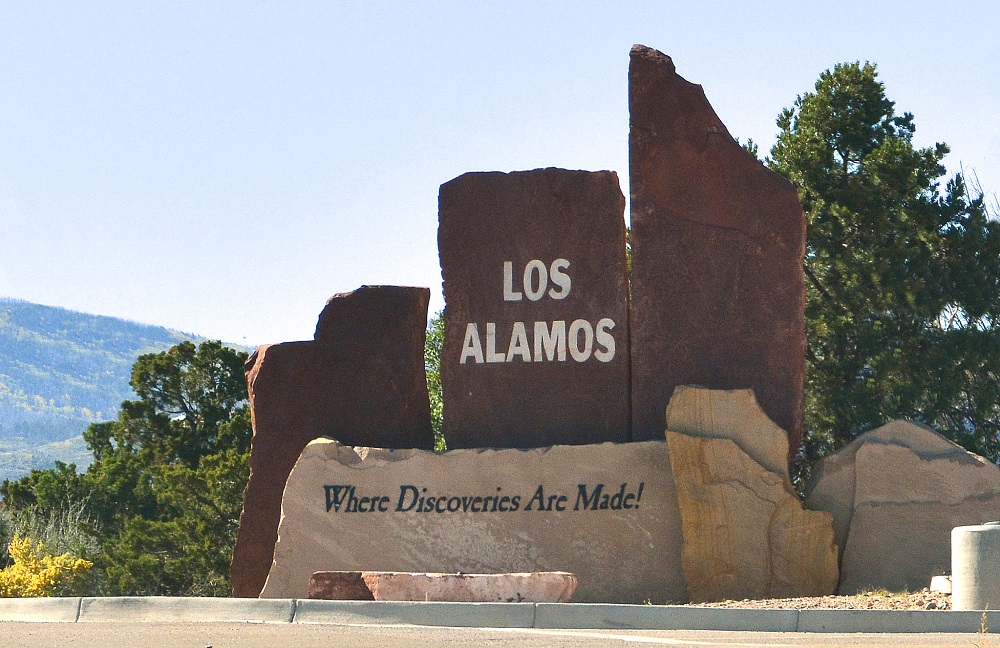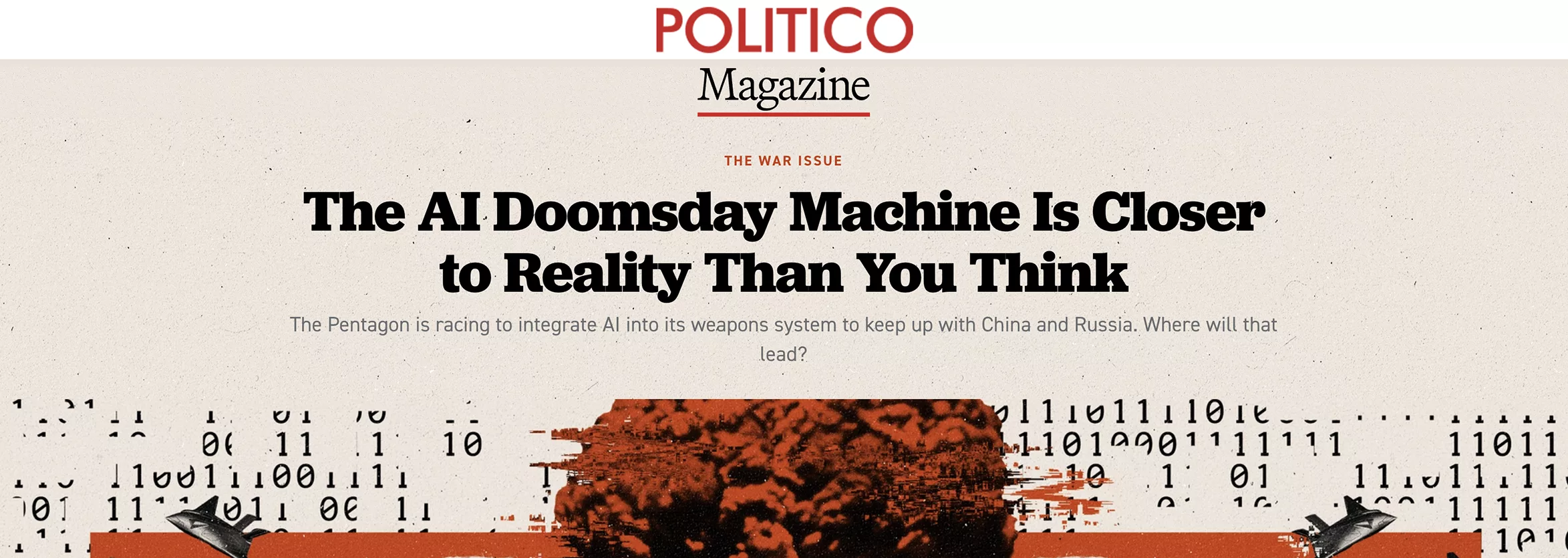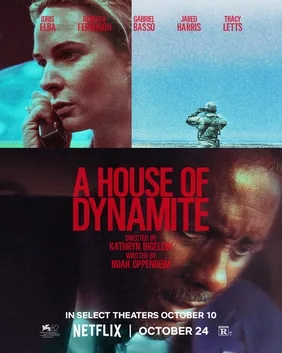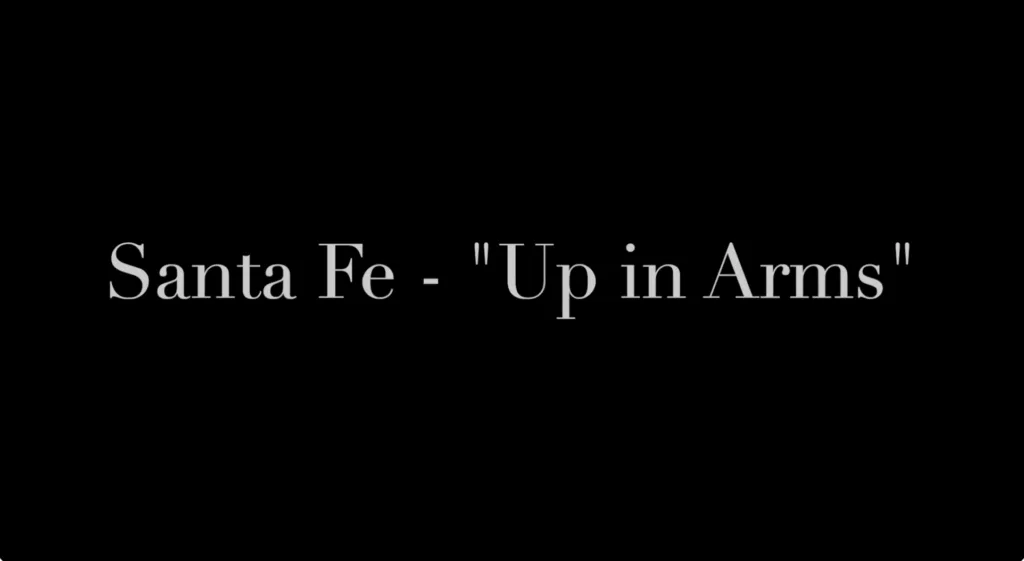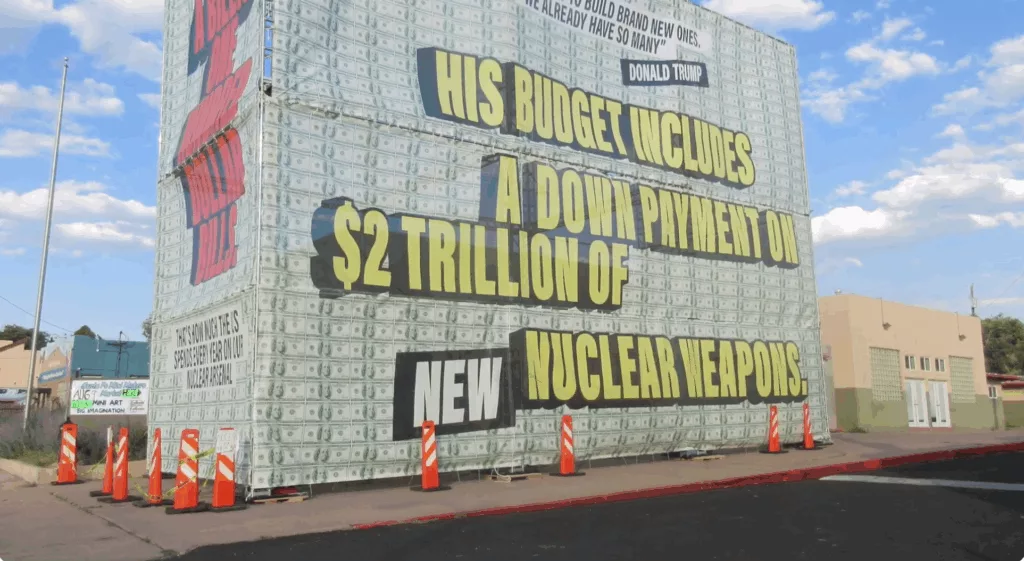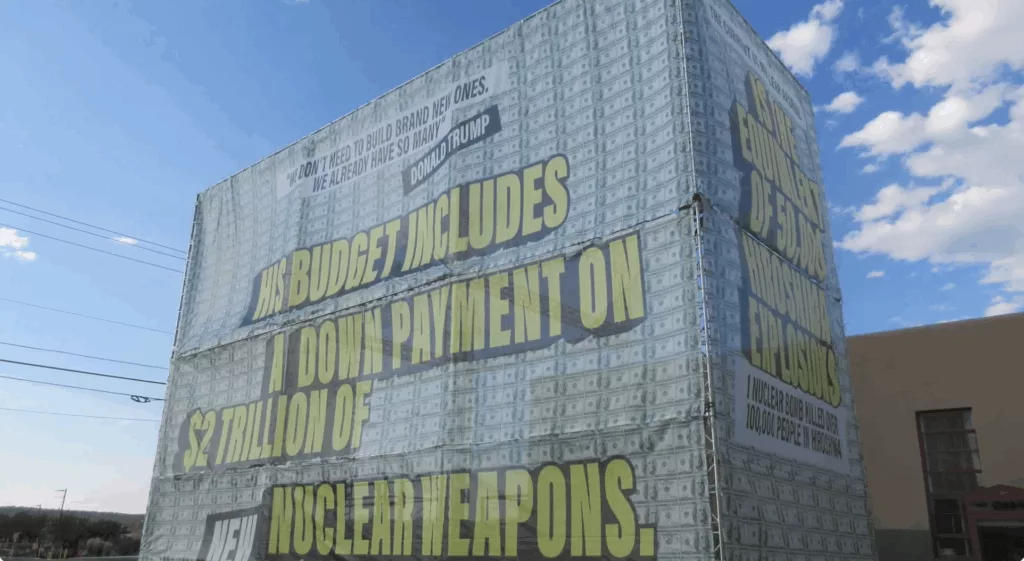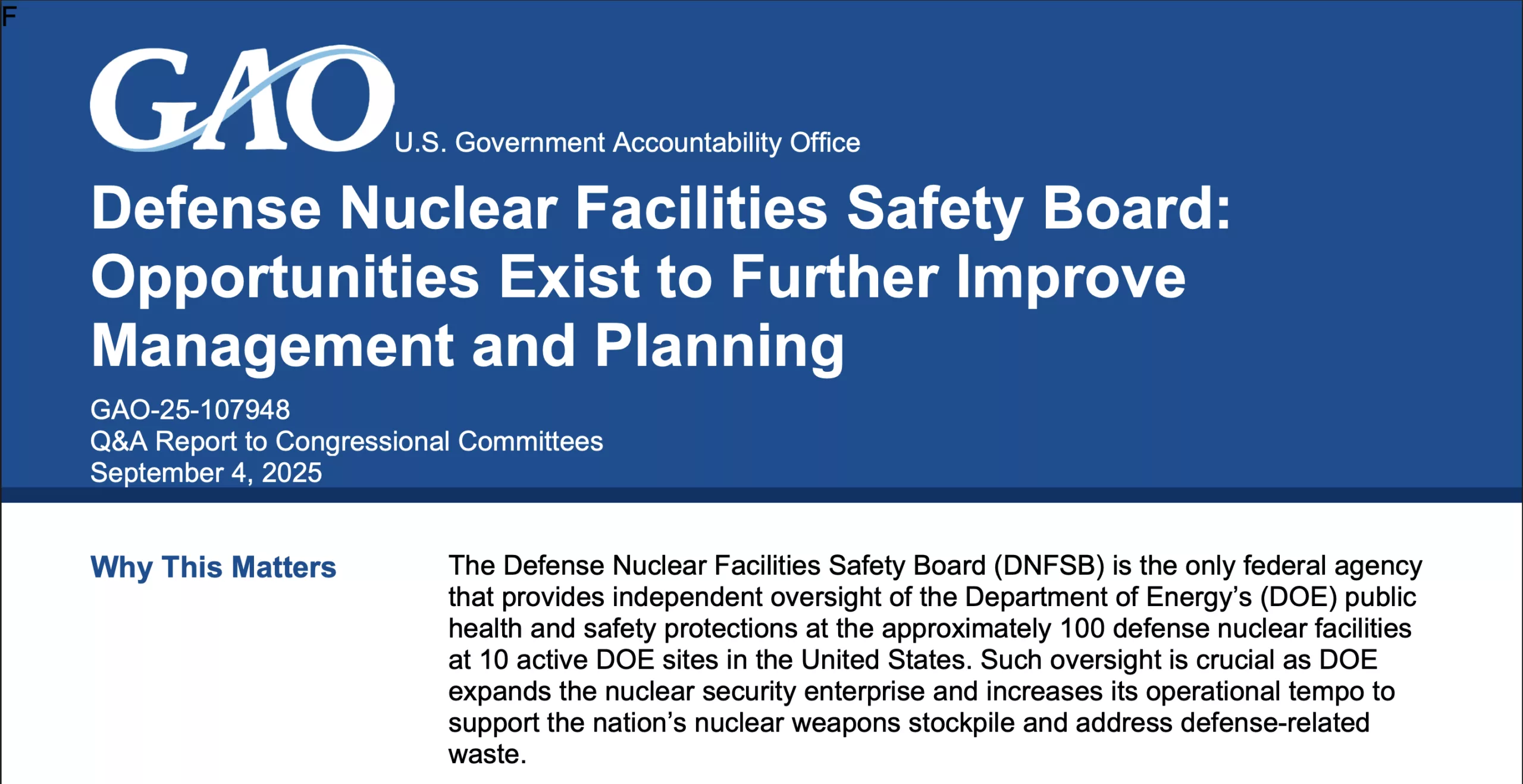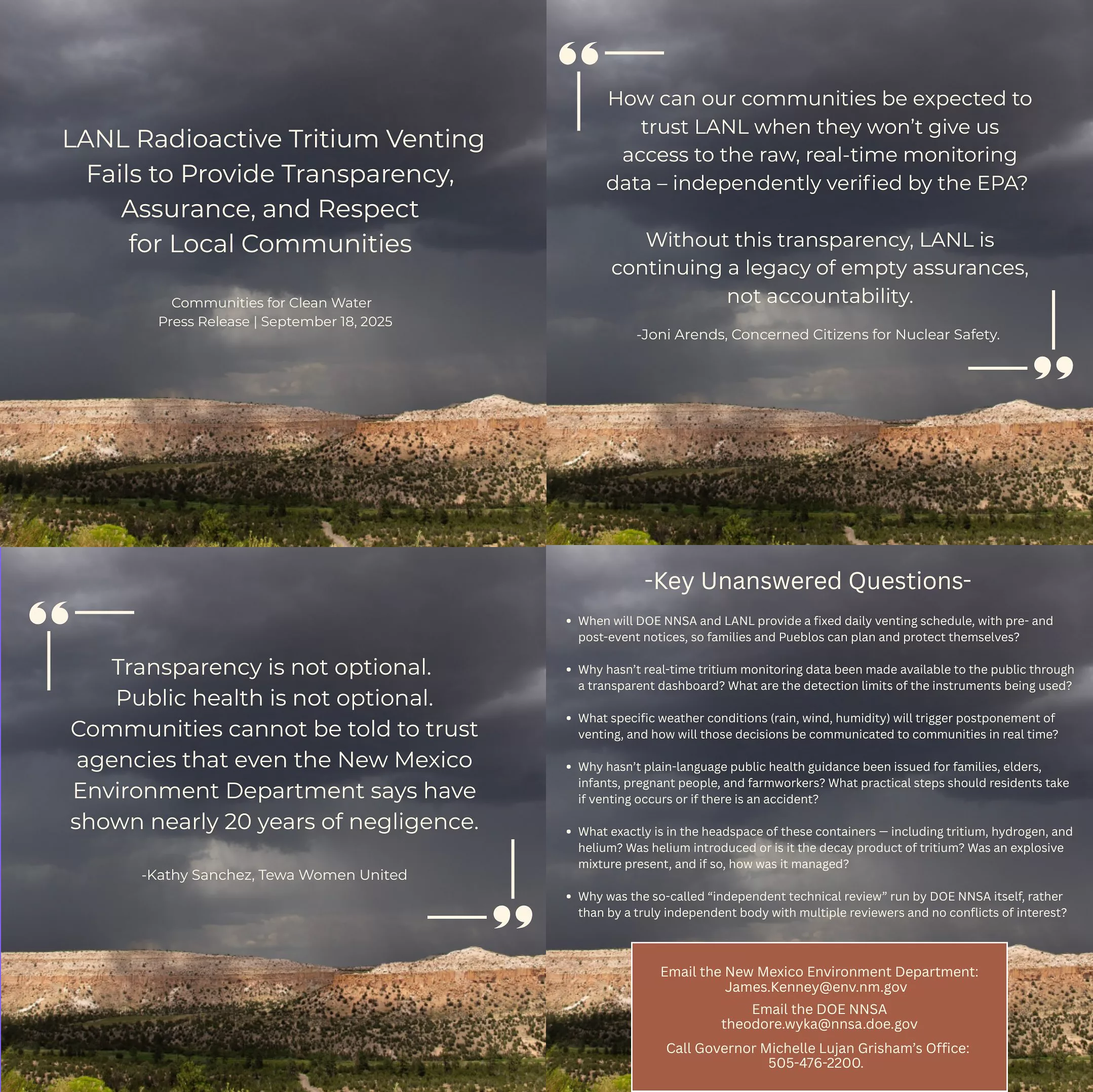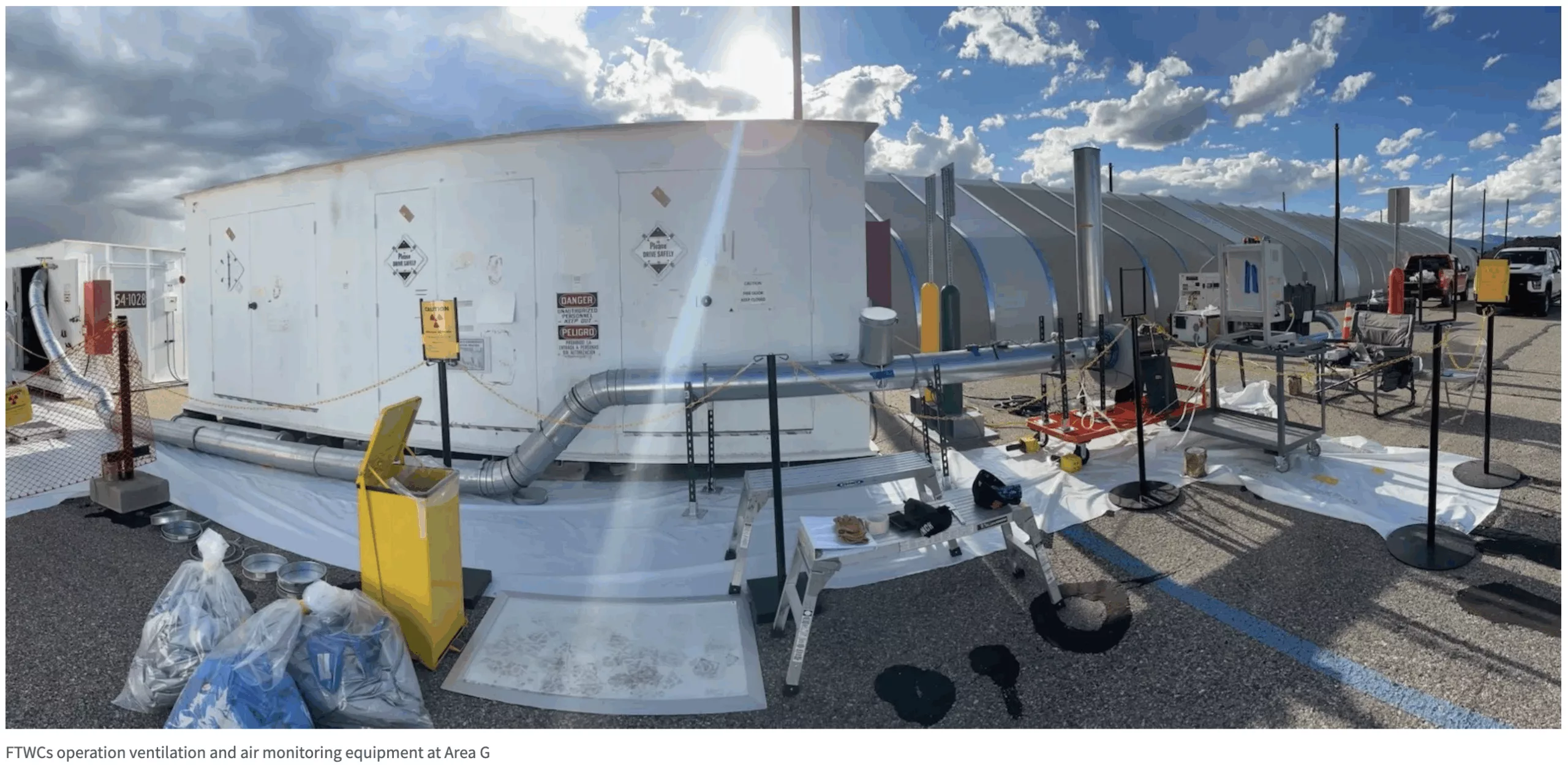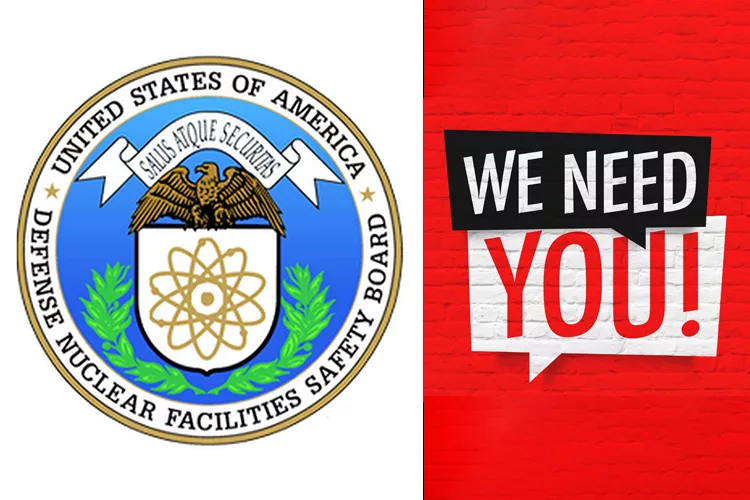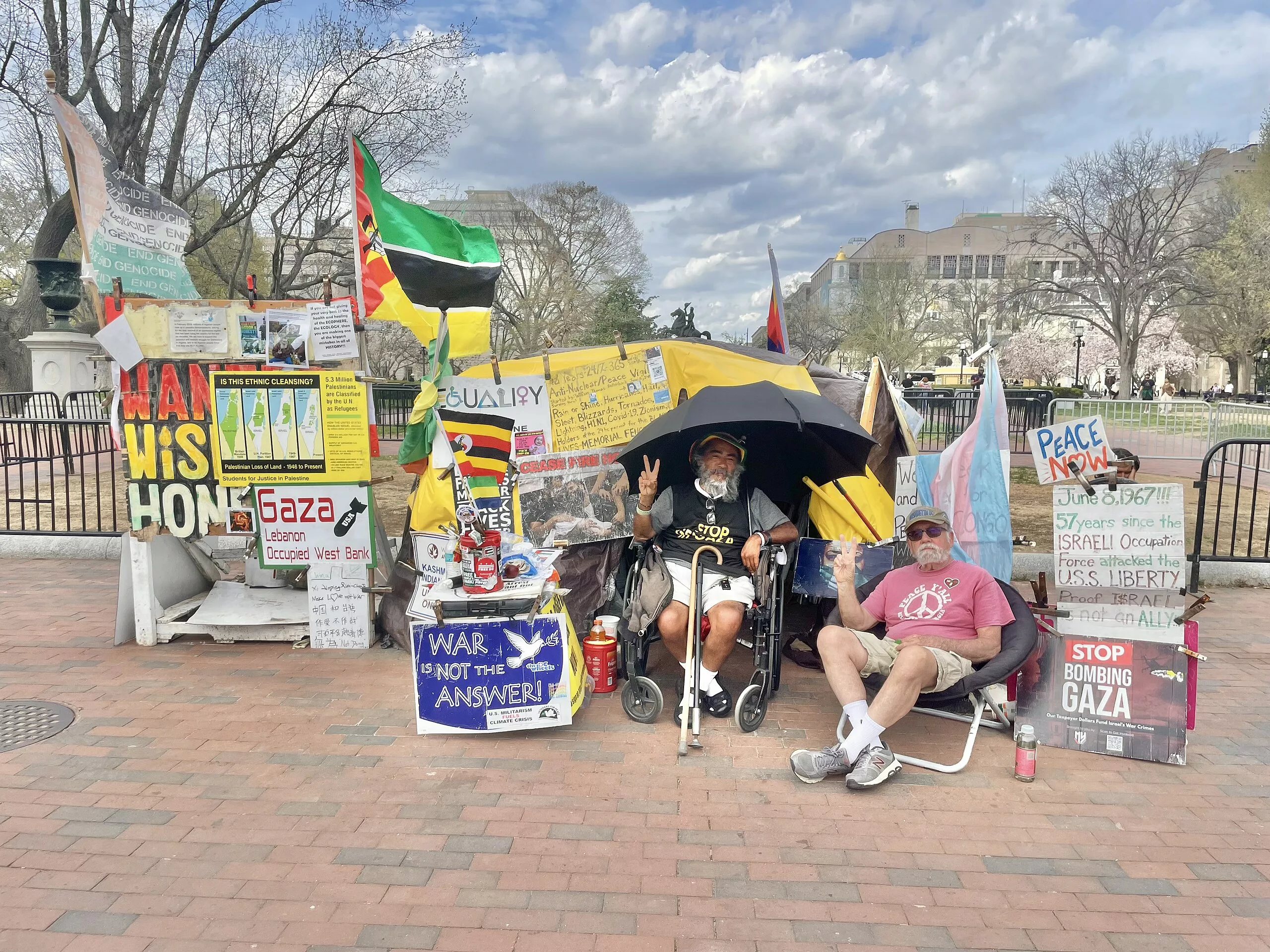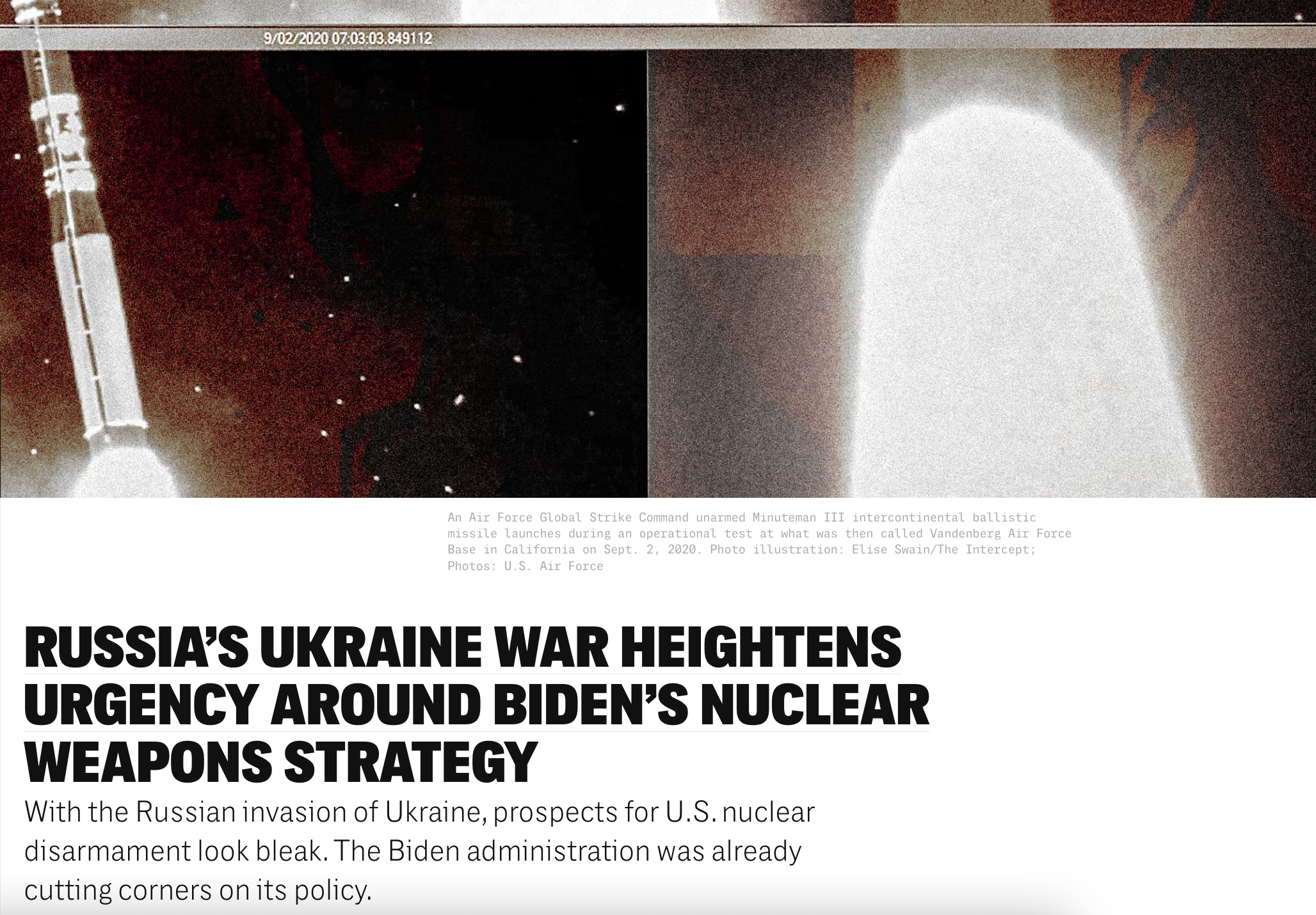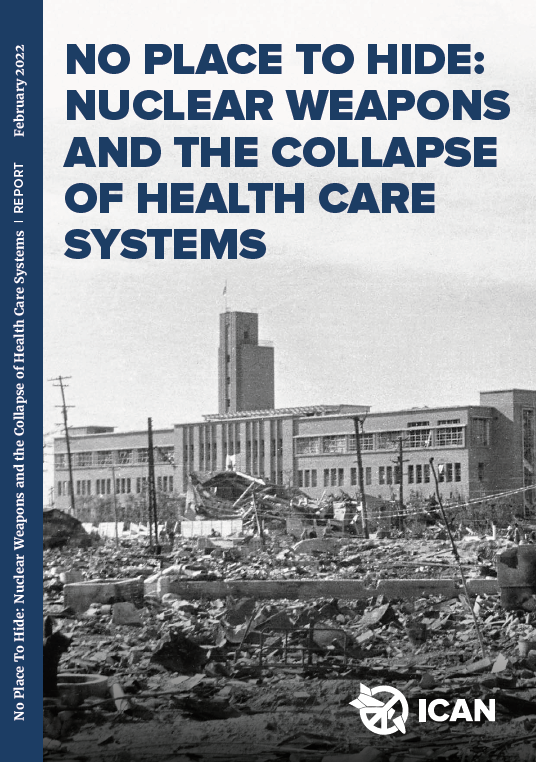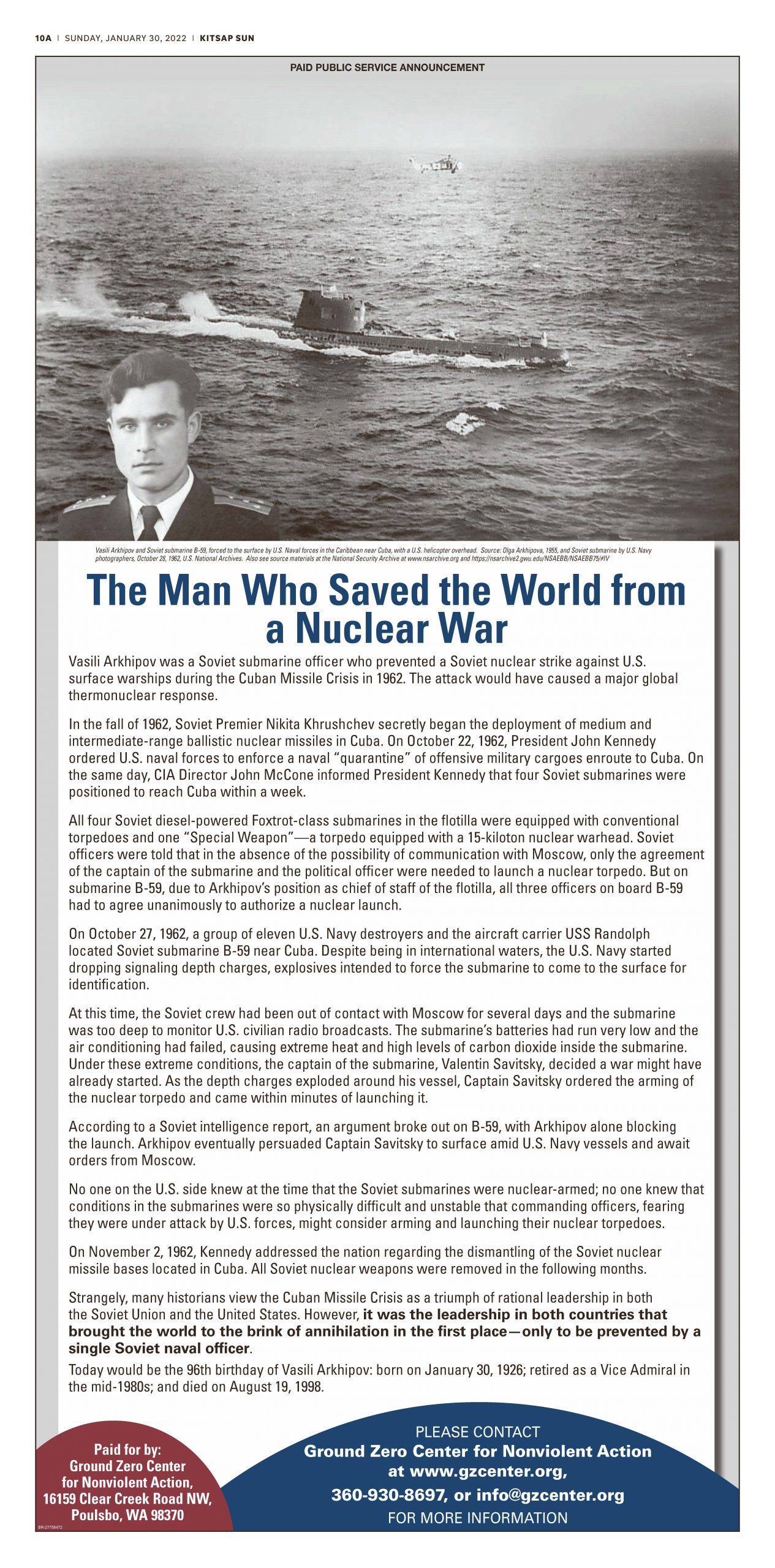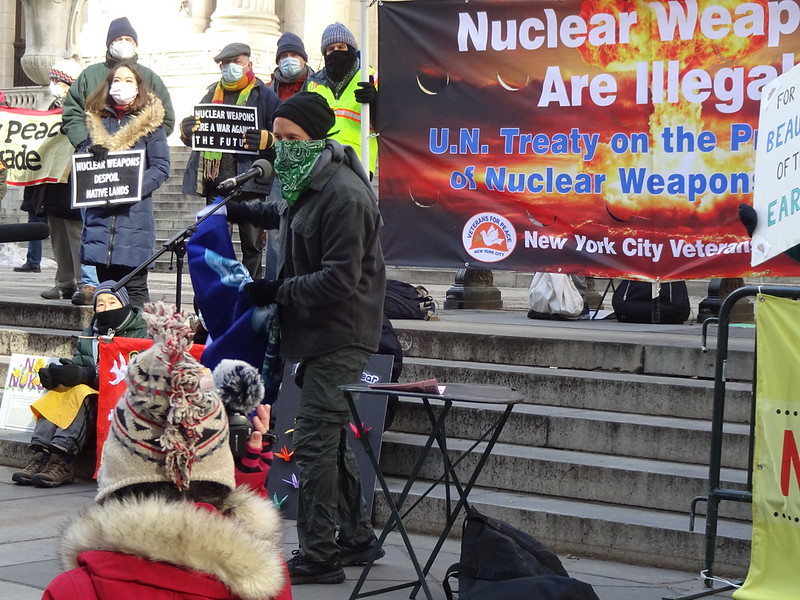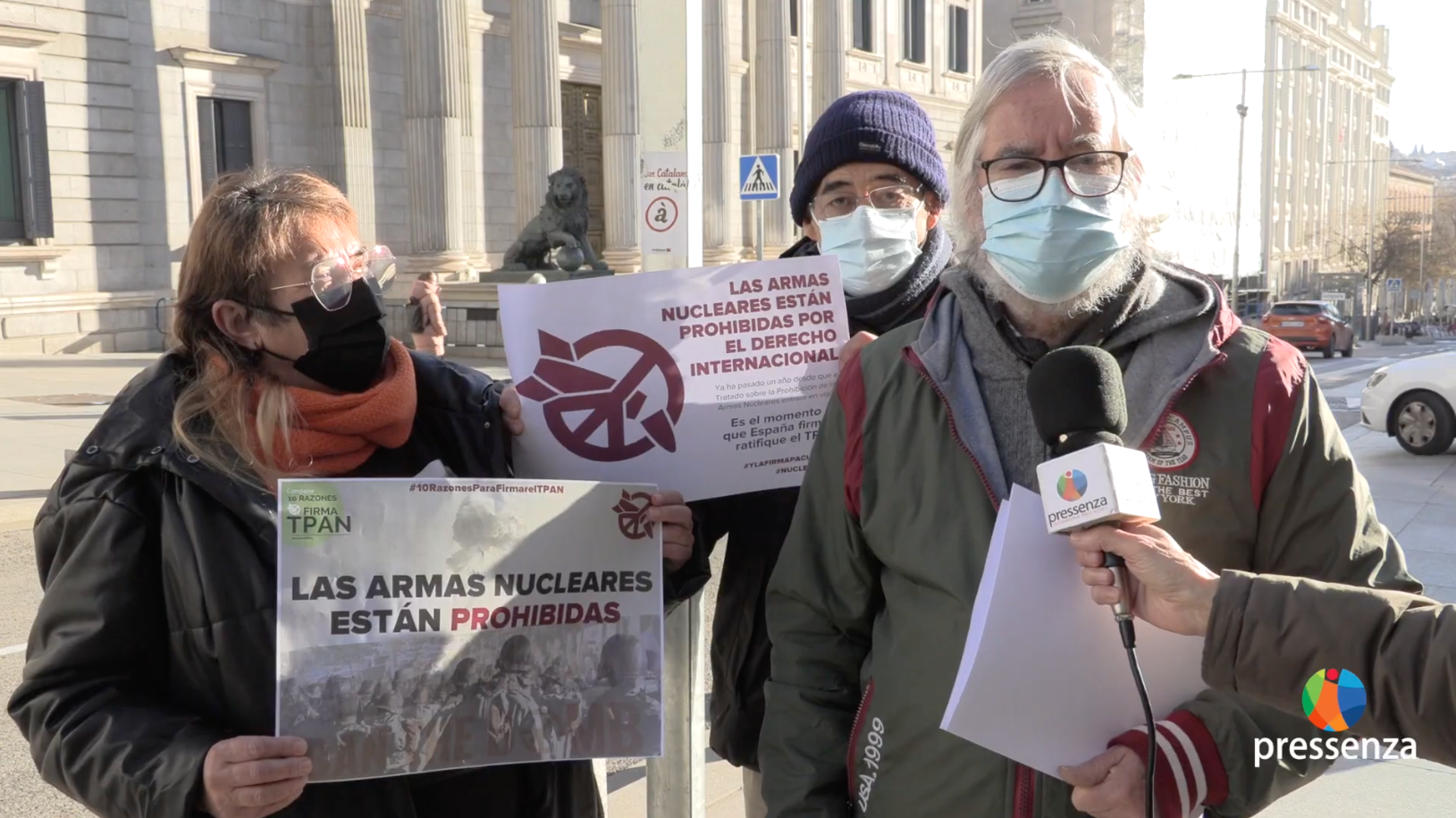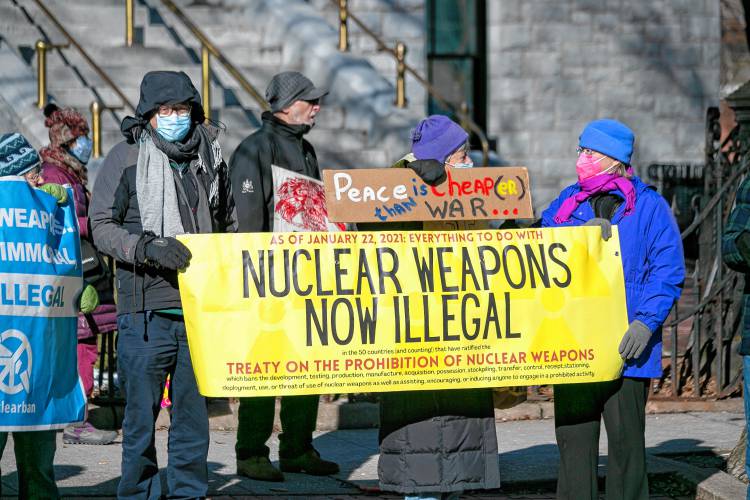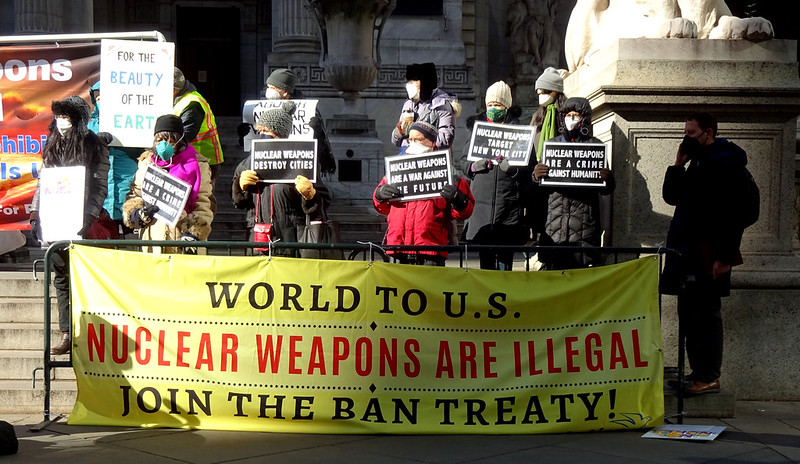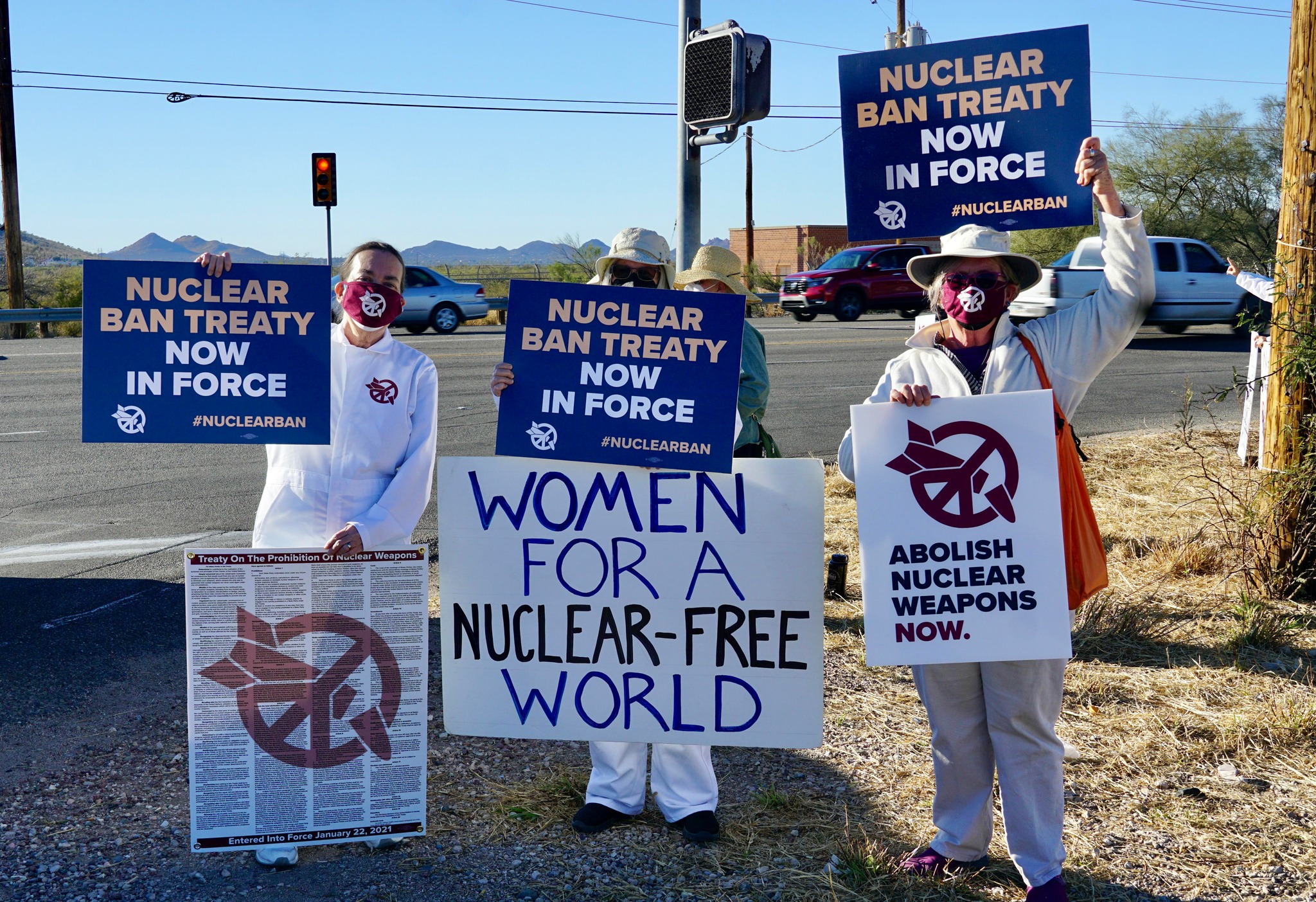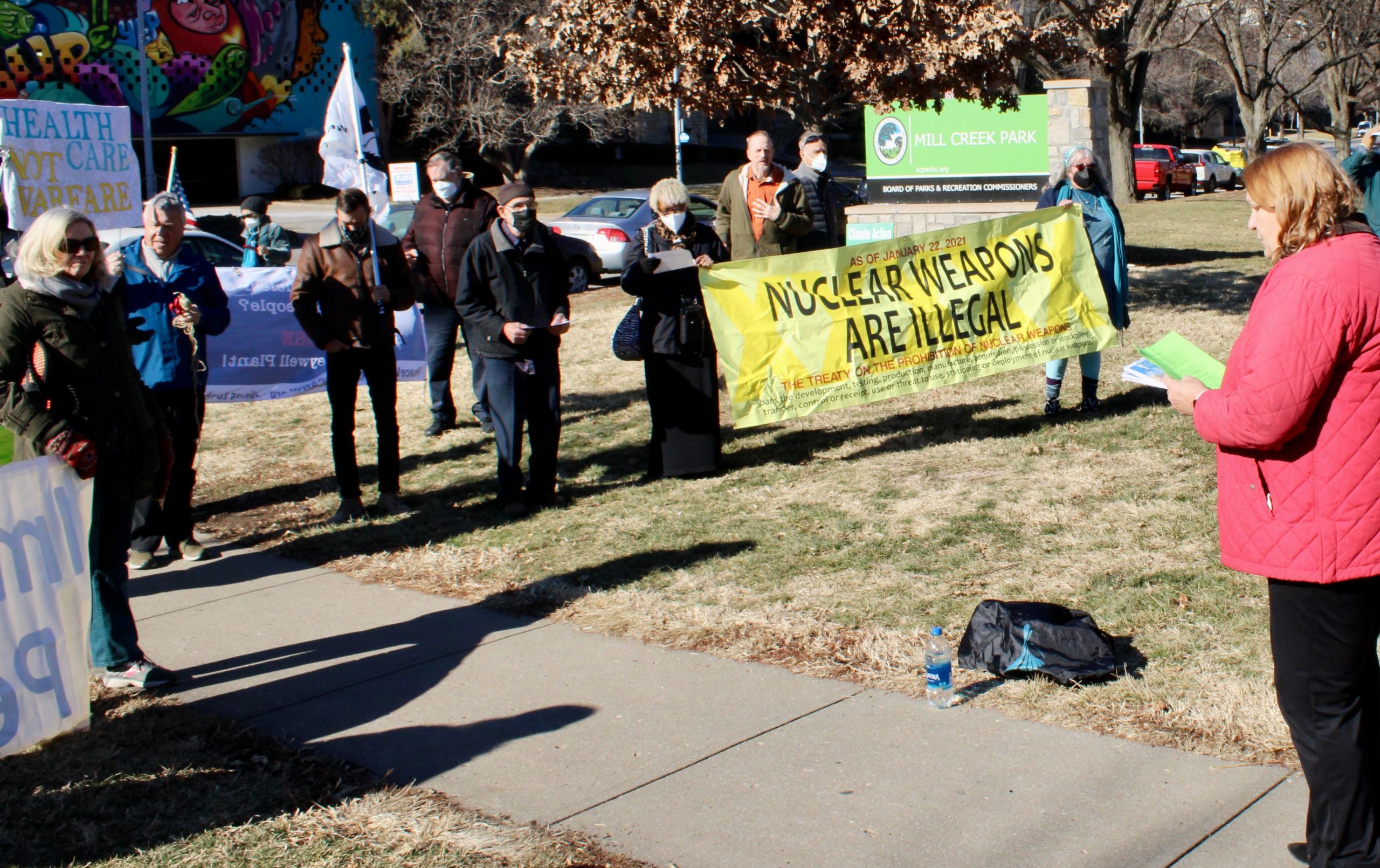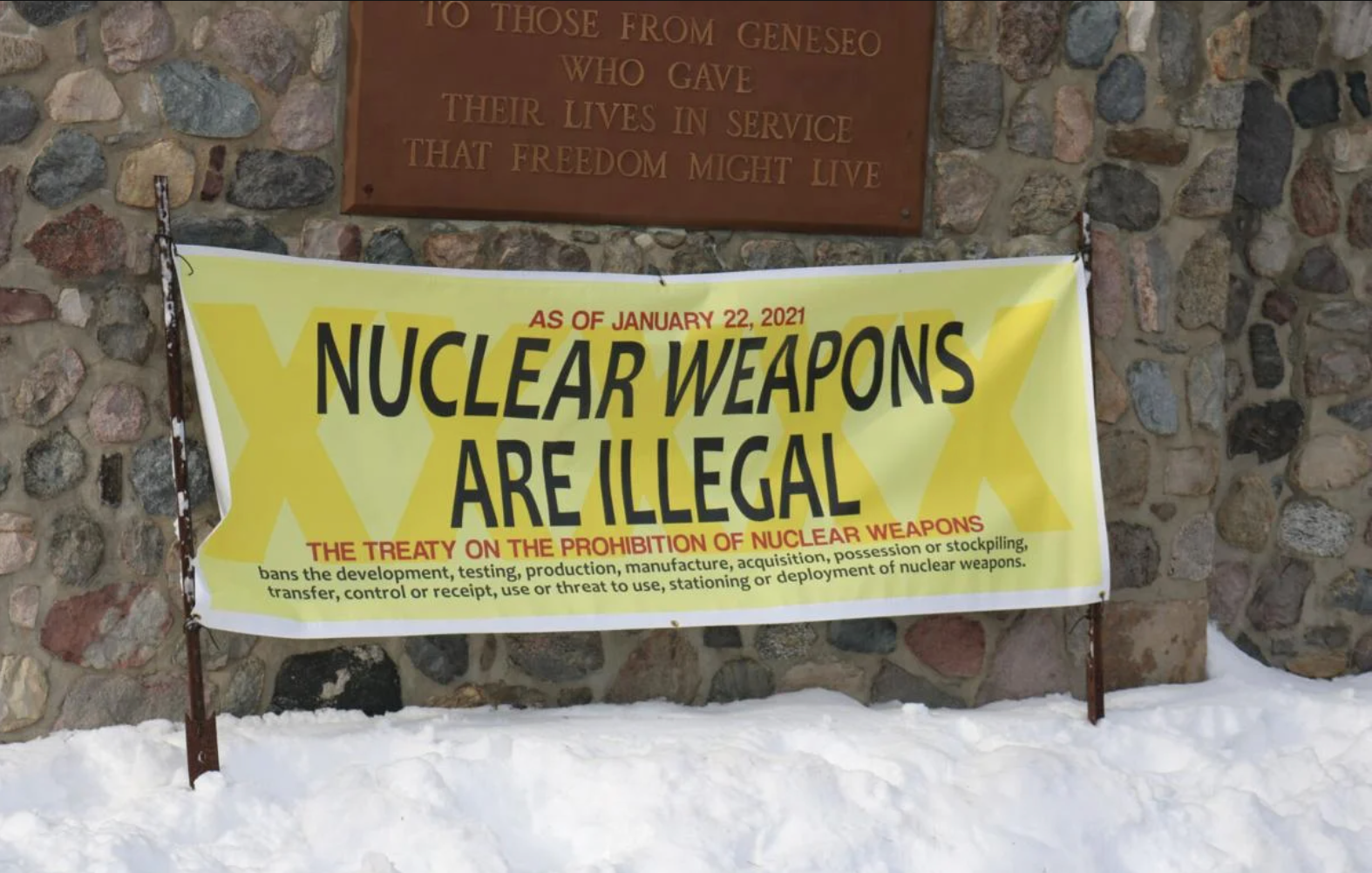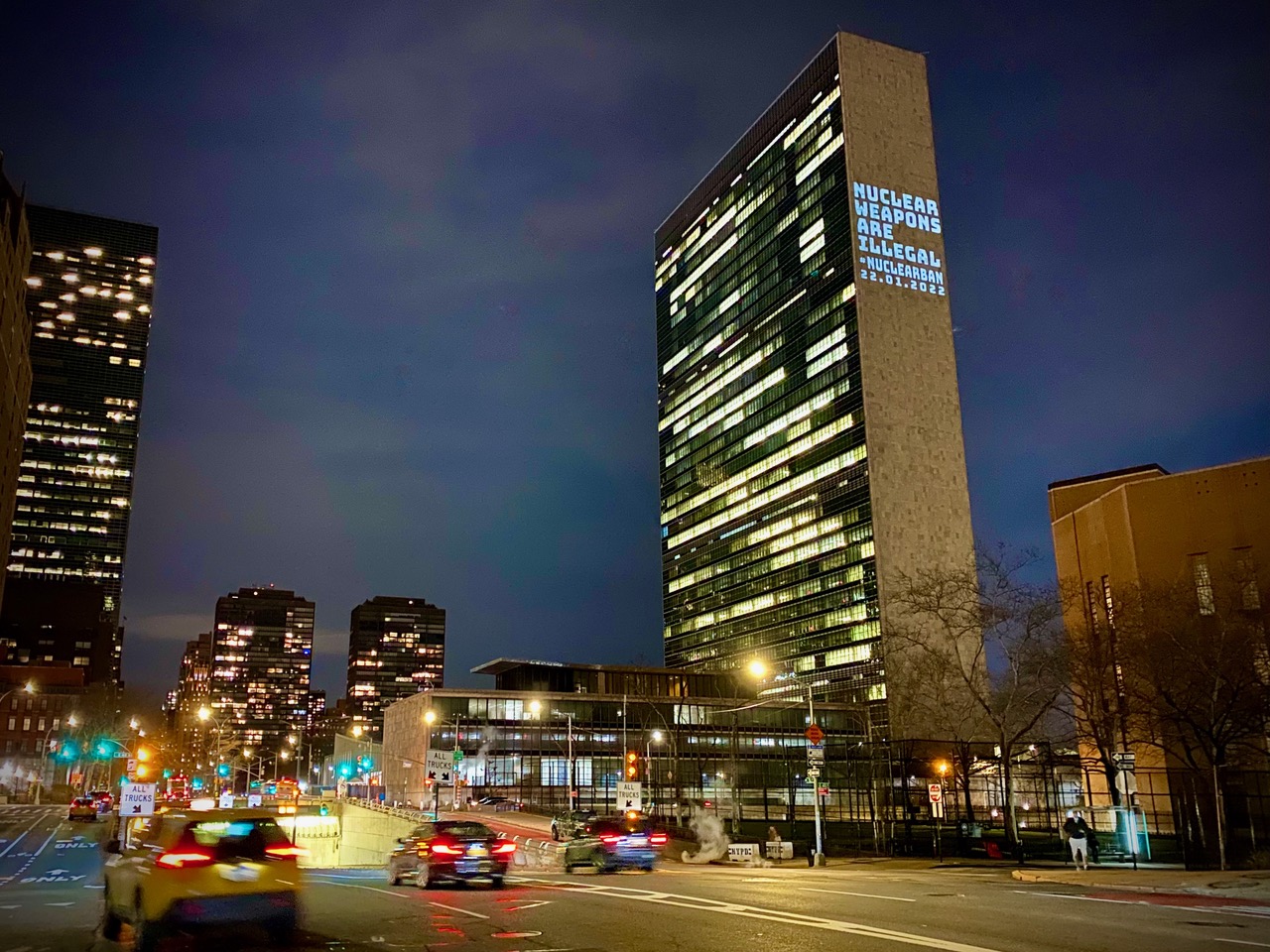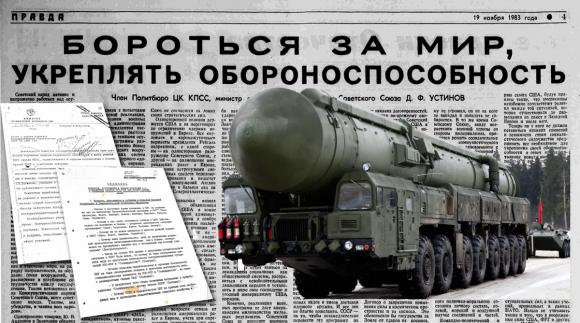Trump talk on nuke testing turns focus to New Mexico’s role in decades of blasts
Jay Coghlan, executive director of the nuclear watchdog group Nuclear Watch New Mexico, said Wright’s comments “somewhat” quelled his initial concerns about a renewed explosive nuclear testing program.
But he said claims Russia and China may be conducting small-scale tests known as hydronuclear tests — banned by the Comprehensive Nuclear Test Ban Treaty, of which the United States, Russia and China are all signatories — continue to give him pause. He fears rumors about the low-yield tests in other nations could be used to justify a domestic return to testing.
“That, in effect, would give permission to the U.S. [to resume testing],” Coghlan said. “But that would be in violation of the norm of the CTBT.”
Three decades removed from the United States’ last nuclear test, a testing regimen would likely be expensive and time-consuming to start up, Coghlan argued, and could prompt other nuclear powers to follow suit.
It seems likely Russia, at least, would: Following Trump’s post, Russian President Vladimir Putin announced if the United States resumed explosive nuclear testing, the Eastern European nation would follow.
“Then everybody else is going to do it, or virtually everybody else will do it, every other nuclear weapons power,” Coghlan said. “I could just see India and Pakistan champing at the bit to test. And then, of course, there’s North Korea and China.”
By Alaina Mencinger amencinger@sfnewmexican.com | November 30, 2025 santafenewmexican.com
It might not have as reverent a name as the Trinity Test or a litany of films made about it. But Project Gnome, a 1961 explosive nuclear test conducted near Carlsbad, is a relic of a bygone era in New Mexico and beyond.
In the 47 years between the Trinity Test and the end of the United States’ explosive nuclear testing in 1992, the nation would perform more than 1,000 such tests — more than any other nuclear nation — with most conducted in Nevada.
New Mexico might not have been the center of the nation’s testing efforts post-Trinity, which marked its 80th anniversary this year, but the state still played a role: Researchers from Sandia National Laboratories and Los Alamos National Laboratory helped design and conduct testing elsewhere, including at the Nevada Test Site and in the Marshall Islands.
Most Democrats and one-third of Republicans think it’s likely the U.S. will get into a nuclear war in the next decade
A new YouGov poll on nuclear weapons finds that nearly half of Americans believe it’s likely the U.S. will get into a nuclear war in the coming decade, and most are worried about personally experiencing a nuclear war. A majority believe nuclear weapons are making the world less safe, but opinions are mixed on whether the U.S. should dismantle all of its nuclear weapons.
By: Jamie Ballard| November 26, 2025 today.yougov.com
46% of Americans think it’s likely the U.S. will get into a nuclear war within the next 10 years; 37% think this is not very or not at all likely. 57% of Democrats and 37% of Republicans think this is likely.
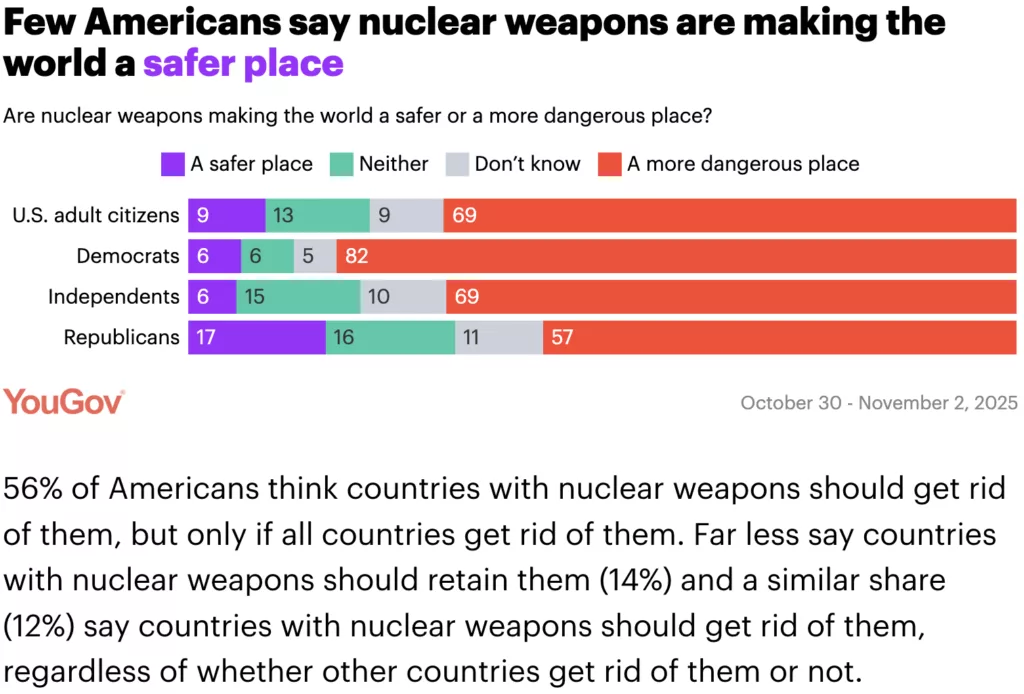
Department of Energy Seeks to Eliminate Radiation Protections Requiring Controls “As Low As Reasonably Achievable”
An internal Department of Energy (DOE) memorandum eliminates worker and public radiation protection rules known “As Low As Reasonably Achievable” (ALARA). This fundamental departure from decades of accepted health physics practices is being promoted by senior DOE political appointees with little background in health or radiation control. It is marked as “URGENCY: High” under the auspices of the DOE Deputy Secretary, the Under Secretary for Science, and the Administrator of the National Nuclear Security Administration. The memorandum awaits the final signature of DOE Secretary Chris Wright.
The memo’s stated goal is to:
“…remove the ALARA principle from all DOE directives and regulations, including DOE Order 458.1, Radiation Protection of the Public and the Environment, NE [Office of Nuclear Energy] Order 458.1, Radiation Protection of the Public, and, upon completion of the rulemaking process, 10 CFR [Code of Federal Regulations] 835, Occupational Radiation Protection.” [1]
It follows the playbook of the Heritage Foundation’s Project 2025, which called for:
“Set[ting] clear radiation exposure and protection standards by eliminating ALARA (“as low as reasonably achievable”) as a regulatory principle and setting clear standards according to radiological risk and dose rather than arbitrary objectives.” [2]
Lab Chromium Contamination Confirmed on San Ildefonso Pueblo Land
Comprehensive Cleanup Needed Instead of More Nuclear Weapons
The New Mexico Environment Department has announced:
“A toxic chromium plume from Los Alamos National Laboratory has spread beyond Lab boundaries onto Pueblo de San Ildefonso land for the first time, with contamination exceeding state groundwater standards… These new results are conclusive evidence that the U.S. Department of Energy’s efforts to contain the chromium plume have been inadequate.”
In reality, chromium groundwater contamination probably migrated beyond the LANL/San Ildefonso Pueblo boundary long ago, with past Lab maps of the plume “magically’ stopping at the border. In the past, tribal leadership has commented that it was fortunate that the contamination stopped there, but that any future indications of groundwater contamination on Pueblo land could have serious consequences. The San Ildefonso Pueblo is a sovereign Native American tribal government.
As late as the late 1990s the Lab was falsely claiming that groundwater contamination was impossible because underlying volcanic tuff is “impermeable.” [1] This ignored the obvious fact that the Parajito Plateau is heavily seismically fractured, providing ready pathways for contaminant migration to deep groundwater. By 2005 even LANL acknowledged that continuing increasing contamination of the regional aquifer is inevitable.[2] Some 300,000 northern New Mexicans rely upon the aquifer for safe drinking water. The potential serious human health effects (including cancer) caused by chromium contamination was the subject of the popular movie Erin Brockovich.
LANL chromium plume spreads onto San Ildefonso Pueblo land, NMED says
Nuclear Watch New Mexico executive direcor Jay Coghlan sees PF-4 as being a bigger scale — and having bigger risks — than the other aging buildings.
“PF-4 is not unique in being old,” Coghlan said. “However, PF-4 is totally unique in currently being the only facility that can process large amounts of plutonium … particularly including plutonium pit production. I think, in part, that’s why the Safety Board focuses more on PF-4 than, to my knowledge, than any other single individual facility.”
By:Patrick Lohmann | November 13, 2025 sourcenm.com
An underground plume of toxic chromium has spread from Los Alamos National Laboratory to Pueblo de San Ildefonso land, state Environment Department officials announced Thursday.
The discovery marks the first time the plume has been detected within the pueblo boundaries, officials said in a news release, though they added the plume’s spread does not pose imminent threats to drinking water in the pueblo or in Los Alamos County. That’s because the plume is not near any known private or public wells, officials said.
Long-term ingestion of hexavalant chromium can cause serious health problems or increase risk of certain cancers.
US Stands Alone Defying UN Vote on Nuclear Test Ban Treaty
Could the LDS Church end an ongoing nuclear weapons project? These veteran activists think so.
By Thalif Deen, Inter Press Sevice | November 12, 2025 ipsnews.net
UNITED NATIONS, Nov 12 2025 (IPS) – The US took another step backward –to break ranks with the United Nations– when it voted against a draft resolution calling for the entry into force of the Comprehensive Nuclear-Test-Ban Treaty (CTBT).
The negative vote followed an announcement by President Trump last month that the US plans to resume nuclear testing after a 33-year hiatus. The US stood alone on the UN vote, which was supported by almost all member States in the General Assembly’s First Committee.
The resolution was adopted by an overwhelming majority: with 168 votes in favor, with one against (United States) and 3 abstentions (India, Mauritius, Syria).
During Trump’s first term, the US abstained on the vote. And in other years they had been voting in favour.
Jackie Cabasso, Executive Director, Western States Legal Foundation, which monitors and analyzes U.S. nuclear weapons programs and policies, told IPS the chaos and uncertainty arose from Trump’s factually-challenged social media post that “because of other countries testing programs, I have instructed the Department of War to start testing our Nuclear Weapons on an equal basis.”
The U.S. government’s first ever “No” vote, on the annual UN resolution in support of the Comprehensive Test Ban Treaty (CTBT), raises further troubling questions about U.S. intentions.
Harking to the MX, Utahns call on LDS Church President Oaks to speak out against nuclear missile being developed in Utah
Could the LDS Church end an ongoing nuclear weapons project? These veteran activists think so.
THE SALT LAKE TRIBUNE | November 9, 2025 sltrib.com
Decades ago, peace activists helped keep a major nuclear weapons system out of Utah with help from key figures, chiefly Spencer W. Kimball, then the president of The Church of Jesus Christ of Latter-day Saints.
Now some of those same individuals are calling on the church’s newly ascended president, Dallin H. Oaks, to follow in his predecessor’s footsteps and speak out against the federal government’s development of a new generation of nuclear missile, known as Sentinel, partly in the Beehive State.
“The arms race continues,” the group of 12 Utahns and one former resident write in a letter mailed to church headquarters in early October, “and a new moral challenge faces” the leaders of the Utah-based faith.
Nuclear Weapons Issues & The Accelerating Arms Race: November 2025
Nuclear weapons:
The government shutdown has impact:
National Nuclear Security Agency confirms 152 furloughed at offices in Albuquerque, Los Alamos
Only 14 employees remain at the two sites By: Danielle Prokop-October 22, 2025
The NNSA confirmed 152 New Mexico employees charged with overseeing national laboratories’ nuclear weapons work were furloughed on Oct. 20, 2025. (Courtesy of NNSA)
The federal government this week sent home more than 150 federal New Mexico employees charged with overseeing national laboratories’ nuclear weapons work, with only 14 employees across two sites remaining at work, the National Nuclear Security Agency confirmed to Source NM.
The furloughs include 71 employees at NNSA’s Los Alamos field office and 81 at the Sandia National Laboratories location, NNSA Deputy Director of Communications Laynee Buckels told Source NM in an email. Seven employees remain at each site, working without pay, she said.
The field offices are responsible for “ensuring compliance with federal contracts to manage and operate the national security assets,” according to the NNSA website
To date there doesn’t appear to be furloughs at LANL, whose employees technically work for a contractor rather than the federal government. Congress is not furloughed, but Speaker Mike Johnson has kept the House out of session. As a result, legislation has come to a screeching halt.
Los Alamos’ plutonium facility safety systems need improvement, oversight board says
Nuclear Watch New Mexico executive direcor Jay Coghlan sees PF-4 as being a bigger scale — and having bigger risks — than the other aging buildings.
“PF-4 is not unique in being old,” Coghlan said. “However, PF-4 is totally unique in currently being the only facility that can process large amounts of plutonium … particularly including plutonium pit production. I think, in part, that’s why the Safety Board focuses more on PF-4 than, to my knowledge, than any other single individual facility.”
By Alaina Mencinger amencinger@sfnewmexican.com | November 7, 2025 santafenewmexican.com
An independent oversight agency wants to see improved safety systems at the facility at the heart of Los Alamos National Laboratory’s plutonium pit mission: PF-4.
The Defense Nuclear Facilities Safety Board reported what it believes to be gaps in a safety analysis drafted for PF-4 and delays in upgrades to safety systems in a letter last month to Energy Secretary Chris Wright.
“Maintaining momentum for these safety infrastructure projects is more important in light of the issues with the safety analysis,” the board wrote in the letter dated Oct. 10. It was signed by former acting chairman Thomas Summers.
LANL Prioritizes Plutonium “Pit” Bomb Core Production Over Safety
The independent Defense Nuclear Facilities Safety Board recently released its Review of the Los Alamos Plutonium Facility Documented Safety Analysis. It concluded that:
“While LANL facility personnel continue to make important upgrades to the Plutonium Facility’s safety systems, many of those projects have encountered delays due to inconsistent funding and other reasons. DOE and LANL should consider prioritizing safety-related infrastructure projects to ensure that the Plutonium Facility safety strategy adequately protects the public, as the facility takes on new and expansive national security missions.” (Page 24)
In early October 2024, the Department of Energy’s semi-autonomous National Nuclear Security Administration (NNSA) announced with great fanfare that the Los Alamos Lab had produced its first “diamond stamped” plutonium pit for the nuclear weapons stockpile. Tens of billions of taxpayers’ dollars have been sunk into LANL’s long delayed and over budget pit production program. Given no further announcements, it is not currently known whether or not the Lab is meeting its congressionally required production goals. Endemic nuclear safety problems have long been an intractable issue, at one point even forcing a three-year halt to plutonium operations at LANL’s Plutonium Facility-4 (“PF-4”).
In its recent Review, the Safety Board reported:
“The [2009] Plutonium Facility safety basis described very large potential [radioactive] dose consequences to the public following seismic events…. DOE committed to upgrade and seismically qualify the ventilation system, with a particular focus on a specific ventilation subsystem…”
“As the only facility in the DOE complex that can process large quantities of plutonium in many forms, [PF-4] represents a unique capability for the nation’s nuclear deterrent. The Board has long advocated for the use of safety-related active confinement systems in nuclear facilities for the purposes of confining radioactive materials…Passive confinement systems are not necessarily capable of containing hazardous materials with confidence because they allow a quantity of unfiltered air contaminated with radioactive material to be released from an operating nuclear facility following certain accident scenarios. Safety related active confinement ventilation systems will continue to function during an accident, thereby ensuring that radioactive material is captured by filters before it can be released into the environment… (Page 2, bolded emphases added)
AP: Trump appears to suggest the US will resume testing nuclear weapons for first time in 30 years
“For Trump, who has cast Russia as a “paper tiger” for failing to swiftly subdue Ukraine, the message is that Russia remains a global military competitor, especially on nuclear weapons, and that Moscow’s overtures on nuclear arms control should be acted on.”
By MICHELLE L. PRICE and CHRIS MEGERIAN | October 30, 2025 apnews.com
BUSAN, South Korea (AP) — President Donald Trump appeared to suggest the U.S. will resume testing nuclear weapons for the first time in three decades, saying it would be on an “equal basis” with Russia and China.
The Kremlin pointed out that a global ban on nuclear tests has remained in place, but warned that if any country resumes nuclear testing Russia would follow suit.
There was no indication the U.S. would start detonating warheads, but Trump offered few details about what seemed to be a significant shift in U.S. policy.
He made the announcement on social media minutes before he met with Chinese leader Xi Jinping on Thursday in South Korea. He offered little clarity when he spoke to reporters later aboard Air Force One as he flew back to Washington.
The U.S. military already regularly tests its missiles that are capable of delivering a nuclear warhead, but it has not detonated the weapons since 1992. The Comprehensive Nuclear Test Ban Treaty, which the U.S. signed but did not ratify, has been observed since its adoption by all countries possessing nuclear weapons, North Korea being the only exception.
REUTERS: Trump tells Pentagon to immediately resume testing US nuclear weapons
“Russia – which tested a new nuclear-powered cruise missile on October 21, held nuclear readiness drills on October 22 and tested a new nuclear-powered autonomous torpedo on October 28 – said it hoped Trump had been properly informed that Moscow had not tested a nuclear weapon itself.”
By Trevor Hunnicutt, Ismail Shakil and Kanishka Singh | October 30, 2025 reuters.com
VIEW THE RECORDING: Santa Fe Ecumenical Conversations Towards Nuclear Disarmament at Santa Maria de la Paz Catholic Community – Monday, October 27
Archbishop John C. Wester and NukeWatch New Mexico presented a special evening at Santa Maria de la Paz Catholic Community on Monday, October 27, from 6:00 to 8:00 p.m. MT. Following a presentation from NukeWatch executive director Jay Coghlan on U.S. nuclear weapons “modernization,” the Archbishop shared reflections from his pastoral letter, Living in the Light of Christ’s Peace, and speak about the importance of dialogue and hope in working toward nuclear disarmament.
View the recording at https://www.youtube.com/watch?v=9LFmQzMoJds&t=1s
Trump Orders Nuclear Weapons Testing for New Nuclear Arms Race
New Plutonium “Pit” Bomb Cores at Los Alamos Lab Could Make It Real
Just minutes before meeting with Chinese President Xi Jinping, Trump posted on his Truth Social media platform that “Because of other countries testing programs, I have instructed the Department of War to start testing our Nuclear Weapons on an equal basis. That process will begin immediately.” House Speaker Mike Johnson soon followed on CNN saying, “I think it is an obvious and logical thing to ensure that our weapons systems work.”
No other countries are currently testing nuclear weapons (the last was by North Korea in 2017). Further, any nuclear weapons tests by the U.S. would be performed by the Department of Energy (whose last test was in 1992), not the Department of War (until recently the Department of Defense). Trump was likely referring to Vladimir Putin’s recent claims of a new nuclear powered cruise missile and a tsunami-causing nuclear-armed torpedo that could threaten America’s coastal cities. In addition, China is dramatically expanding its own fleet of intercontinental ballistic missiles.
But central to all this is the U.S.’ own $2 trillion “modernization” program that will rebuild every nuclear warhead in the planned stockpile with new military capabilities and produce new-design nuclear weapons as well. This so-called modernization program will also build new nuclear weapons production facilities expected to be operational until ~2080, and buy new missiles, subs, and bombers from the usual rich defense contractors, all to keep nuclear weapons forever.
‘Nuclear weapons are blasphemous’: Archbishop Wester continues disarmament push with talk
This event was organized by the “Santa Fe Ecumenical Conversations Towards Nuclear Disarmament” group at the Santa Maria de la Paz parish near the Santa Fe Community College. They kindly invited NukeWatch to speak before Archbishop Wester for what turned out to be a wonderful event. The full recording can be viewed at https://www.youtube.com/@SMDLP/streams
By Cormac Dodd cdodd@sfnewmexican.com | October 28, 2025 santafenewmexican.com
Despite saying he has received a somewhat muted response from the local faithful, Santa Fe’s Catholic archbishop is still pushing nuclear disarmament as vital to humanity’s spiritual well-being and continued existence.
“I think nuclear weapons are blasphemous, because I think nuclear weapons are humanity’s attempt to build a Tower of Babel, an attempt to eat from the apple of the tree of the Garden of Eden, to become like God, to become gods,” Archbishop John C. Wester said in a roughly 30-minute address at Santa Maria de la Paz Catholic Church south of Santa Fe.
“In humility, we must avoid inventing anything that, in a matter of hours, can destroy what God has created,” the leader of the Archdiocese of Santa Fe continued. “The story of Adam and Eve is archetypal, I think: When human beings try to become as God, they lose the Garden of Eden and they must endure the cruel reality of paradise lost.”
The archbishop’s comments followed a journey he undertook to Japan on the 80th anniversary of the U.S. military’s decision to drop atomic bombs on Hiroshima and Nagasaki toward the end of World War II. He spoke in front of an audience of about 50 people — who gave Wester a standing ovation — at Monday’s event
In a Looming Nuclear Arms Race, Aging Los Alamos Faces a Major Test
The lab where Oppenheimer developed the atomic bomb is the linchpin in the United States’ effort to modernize its nuclear weapons. Yet the site has contended with contamination incidents, work disruptions and old infrastructure.
By Alicia Inez Guzmán | October 28, 2025 The New York Times nytimes.com
In a sprawling building atop a mesa in New Mexico, workers labor around the clock to fulfill a vital mission: producing America’s nuclear bomb cores.
The effort is uniquely challenging. Technicians at Los Alamos National Laboratory must handle hazardous plutonium to create the grapefruit-size cores, known as pits. They do so in a nearly 50-year-old building under renovation to address aging infrastructure and equipment breakdowns that have at times disrupted operations or spread radioactive contamination, The New York Times found.
Now, the laboratory is under increasing pressure to meet the federal government’s ambitions to upgrade the nation’s nuclear arsenal. The $1.7 trillion project includes everything from revitalizing missile silos burrowed deep in five states, to producing new warheads that contain the pits, to arming new land-based missiles, bomber jets and submarines.
But the overall modernization effort is years behind schedule, with costs ballooning by the billions, according to the Congressional Budget Office. In 2018, Congress charged Los Alamos with making an annual quota of 30 pits by 2026, but by last year it had produced just one approved for the nuclear stockpile. (Officials have not disclosed whether more have been made since then.)
*The featured image differs from the article photo due to usage rights.
Why Putin’s ‘invincible’ nuclear-powered missile is more likely to become a disastrous ‘flying Chernobyl’ for Russia
The US abandoned efforts to build nuclear-powered missile weapons during the 1950s arms race with the Soviet Union as a nuclear-powered missile would effectively be a huge radiation risk.
Jeffrey Lewis, a nuclear nonproliferation expert at Middlebury College, described it as a “tiny flying Chernobyl,” referencing the Soviet power plant that melted down and covered a 1,600-mile area with toxic radiation…While Lewis believes the Burevestnik is only capable of subsonic speed and easy to intercept, he warned that Russia’s ambition poses a return to the Cold War era.
“NATO aircraft could intercept it. The problem is that Burevestnik is yet another step in an arms race that offers no victory for either side,” he wrote on X.
By Ronny Reyes | October 28, 2025 nypost.com
Russian strongman Vladimir Putin’s latest threats that Moscow is preparing to deploy its new “invincible” nuclear-powered cruise missile has drawn a rebuke from President Trump and a reminder of America’s own nuclear might.
But experts say the Burevestnik missile could end up being more like a disastrous “flying Chernobyl” for Russia — and proves Putin is actually nervous about the possibility of the US giving Tomahawk cruise missiles to Ukraine.
George Barros, of the Washington-based Institute for the Study of War, described Putin’s ominous Sunday announcement as a form of fear mongering from a Kremlin afraid that the US could give Kyiv a much more conventional weapon — the tried and true Tomahawk.
Russia tested new nuclear-powered Burevestnik cruise missile
“For Trump, who has cast Russia as a “paper tiger” for failing to swiftly subdue Ukraine, the message is that Russia remains a global military competitor, especially on nuclear weapons, and that Moscow’s overtures on nuclear arms control should be acted on.”
By Guy Faulconbridge and Lidia Kelly Tim Balk | October 26, 2025 reuters.com
- Russia tests nuclear-capable Burevestnik missile
- Missile flew for 14,000 km, 15 hours
- Putin says it can pierce any missile defences
Trump Administration Providing Weapons Grade Plutonium to Sam Altman
“If there were adults in the room and I could trust the federal government to impose the right standards, it wouldn’t be such a great concern, but it just doesn’t seem feasible.”
By: Joe Wilkins | October 24, 2025 futurism.com
With the economy the way it is these days, it’s nice to have a little walking around money.
Donald Trump certainly thinks so. Since his return to the White House, the president has labeled 440 federal properties for possible sale, leased 13.1 million acres of public land for strip mining, and held a fire sale for satellites developed by NASA’s Jet Propulsion Lab.
In one of his wildest money moves to date, the Financial Times reports that Trump is now offering companies access to plutonium from America’s arsenal of cold war nuclear missiles.
On Tuesday, the US Department of Energy (DOE) launched an application for interested parties to apply for access to a maximum of 19 metric tonnes — a little under 42,000 pounds — of weapons-grade plutonium, which has long been a key resource undergirding the US nuclear arsenal.
One of the companies anticipated to receive shipments of the fissile isotope from the DOE is Oklo, a “nuclear startup” backed — and formerly chaired — by OpenAI CEO Sam Altman. Earlier in October, Oklo was one of four US companies chosen by the DOE to join a new pilot program meant to rush the testing and approval of experimental reactor designs.
As the FT reports, we won’t know for certain until December 31, when the DOE announces the companies selected to purchase the plutonium, but it’s likely Oklo will be among them. That’s stirring up plenty of anxiety throughout the scientific community, who say the relaxed approach to nuclear development is a major cause for alarm.
“If there were adults in the room and I could trust the federal government to impose the right standards, it wouldn’t be such a great concern, but it just doesn’t seem feasible,” Edwin Lyman, a physicist with the Union of Concerned Scientists told the FT.
U.S. Agency That Protects Nuclear Arsenal to Furlough Workers
Jay Coghlan, the executive director of Nuclear Watch New Mexico, a private group that monitors the agency, said it was unclear if the furloughs would have any immediate effect on nuclear safety. “As a baseline, the nuclear safety officers have always been understaffed. There is simply not enough federal oversight as is. And then you’re talking about furloughing more,” he added.
By Tim Balk | October 17, 2025 nytimes.com
![]() The National Nuclear Security Administration said 1,400 workers would be affected by Monday.
The National Nuclear Security Administration said 1,400 workers would be affected by Monday.
Nuclear weapons safety oversight in decline with Trump, Biden inaction
The lone independent federal agency responsible for ensuring safety at U.S. nuclear weapons sites — including Hanford in Washington state — will lose its ability to issue recommendations for safer work by January if the Trump administration doesn’t replenish its board, which this month dwindles to one member.
By Patrick Malone | October 15, 2025 seattletimes.com
The Defense Nuclear Facilities Safety Board ensures adequate public health and worker safety by scrutinizing hazardous work conducted by the U.S. Department of Energy and its contractors that produce and maintain the nuclear arsenal. If the Trump administration and Congress don’t move quickly to populate the board, it will be incapable of issuing formal safety recommendations to the Energy Department, according to a report last month from the Government Accountability Office, Congress’ investigative arm.
If the board is without a quorum of at least three members for a year, “the agency would essentially be able to offer only nonbinding advice to DOE,” according to the report.
“The whole idea of having the board in place is to provide the optics in addition to the substance,” Nathan Anderson, a Washington state-based director in the GAO’s natural resources division, told The Seattle Times.
The board does not have regulatory or enforcement authorities, but its advice carries significant weight and cannot be easily dismissed or disregarded, the GAO report states. The board’s recommendations to the U.S. secretary of energy are published for public comment, and the secretary must respond in writing. The board also reports each year to selected congressional committees on its recommendations to the Energy Department and any outstanding safety problems.
FULL ORIGINAL ARTICLE (SEATTLE TIMES)
YOU CAN HELP SAVE THE DNFSB TODAY:
Continue reading
New Article about “Participatory Democracy in Action” Describes WIPP Permit Negotiations
Thanks to our friends at Concerned Citizens for Nuclear Safety for this article:
In an essay for NYU’s Democracy Project, David F. Levi, a former federal judge and director emeritus of the Bolch Judicial Institute at Duke Law, reflected on the negotiations he facilitated in New Mexico about the renewal of the hazardous waste permit for the Waste Isolation Pilot Plant (WIPP), a deep geologic repository for plutonium-contaminated waste generated in the fabrication of nuclear weapons. Judge Levi’s essay is entitled “Participatory Democracy in Action.” He wrote:
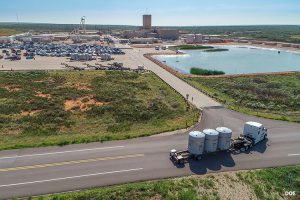 “A couple of years ago, I was asked to mediate a dispute between the U.S. Department of Energy (DOE) and the New Mexico Environment Department (NMED) concerning the renewal of a required state permit for DOE’s Waste Isolation Pilot Plant (WIPP), the nation’s only deep underground nuclear waste storage facility, located outside of Carlsbad, New Mexico. I thought I could help the two government entities but quickly came to realize that under the mediation procedures followed by New Mexico, the mediation would also involve citizen groups whose ultimate concurrence was essential to any complete resolution. This was entirely new to me.
“A couple of years ago, I was asked to mediate a dispute between the U.S. Department of Energy (DOE) and the New Mexico Environment Department (NMED) concerning the renewal of a required state permit for DOE’s Waste Isolation Pilot Plant (WIPP), the nation’s only deep underground nuclear waste storage facility, located outside of Carlsbad, New Mexico. I thought I could help the two government entities but quickly came to realize that under the mediation procedures followed by New Mexico, the mediation would also involve citizen groups whose ultimate concurrence was essential to any complete resolution. This was entirely new to me.
“In this case, there were seven such citizen groups entitled to participate and representing a variety of points of view. There was one group representing some of the government and business leaders of the town of Carlsbad who favored permit renewal on terms ensuring the continued long-term operation of WIPP. There were six groups expressing a variety of concerns about nuclear waste coming to New Mexico. They sought a more restrictive permit.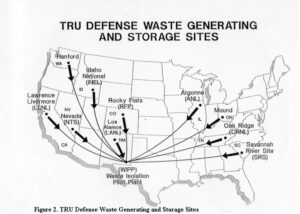
“To my astonishment, over the course of four full days, we worked through the multitude of issues and came to complete agreement. Something magical had happened. Thanks to the goodwill of the DOE and its contractor, the remarkable daily attendance and attentiveness of the NMED Secretary and the measured and well-informed way in which the various citizen groups made their points, we were able to find consensus and craft permit language that was acceptable to everyone.
“For me, as a former judge and mediator, the experience was thrilling. It was an experience of participatory democracy in action that made me proud of our fellow citizens and our government. Three aspects of the experience stand out. First, everyone in the room had taken responsibility for the way in which our nation’s only deep underground nuclear storage facility would be operated for the next 10 years. The citizen participants were not just making suggestions; they were assuming many of the attributes of decision makers. Second, all participants were advocating, compromising, and collaborating on behalf of what they saw as the public interest. These are the essential skills of democracy—the civic virtues so central to the Founders’ vision of what would make democracy work in America—and they require practice. Finally, over four days around a table, the citizens were able to take the measure of the DOE and NMED representatives. They came to realize, as I did, that these public servants, as well as the DOE contractor, were very well-informed, experienced, and intentioned. The government representatives had a similar experience of coming to appreciate the citizen questions and points of view. A government that relies on trust needs this kind of interaction to maintain that trust.
“It seems our democracy would be strengthened if we could extend the benefits of this kind of participatory structure to other areas of our legal and regulatory systems.”
“In Democracy in America, Alexis de Tocqueville made some of these points in reference to the jury trial in civil cases. He emphasized the importance of the civil jury trial as a free “public school” [https://contextus.org/Tocqueville,_Democracy_in_America_(1835),_Book_I,_Chapter_XVI_Causes_Mitigating_Tyranny_In_The_United_States_(Part_II).13?ven=Gutenberg&lang=en]  educating jurors in the democratic virtues and skills and teaching them to assume responsibility. In the same vein, every trial judge I know would attest to the importance of the jury experience for building confidence in the courts. After a trial, judges often hear words of gratitude from jurors who are deeply impressed by the legal process and are honored to have participated despite their initial dismay at being called to jury service. Sadly, the number of jury trials has diminished, particularly in federal court. Reversing that trend is a worthy goal, particularly for a branch of government that depends so heavily on public confidence.
educating jurors in the democratic virtues and skills and teaching them to assume responsibility. In the same vein, every trial judge I know would attest to the importance of the jury experience for building confidence in the courts. After a trial, judges often hear words of gratitude from jurors who are deeply impressed by the legal process and are honored to have participated despite their initial dismay at being called to jury service. Sadly, the number of jury trials has diminished, particularly in federal court. Reversing that trend is a worthy goal, particularly for a branch of government that depends so heavily on public confidence.
“As a final reflection: any persons involved as litigants will have an experience of the legal system. The experience can advance their sense of agency and participation, their ability to disagree civilly, and their trust in the courts. But how can these objectives be obtained when so many Americans cannot afford a lawyer? We can do so much better to provide understanding of and access to our justice system.”
The six New Mexico based non-governmental organizations were Citizens for Alternatives to Radioactive Dumping (CARD), Concerned Citizens for Nuclear Safety (CCNS), Conservation Voters New Mexico (CVNM), Nuclear Watch New Mexico, Southwest Alliance for a Safe Future (SAFE), and Southwest Research and Information Center (SRIC). The individual was Steve Zappe, a grandfather and former NMED WIPP Program Manager.
“A House of Dynamite” New Netflix Nuclear Catastrophe Film: Fiction, for Now
The reviews are rolling in for “A House of Dynamite,” which premiered in Europe earlier this month before coming to the U.S. on October 10th, with a full Netflix release scheduled for the 24th. Here’s the trailer, and see the schedule for Santa Fe theater showings here:
This Week! Santa Fe Theater Screenings for the Film “A House of Dynamite”
I attended one of these screenings last night, and I’ll let the professional critic reviews give the gist:
The Kathryn Bigelow thriller looks at what might happen if a ballistic missile were headed to the U.S. The director hopes the movie will start a conversation. New York Times: At Venice, ‘A House of Dynamite’ Is Scarier Than Most Horror Films
“The Netflix thriller captures from multiple perspectives the White House response to an unattributed missile launch headed for a major U.S. city in the harrowing 20 minutes until projected impact…”An unrelenting chokehold thriller so controlled, kinetic and unsettlingly immersive that you stagger out at the end of it wondering if the world will still be intact.” ‘A House of Dynamite’ Review: Idris Elba and Rebecca Ferguson in Kathryn Bigelow’s Precision-Tooled, Viscerally Unsettling Nail-Biter
“Told from the perspective of soldiers at a remote Alaskan missile base, staffers in the White House situation room, military officials at US Central Command (CENTCOM), and the president of the United States, the film weaves an overlapping timeline to show how the United States would respond to a missile attack…The film doesn’t want viewers to ask themselves how to thwart a nuclear attack on the United States. Rather, it wants the viewer to question the value of having nuclear weapons at all. ‘None of this makes sense,’ the President (Idris Elba) bemoans, ‘Making all these bombs and all these plans.'”
“A House of Dynamite is a terrifying examination of how terribly wrong things can go even with highly competent people in charge…But that’s also not necessarily the world we’re living in…The film shows why the worst can happen, even when competent, well-meaning people are trying to do the right thing.
But what if competence and decency are in short supply?” A House of Dynamite: Bigelow’s latest thriller shows why nuclear bombs are only part of the danger
This film left me reeling with tension and anxiety and exactly as the Times article titles it, is scarier than most horror films. Unlike ‘Oppenheimer,’ which largely glorified the invention of the atomic weapon, ‘A House of Dynamite’ makes it impossible to ignore the threat that nuclear weapons pose to our world. Working backwards from perspectives, and focused on how we can actually improve our odds of keeping this story a fictional one, here is what struck me most about this film:
-
-
Only one person decides what happens. But the real threat isn’t one reckless leader — it’s a reckless system. The final segment of the film features the “nuclear football” heavily, a briefcase containing launch procedures and options. In the United States, the president holds the sole and absolute authority to order the use of nuclear weapons. In the film, there are many voices in the President’s ear, but two primary perspectives quickly emerge after the defense fails and the ICBM remains inbound to its U.S. target: “One side advocates a retaliatory strike; the other, nothing. ‘It’s surrender or suicide,’ one adviser tells the President,” – thebulletin.org. The military aide carrying the nuclear football is tasked with providing the President the list of options if retaliation is chosen. An absolute must-read, Daniel Ellsberg’s book “The Doomsday Machine” breaks down many of the themes in the film with pure and terrifyingly honest account of Cold War-era nuclear strategy. In terms of launch authority, he describes how the inherent instability of the delegated command structure of the nuclear apparatus makes accidental or unwanted war an ever-present danger.
-
LANL tritium containers to head to Texas after last treatment
Four flanged tritium waste containers have been depressurized and transported to Los Alamos National Laboratory’s Weapons Engineering Tritium Facility, where they will be treated further before heading out-of-state for disposal.
By Alaina Mencinger amencinger@sfnewmexican.com | October 15, 2025 santafenewmexican.com
The containers’ final destination is Waste Control Specialists, a West Texas facility that handles the storage and disposal of radioactive waste.
The more than 1,300-acre facility in Andrews County is located on an approximately 14,000 acre property, which is sited on a thick clay formation which the company describes as “nearly impermeable.”
New documents have been added to the Los Alamos Legacy Cleanup Contract Electronic Public Reading Room.
All legacy cleanup documents required to be posted after April 30, 2018, are available on the site linked above.
For legacy cleanup documents that were posted prior to April 30, 2018, please visit the LANL electronic public reading room.
- Review, Notice of Completion of Off-Site Waste Shipments for Final Disposal, Activities 3.1.5, 3.1.8, and 3.3.4, Compliance Plan, Site Treatment Plan, Federal Facility Compliance Order Los Alamos National Laboratory [July 31, Aug. 21, 2025]
https://ext.em-la.doe.gov/GovFTPFiles/api/GetFiles/GetFile?fileName=EMID-703933_NMED_Review_STP_Shpmt_Jul_31_Aug_21_101525.pdf
Strong Political and Public Opposition Means Consolidated Interim Storage Facility (CISF) in NM “Impossible in the Near Future”
NEW UPDATE OCTOBER 10, 2025:
Holtec abandons plan to build New Mexico storage facility for spent nuclear fuel
This is excellent news. The Governor and state legislature (specifically Senator Jeff Steinborn and Representative McQueen) are to be commended for not allowing New Mexico to become the nation’s dumping ground for highly radioactive commercial spent fuel rods, especially when the Land of Enchantment has never had its own nuclear energy plant. Hard work from many New Mexicans made this happen.
So-called “interim” storage would never be interim when the federal government has failed for more than four decades to find a permanent repository for these lethal wastes. This also shows how hollow all the hype is about the claimed renaissance of nuclear power, when on the front end the industry can’t survive without taxpayer handouts, and on the back end can’t solve its radioactive waste problem.
Holtec’s quote that “New Mexico’s acquiescence is necessary” for interim storage to go forward is interesting, implying that we have to surrender as the nuclear colony that we are. Well, guess what, we didn’t surrender, and I predict you’ll see more of this. Moreover, whether you’re pro-nuclear or anti-nuclear, Holtec is an ethically questionable company, which is why the attorneys general of New Jersey and Massachusetts have sued it.
Adiós and good riddance, Holtec!
New York Times: Tax Break Scandal Leads to $5 Million Fine for N.J. Energy Company
SEE MORE:
Nuclear Weapons Issues & The Accelerating Arms Race: September 2025
Nuclear Weapons Update:
Putin has offered Trump a one-year extension of the numerical cap on strategic nuclear weapons in the new Strategic Arms Reduction Treaty which is 1,550 warheads (however, B52s are counted as one warhead while they can carry a dozen). New START expires in February 2026, which will be the first time the world will be without any nuclear arms control treaties since the mid-1970s. Trump has said it sounded like a good idea.
Note: New START ratification in 2010 provided the opportunity for Republicans in the Senate to attach the condition of $88 billion for nuclear weapons “modernization” that has since metastasized to ~$2 trillion. Nuclear disarmament must be prioritized as the ultimate goal over simply continued arms control.
A mere extension of the numerical cap would not involve Congressional ratification. The extension of New START’s numerical cap is in part to allow for a year in which to begin negotiations for a treaty replacement.
Plutonium Pit Production:
A draft plutonium pit production programmatic environmental impact statement is expected to be released next year in early 2026.
Accelerating Arms Race:
Is North Korea set to become world’s ‘fourth ICBM power’ after missile breakthrough? | Park Chan-kyong | South China Morning Post | September 11, 2025
A new era in North Korea’s missile programme may be dawning, as analysts warn of an imminent test launch of an intercontinental ballistic missile capable of carrying multiple warheads to the US mainland. Fresh from his appearance at China’s Victory Day parade in Beijing last week, North Korean leader Kim Jong-un personally oversaw the trial of a lighter, more robust solid-fuel ICBM engine, state media reported on Tuesday, touting the achievement as a “strategic” breakthrough.
Saudi Arabia signs a mutual defense pact with nuclear-armed Pakistan after Israel’s attack on Qatar | MUNIR AHMED & JON GAMBRELL | AP NEWS | September 18, 2025
DUBAI, United Arab Emirates (AP) — Pakistan’s defense minister says his nation’s nuclear program “will be made available” to Saudi Arabia if needed under the countries’ new defense pact, marking the first specific acknowledgment that Islamabad had put the kingdom under its nuclear umbrella.
Defense Minister Khawaja Mohammad Asif’s comments underline the importance of the pact struck this week between Pakistan and Saudi Arabia, which have had military ties for decades.
The move is seen by analysts as a signal to Israel, long believed to be the Middle East’s only nuclear-armed nation. It comes after Israel’s attack targeting Hamas leaders in Qatar last week killed six people and sparked new concerns among Gulf Arab nations about their safety as the Israel-Hamas war devastated the Gaza Strip and set the region on edge.
Russia suspected of helping North Korea build nuclear submarines, Seoul investigating | Park Chan-kyong | South China Morning Post | September 18, 2025
South Korea is investigating reports that Russia has supplied North Korea with nuclear submarine reactor modules, a move analysts see as highly plausible and one that could mark a breakthrough in Pyongyang’s decades-long push for a nuclear-powered navy… At the 8th Party Congress in January 2021, North Korea declared five core defence goals, including the development of nuclear-powered submarines and submarine-launched strategic nuclear weapons.
China Hardens Military Stance Against U.S. With Nuclear Weapons and Tough Talk | Brian Spegele | The Wall Street Journal| September 18, 2025
China played down its rapidly rising military might for years. In the past few weeks, Beijing has broadcast a steady drumbeat of firepower displays and muscular rhetoric, carrying an unmistakable warning for the U.S… Part of China’s confidence stems from the rapid growth of its firepower. The Pentagon estimates that China’s stockpile of nuclear warheads has more than doubled since 2020, alongside a growing array of options to launch those weapons, from mobile ground-launch systems to increasingly stealthy submarines.
Holtec Pulls Out of New Mexico Spent Nuclear Fuel Interim Storage Project
Holtec International has confirmed it is canceling plans to build a consolidated interim storage facility for spent nuclear fuel in southeastern New Mexico.
By Radwaste Solutions | October 9, 2025 ans.org
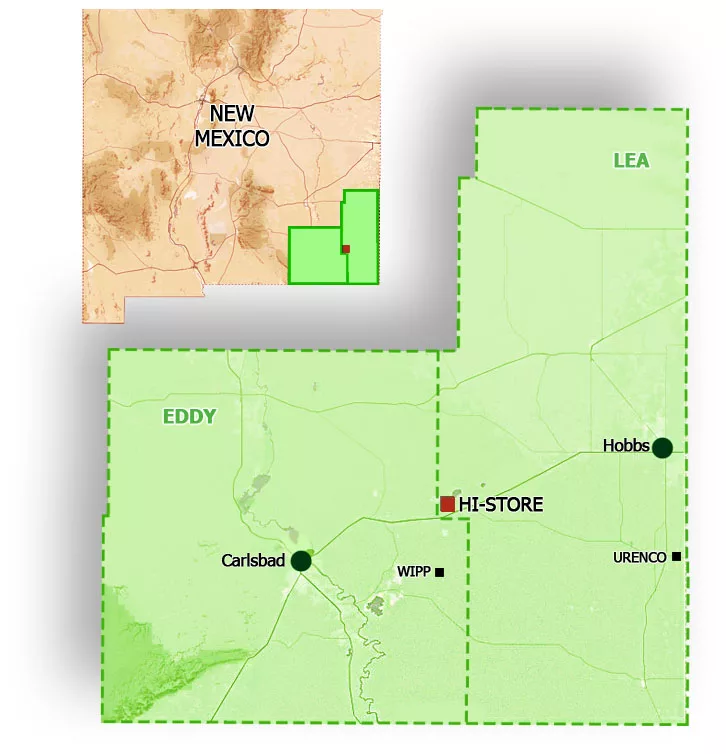
Named the HI-STORE CISF, the facility would have stored up to 10,000 canisters of commercial SNF on land owned by the Eddy-Lea Energy Alliance (ELEA) near the towns of Carlsbad and Hobbs.
“After discussions with our longtime partner in the HI-STORE project, the Eddy-Lea Energy Alliance, and due to the untenable path forward for used fuel storage in New Mexico, we mutually agreed upon canceling the agreement. This allows for ELEA to work to redevelop the property in a manner that fits their needs and allows Holtec to work with other states who are amenable to used fuel storage based on the recent DOE work on public education and outreach,” Holtec said in a statement (emphasis added).
Following the U.S. Supreme Court’s June ruling in NRC v. Texas, which found that petitioners did not have standing to challenge the Nuclear Regulatory Commission’s licensing of Interim Storage Partners’ CISF in Texas, Holtec said it expected to have its HI-STORE CISF license reinstated, allowing the company to move forward with the project. Holtec and ISP’s NRC licenses were vacated by the 5th Circuit Court of Appeals in a 2023 ruling.
Despite the court’s decision, New Mexico Gov. Michelle Lujan Grisham said she remained committed to preventing the HI-STORE CISF from being built. In 2023, New Mexico passed a bill barring the storage and disposal of high-level radioactive waste in New Mexico without the state’s explicit consent.
The AI Doomsday Machine Is Closer to Reality Than You Think
“Most troubling to experts on AI and nuclear weapons is that it’s getting harder and harder to keep decisions about targeting and escalation for nuclear weapons separate from decisions about conventional weapons.”
“There is no standing guidance, as far as we can tell, inside the Pentagon on whether and how AI should or should not be integrated into nuclear command and control and communications,” says Jon Wolfsthal, director of global risk at the Federation of American Scientists.
By Michael Hirsh | September 2, 2025 politico.com
Jacquelyn Schneider saw a disturbing pattern, and she didn’t know what to make of it.
Last year Schneider, director of the Hoover Wargaming and Crisis Simulation Initiative at Stanford University, began experimenting with war games that gave the latest generation of artificial intelligence the role of strategic decision-makers. In the games, five off-the-shelf large language models or LLMs — OpenAI’s GPT-3.5, GPT-4, and GPT-4-Base; Anthropic’s Claude 2; and Meta’s Llama-2 Chat — were confronted with fictional crisis situations that resembled Russia’s invasion of Ukraine or China’s threat to Taiwan.
Director Kathryn Bigelow is Sounding the Nuclear Alarm – Washington Post New Review
“A House of Dynamite” asks: How would the White House respond in the face of a nuclear attack?
By Max Boot | October 2, 2025 washingtonpost.com
VIEW MORE: “A House Of Dynamite” Q&A w/ Director Kathryn Bigelow, Tracy Letts, Jared Harris, And More At New York Film Fest —
80th Commemorations of Ban the Bomb – Trinity, Hiroshima & Nagasaki Remembrances in New Mexico
Exchange Monitor: DNFSB makes agency fixes, but needs members, GAO finds
The Defense Nuclear Facilities Safety Board (DNFSB) has tackled all but a few third-party recommendations to improve its culture over the past decade but suffers from a depleted board, according to a new report.
By ExchangeMonitor | September 5, 2025 santafenewmexican.com
Progress is tough with the five-person board probably…
China Hardens Military Stance Against U.S. With Nuclear Weapons and Tough Talk
Xi positions Beijing as powerful center of new global order as security forum convenes in capital
By Brian Spegele | September 18, 2025 wsj.com
BEIJING—China played down its rapidly rising military might for years. In the past few weeks, Beijing has broadcast a steady drumbeat of firepower displays and muscular rhetoric, carrying an unmistakable warning for the U.S….
Saudi Arabia signs a mutual defense pact with nuclear-armed Pakistan after Israel’s attack on Qatar
While not specifically discussing the bomb, the agreement states “any aggression against either country shall be considered an aggression against both,” according to statements issued by both Pakistan’s Foreign Affairs Ministry and the state-run Saudi Press Agency.
By MUNIR AHMED and JON GAMBRELL | September 18, 2025 apnews.com
ISLAMABAD (AP) — Saudi Arabia and nuclear-armed Pakistan have signed a mutual defense pact that defines any attack on either nation as an attack on both — a key accord in the wake of Israel’s strike on Qatar last week.
The kingdom has long had close economic, religious and security ties to Pakistan, including reportedly providing funding for Islamabad’s nuclear weapons program as it developed. Analysts — and Pakistani diplomats in at least one case — have suggested over the years that Saudi Arabia could be included under Islamabad’s nuclear umbrella, particularly as tensions have risen over Iran’s atomic program.
COMMUNITIES FOR CLEAN WATER: LANL Radioactive Tritium Venting Fails to Provide Transparency, Assurance, and Respect for Local Communities
FOR IMMEDIATE RELEASE: September 18, 2025
Santa Fe, NM — As NNSA and LANL continue operations to depressurize Flanged Tritium Waste Containers, Communities for Clean Water (CCW) calls out federal agencies for issuing vague assurances instead of transparent, verifiable data — and for dismissing community concerns with contradictory and incomplete statements that disregard what independent experts have found, the Department of Energy’s (DOE) own legal obligations, and the New Mexico Environment Department’s (NMED) acknowledgment that LANL has a long record of compliance failures.
“How can our communities be expected to trust LANL when they won’t give us access to the raw, real-time monitoring data – independently verified by the EPA,” asks Joni Arends with Concerned Citizens for Nuclear Safety. “Without this transparency, LANL is continuing a legacy of empty assurances, not accountability.”
Key Concerns:
-
Lack of real-time transparency – Since Friday (Sept. 12), the public has been forced to rely on NMED’s Facebook page for piecemeal updates. While LANL’s website provides very brief daily summaries, no near-real-time monitoring dashboard from DOE, NNSA, or LANL has been made available.
-
Vague assurances, not real information – NNSA’s updates claim “no tritium was released” while simultaneously telling the public to expect “very low levels of tritium” for subsequent venting. Without numbers, monitoring data, or detection thresholds, these phrases do not provide reassurance.
-
Weather risks – LANL has not disclosed thresholds for wind, rain, or humidity that would postpone venting. Communities watch weather shifts in real time but are left in the dark about how safety decisions are being made.
-
Dismissal of public health concerns – When asked for plain-language guidance that NMED stated LANL would provide, LANL responded only with “no offsite impact anticipated.” This is not meaningful and reassuring guidance, it’s a blanket dismissal that disregards independent expert findings and fails to meet DOE’s obligations to protect vulnerable populations.
-
Ignoring daily lifeways – Avoiding Pueblo Feast Days is not enough. This is harvest season, when outdoor cultural events, youth programs, and farming are in full swing. LANL’s scheduling continues to disregard these realities.
Unanswered Questions
Independent experts and community advocates have raised critical unanswered questions:
-
Unclear “depressurization” – LANL said “no internal pressure was found” in a container, but also claimed it was “depressurized.” If no pressure existed, what was released?
-
Unanswered helium questions – NMED stated helium was released, but LANL has not explained its origin. Was it introduced at sealing of the outer container, or a decay product of tritium?
-
Monitoring limits undisclosed – LANL has not disclosed the detection limits of its monitoring equipment. Readings “indistinguishable from zero” could still mask releases.
DOE NNSA Gives Misleading Statements on Native America Calling
On a recent Native America Calling program, DOE NNSA’s Los Alamos Field Office Deputy Director Pat Moss compared LANL venting to global natural tritium stocks. Independent expert Dr. Arjun Makhijani pointed out this comparison as misleading: “The problem is not global background, but local contamination. If venting occurs in rain and calm winds, local rainfall could exceed U.S. drinking water standards by hundreds to thousands of times.”
In their most recent public meeting, LANL admitted that infants could receive three times the radiation dose as adults. During the interview, Dr. Makhijani pressed this point – if adults are modeled at 6 mrem, that means infants could be at 18 mrem, nearly double the EPA’s 10 mrem compliance limit. Instead of addressing this directly, Mr. Moss provided a stock line, “We will be compliant with the regulatorily imposed release threshold and will be doing the calculations per the regulation.”
That is exactly the problem – hiding behind regulatory caps while ignoring clear evidence that infants, our most vulnerable, face exposures above legal limits.
DOE NNSA also pointed to the Defense Nuclear Facilities Safety Board (DNFSB) – an independent federal oversight body created by Congress – as if it had declared the tritium venting operation as “fully protective of the public”. That is misleading. First, the DNFSB has been operating without a quorum for months, limiting its ability to issue independent recommendations. Second, what the Board staff said in its July 2025 presentation was that the overall nuclear safety risk to the public is low if DOE’s proposed controls are followed. The DNFSB has also flagged ongoing safety concerns at LANL including deficiencies in Area G’s safety analysis and risk to workers.
First of four containers of tritium waste at LANL has been vented
The first of four flanged tritium waste containers awaiting removal from Los Alamos National Laboratory has been vented, the New Mexico Environment Department announced Tuesday afternoon.
By Alaina Mencinger amencinger@sfnewmexican.com | September 16, 2025 santafenewmexican.com
The container can now be moved for treatment at LANL and then, eventually, to an off-site disposal area.
No internal pressure was found in the first container, according to the National Nuclear Security Administration, suggesting the inner containers in the flanged tritium waste container hadn’t leaked. Air monitoring did not show an increase of tritium beyond background levels, the federal agency wrote.
No tritium emissions were released, the Environment Department wrote in its Tuesday post on X, formerly Twitter. Both the state agency and the U.S. Environmental Protection Agency are monitoring the process.
The depressurization of the containers is set to continue at 7 a.m. Wednesday, although the NNSA noted the schedule is subject to change due to weather. The four containers will be vented one at a time over an estimated two-week period.
*The featured image differs from the article photo due to usage rights.
New Mexicans Can Save the DNFSB; Contact Our Senators Today
From our friends at Concerned Citizens for Nuclear Safety:
The independent Defense Nuclear Facilities Safety Board has been dwindling from a five-member board to one member and may disappear if we, the People, do not raise our voices to support its essential nuclear safety work. The Safety Board needs at least two new members. And that needs to get done by Saturday, October 18th. https://www.dnfsb.gov/about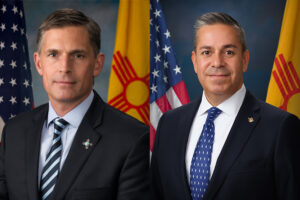
New Mexico U.S. Senators Heinrich and Lujan have key roles to play to ensure the Safety Board’s work continues unimpeded. https://www.heinrich.senate.gov/ and https://www.lujan.senate.gov/ Our voices of support are essential to ensure communities continue to receive the essential services of the Safety Board and its staff.
Right now members of the Safety Board’s staff are monitoring the venting of radioactive tritium from Area G at Los Alamos National Laboratory (LANL). Their expertise in the field of nuclear safety and their demonstrated competence and knowledge relevant to their independent investigative and oversight functions are an essential part of the process. They will be part of the follow-up once the venting of the four flanged tritium waste containers is completed. https://tewawomenunited.org/?s=tritium, https://www.ccwnewmexico.org/tritium, https://nuclearactive.org/
Not only does the Safety Board have staff at LANL, but also at Sandia National Laboratories in Albuquerque and at the Waste Isolation Pilot Plant, the burial site for plutonium contaminated nuclear weapons waste, near Carlsbad. https://ananuclear.org/facilities/
Russia suspected of helping North Korea build nuclear submarines, Seoul investigating
Analysts said such a technology transfer was plausible given Pyongyang’s support for Russia’s ongoing war in Ukraine
By Park Chan-kyong | September 18, 2025 scmp.com
South Korea is investigating reports that Russia has supplied North Korea with nuclear submarine reactor modules, a move analysts see as highly plausible and one that could mark a breakthrough in Pyongyang’s decades-long push for a nuclear powered navy…
Holy See tells nations at UN to end threat of nuclear weapons, even as deterrence
Amid a global arms race, ending the threat of nuclear war — and even the testing of nuclear weapons — is imperative, said the Holy See’s diplomat to the United Nations.
By Gina Christian, OSV News | September 8, 2025 catholicreview.org
Archbishop Gabriele G. Caccia, the Holy See’s U.N. permanent observer, shared his thoughts in a statement he delivered Sept. 4 at U.N. headquarters in New York, during the General Assembly High-level Plenary Meeting to Commemorate and Promote the International Day Against Nuclear Tests, observed that same day.
“The pursuit of a world free of nuclear weapons is not only a matter of strategic and vital necessity, but also a profound moral responsibility,” Archbishop Caccia in his remarks.
He pointed to the introduction of nuclear weapons — first detonated by the U.S. in 1945 over the Japanese cities of Hiroshima and Nagasaki, killing an estimated 110,000 to 210,000 people, during World War II — as unveiling to the world “an unprecedented destructive force.”
Historic peace vigil partially dismantled after Trump orders: ‘Take it down’
Law enforcement officials on Sunday removed parts of the White House Peace Vigil, which has sat just outside the White House for decades.
By Marissa J. Lang, The Washington Post | September 8, 2025 washingtonpost.com
But over the past week, it faced a new threat as Trump turned his attention to the vigil and federal officers picked apart the structure that shields protesters and their signs from the elements. The vigil is maintained by a rotating cast of volunteers who keep the protest going 24 hours a day, seven days a week.
On Friday, Brian Glenn, a correspondent for the conservative network Real America’s Voice, told the president during a gathering with reporters that there was “a blue tent” in front of the White House that was “an eyesore.” Trump initially said he was unaware of it, but he then quickly ordered its removal.
Photo by Sig. Chiocciola, Creative Commons: The White House Peace Vigil on March 30, 2025 staffed by volunteers, Philipos Melaku-Bello (left) and Joe Brown (right).
For 80 years, nuclear weapons have been the unused threat
Amid a global arms race, ending the threat of nuclear war — and even the testing of nuclear weapons — is imperative, said the Holy See’s diplomat to the United Nations.
By Matt Kelly, mkelly@virginia.edu, September 3, 2025 news.virginia.edu
In the 80 years since World War II, which ended with the use of two atomic bombs, the world has maintained a tenuous relationship with nuclear weapons.
Philip Potter, professor of public policy at the University of Virginia’s Frank Batten School of Leadership and Public Policy and director of the National Security Data and Policy Institute, said he worries about the current delicate nuclear balance.
“Eighty years of non-use is the product of both good diplomacy and a recognition of the potential consequences,” Potter said. “The fearsome power of nuclear weapons causes countries pause before they use them, but a great deal of work has also gone into nonproliferation and the management of crises to keep them away from the nuclear brink. In some ways the dynamics of the Cold War made managing the potential for nuclear confrontation easier.”
It’s a very different strategic scenario now, where there are nine nuclear powers and less capacity to manage them.
A House of Dynamite review – Kathryn Bigelow’s nuclear endgame thriller is a terrifying, white-knuckle comeback
★★★★★: Amid a global arms race, ending the threat of nuclear war — and even the testing of nuclear weapons — is imperative, said the Holy See’s diplomat to the United Nations.
By Peter Bradshaw, The Guardian | September 2, 2025 theguardian.com
Kathryn Bigelow has reopened the subject that we all tacitly agree not to discuss or imagine, in the movies or anywhere else: the subject of an actual nuclear strike. It’s the subject which tests narrative forms and thinkability levels.
Maybe this is why we prefer to see it as something for absurdism and satire – a way of not staring into the sun – to remember Kubrick’s (brilliant) black comedy Dr Strangelove, with no fighting in the war room etc, rather than Lumet’s deadly serious Fail Safe.
Nuclear News Archive – 2022
Why You Should Care about the Expanding WIPP Mission
Cindy Weehler gave a powerful speech during the March 1, 2022 press conference at the New Mexico Capitol about why you should care about the expanding mission for the Waste Isolation Pilot Plant (WIPP). People are opposing the Department of Energy (DOE) WIPP expansion plans that violate the law. We provide Weehler’s speech below.
Weehler is Co-Chair of 285 ALL, a neighborhood issues awareness group based south of Interstate 25. Before the press conference, she presented over 1,100 petition signatures to the Governor’s Office. The petition reads:
Petition to Governor Michelle Lujan Grisham
New Mexicans call on Governor Michelle Lujan Grisham to stand up for public health and the environment by stopping the expansion of the nuclear waste facility called the Waste Isolation Pilot Plant (WIPP) in southeastern New Mexico.
New Mexicans oppose the nuclear waste expansion at WIPP because:
- The federal government’ plans would transport more nuclear weapons waste to WIPP than is allowed.*
- The plutonium nuclear waste in the WIPP expansion is still dangerous for hundreds of thousands of years and endangers the health of our families and future generations.
- Unless New Mexico says ‘NO’ to WIPP expansion, other disposal locations will not be developed, and WIPP and NM will always be the only dump site, which is not fair. New Mexico never agreed to bear the burden of being the only nuclear waste dump site in the country.
- The federal government has not been transparent about its WIPP expansion plans, and has repeatedly refused to discuss the plans publicly, including in hearings on the WIPP Permit. Many New Mexicans are not even aware of those plans. We deserve a transparent and fair process that includes the voices of all impacted communities.
We strongly support, and urge our Governor to take all necessary actions, including denying permits for the piecemeal expansion.
A new generation is being introduced to the nuclear threat
 Photo: The International Campaign to Abolish Nuclear Weapons (ICAN)
Photo: The International Campaign to Abolish Nuclear Weapons (ICAN)
“Nuclear weapons keep all of us imperiled, even when we aren’t technically at war.”
BY: Opinion by Jill Filipovic © CNN |
(CNN) First things first: Despite Russia’s aggression in Ukraine, and despite Russian posturing about nuclear weapons, it seems wildly unlikely that the current conflict will descend into a nuclear crisis. But that reality doesn’t change the fact that this invasion, and Russian swagger about its nuclear capabilities, ratchets up tensions in an already-deadly situation — and brings a renewed (if still slim) threat of nuclear war to a generation that has never experienced this particular (apocalyptic) fear.
“I would now like to say something very important for those who may be tempted to interfere in these developments from the outside,” Russian President Vladimir Putin said in an address last week about his country’s invasion of Ukraine.
New Mexico governor asked to stand up to more nuclear waste
“This citizen petition highlights the frustration of New Mexicans with DOE’s Environmental Management program. We fully expect the Department of Energy to meaningfully engage with stakeholders in New Mexico communities on this issue.” – Nora Meyers Sackett, governor spokeswoman.
By SUSAN MONTOYA BRYAN | AP NEWS March 1, 2022 apnews.com
ALBUQUERQUE, N.M. (AP) — A coalition of environmentalists and nuclear watchdogs on Tuesday delivered more than 1,000 petition signatures to Democratic Gov. Michelle Lujan Grisham asking her to take all steps necessary to stop any expansion of the federal government’s nuclear repository in southeastern New Mexico.
Dozens of people gathered at the state Capitol because they are concerned about the potential for the Waste Isolation Pilot Plant to be a disposal site for diluted plutonium.
They said the dump was never intended for that type of radioactive waste.
BREAKING: Russian President Vladimir Putin has ordered the military to put its nuclear forces on the highest level of alert in response to what he called “aggressive statements” by NATO countries.

“In a shocking move that unearthed long-buried fears from the Cold War era, Putin ordered Russian nuclear weapons prepared for increased readiness to launch on Sunday, ratcheting up tensions with Europe and the United States over the conflict.
The Russian president told his defense minister and the chief of the military’s General Staff to put the nuclear deterrent forces in “special regime of combat duty.”
He said that leading NATO powers had made “aggressive statements” toward Russia in addition to stiff economic sanctions and cutting leading Russian banks from the SWIFT banking system.”
AP NEWS February 27, 2022 apnews.com
NATO Expansion: What Gorbachev Heard
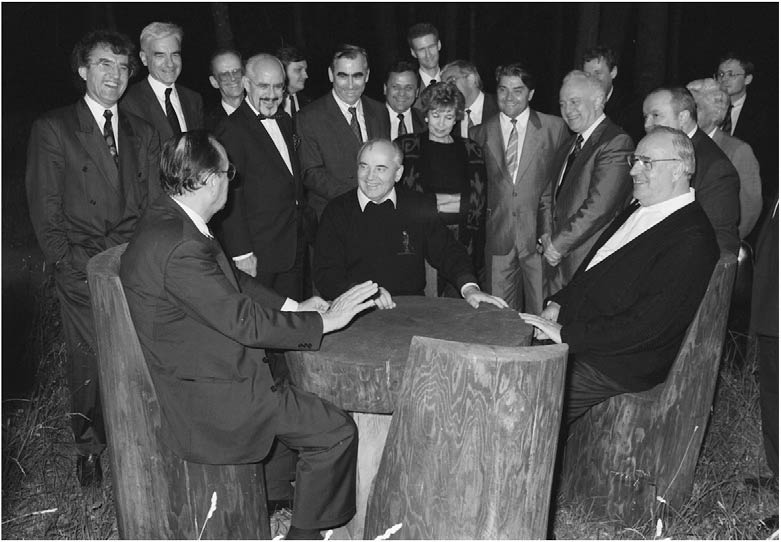
Declassified documents show security assurances against NATO expansion to Soviet leaders from Baker, Bush, Genscher, Kohl, Gates, Mitterrand, Thatcher, Hurd, Major, and Woerner
Slavic Studies Panel Addresses “Who Promised What to Whom on NATO Expansion?”
Washington D.C., December 12, 2017 – U.S. Secretary of State James Baker’s famous “not one inch eastward” assurance about NATO expansion in his meeting with Soviet leader Mikhail Gorbachev on February 9, 1990, was part of a cascade of assurances about Soviet security given by Western leaders to Gorbachev and other Soviet officials throughout the process of German unification in 1990 and on into 1991, according to declassified U.S., Soviet, German, British and French documents posted today by the National Security Archive at George Washington University (http://nsarchive.gwu.edu).
The documents show that multiple national leaders were considering and rejecting Central and Eastern European membership in NATO as of early 1990 and through 1991, that discussions of NATO in the context of German unification negotiations in 1990 were not at all narrowly limited to the status of East German territory, and that subsequent Soviet and Russian complaints about being misled about NATO expansion were founded in written contemporaneous memcons and telcons at the highest levels.
Bury it? Shoot it into space? Why scientists still can’t find a place for nuclear waste
“Currently no options have been able to demonstrate that waste will remain isolated from the environment over the tens to hundreds of thousands of years.” – Nuclear waste expert Andrew Blowers, author of “The Legacy of Nuclear Power” and former member of the UK’s Committee on Radioactive Waste Management.
BY: Opinion by Paul Hockenos © CNN | February 27, 2022 cnn.com
(CNN) A major Intergovernmental Panel on Climate Change report, to be released Monday, is expected to warn that humans are wrecking the planet so profoundly that we may run out of ways to survive the crisis. The report speaks of a “rapidly closing window of opportunity to secure a liveable and sustainable future for all.”
Waste Isolation Pilot Plant leadership expect nuclear waste site to be open until 2050
The U.S. National Nuclear Security Administration claims that a little more than half of WIPP’s future capacity will be reserved for future plutonium pit bomb core production. Further, those new radioactive wastes would be given priority over existing legacy cleanup wastes.
To quote:
“The combined TRU waste (1,151 m3) generated over 50 years would be 57,550 m3, which would account for 53 percent of the projected available capacity at WIPP. In addition, use of WIPP capacity for national security missions such as pit production would be given priority in the allocation process.”
DOE/EIS-0236-S4-SA-02, December 2019, Final Supplement Analysis of the Complex Transformation Supplemental Programmatic Environmental Impact Statement, p. 65, https://www.energy.gov/sites/prod/files/2020/01/f70/final-supplement-analysis-eis-0236-s4-sa-02-complex-transformation-12-2019.pdf
Courtesy of WIPPNUCLEAR WATCH NEW MEXICO IS OPPOSED TO THE STATE OF NEW MEXICO BEING THE NATION’S LARGEST PLUTONIUM WASTE PRODUCER AS WELL AS THE NATION’S ONLY PLUTONIUM WASTE DUMP.
BY: Adrian Hedden Carlsbad Current-Argus | February 25, 2022
Nuclear waste will continue being buried at a facility near Carlsbad for the coming decades, as far into the future as 2050 or 2080.
In preparation for that continued mission of disposing of the nation’s transuranic (TRU) waste – mostly clothing materials and equipment irradiated during nuclear activities – the Waste Isolation Pilot Plant saw myriad projects at the site aimed at increasing airflow and ensuring enough space is available for the waste.
EXPLAINER: Does Putin’s alert change risk of nuclear war?
Russian President Vladimir Putin’s implied threat to turn the Ukraine crisis into a nuclear war presents President Joe Biden and U.S. allies with choices rarely contemplated in the atomic age. One choice is whether to raise the alert level of U.S. nuclear forces in response. Putin put Russian nuclear forces in what he called a “special regime of combat duty.”
By ROBERT BURNS | AP NEWS February 27, 2022 apnews.com
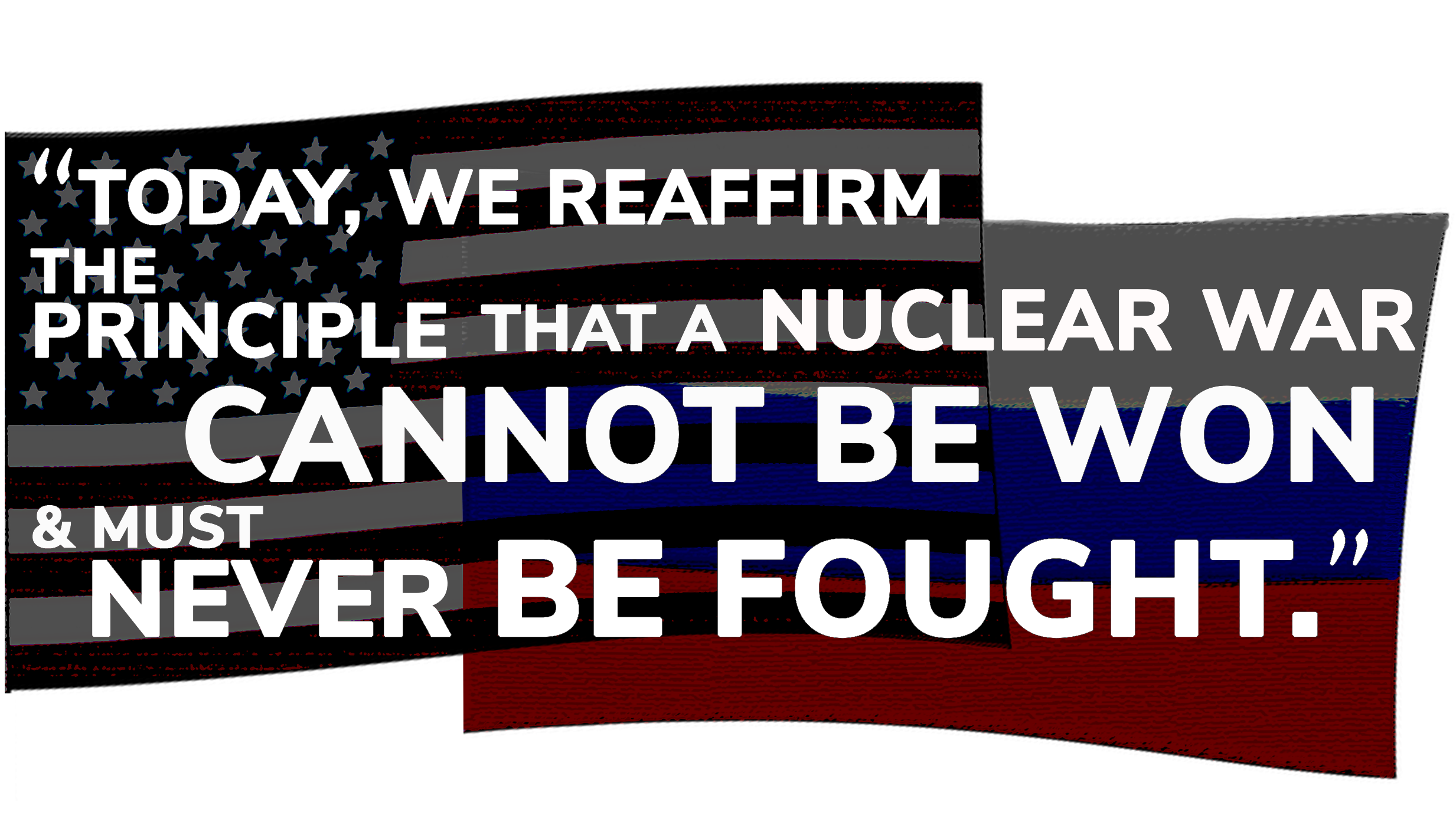 WASHINGTON (AP) — Russian President Vladimir Putin’s implied threat to turn the Ukraine war into a broader nuclear conflict presents President Joe Biden with choices rarely contemplated in the atomic age, including whether to raise the alert level of U.S. nuclear forces.
WASHINGTON (AP) — Russian President Vladimir Putin’s implied threat to turn the Ukraine war into a broader nuclear conflict presents President Joe Biden with choices rarely contemplated in the atomic age, including whether to raise the alert level of U.S. nuclear forces.
This turn of events is all the more remarkable for the fact that less than a year ago, Putin and Biden issued a statement at their Geneva summit that seemed more in keeping with the idea that the threat of nuclear war was a Cold War relic. “Nuclear war cannot be won and must never be fought,” they agreed.
NM PBS: New Mexico in Focus
STARTING AT 27:09 – Watch the Archbishop of Santa Fe John Wester’s interview about his recent pastoral letter calling for nuclear disarmament on an international scale!
Putin waves nuclear sword in confrontation with the West
“By merely suggesting a nuclear response, Putin put into play the disturbing possibility that the current fighting in Ukraine might eventually veer into an atomic confrontation between Russia and the United States.”
By JOHN DANISZEWSKI | AP NEWS February 25, 2022 apnews.com
WARSAW, Poland (AP) — It has been a long time since the threat of using nuclear weapons has been brandished so openly by a world leader, but Vladimir Putin has just done it, warning in a speech that he has the weapons available if anyone dares to use military means to try to stop Russia’s takeover of Ukraine.
The threat may have been empty, a mere baring of fangs by the Russian president, but it was noticed. It kindled visions of a nightmarish outcome in which Putin’s ambitions in Ukraine could lead to a nuclear war through accident or miscalculation.
“As for military affairs, even after the dissolution of the USSR and losing a considerable part of its capabilities, today’s Russia remains one of the most powerful nuclear states,” Putin said, in his pre-invasion address early Thursday.
By Sara Sirota | The Interecpt February 25, 2022 theintercept.com
AS THE WEEK BEGAN, nonproliferation advocates weren’t optimistic that President Joe Biden would stand by his early commitments to “reduce the role of nuclear weapons in our national security strategy.” He might reverse former President Donald Trump’s decisions to pursue a nuclear-armed, sea-launched cruise missile or to retain the B83 gravity bomb, the most destructive weapon in the U.S. nuclear arsenal, they thought. He might roll back Trump’s policy allowing a nuclear response to “significant non-nuclear strategic attacks” or even consider a coveted “no first use” policy that Biden had shown interest in as vice president. But prospects that he would do the heavier lifting and halt Northrop Grumman’s contract to replace the intercontinental ballistic missile system — considered one of the most dangerous and unnecessary weapons in the nuclear arsenal — were practically nonexistent. Combined with multiple other weapons programs, the brand-new ICBM system puts the U.S. in its largest nuclear modernization effort since the Cold War.
ORIGINAL ARTICLE (THE INTERCEPT)
Santa Fe archbishop sees nuclear disarmament as moral imperative
“…If we have nuclear weapons, and if we, heaven forbid, got to the point where we use them on each other, it would be catastrophic. And so I want this to be a conversation, not really a historical one about should we have dropped the bomb in Hiroshima and Nagasaki, but I want to be a conversation on: Should we work toward nuclear disarmament?”
KUNM February 24, 2022 kunm.org
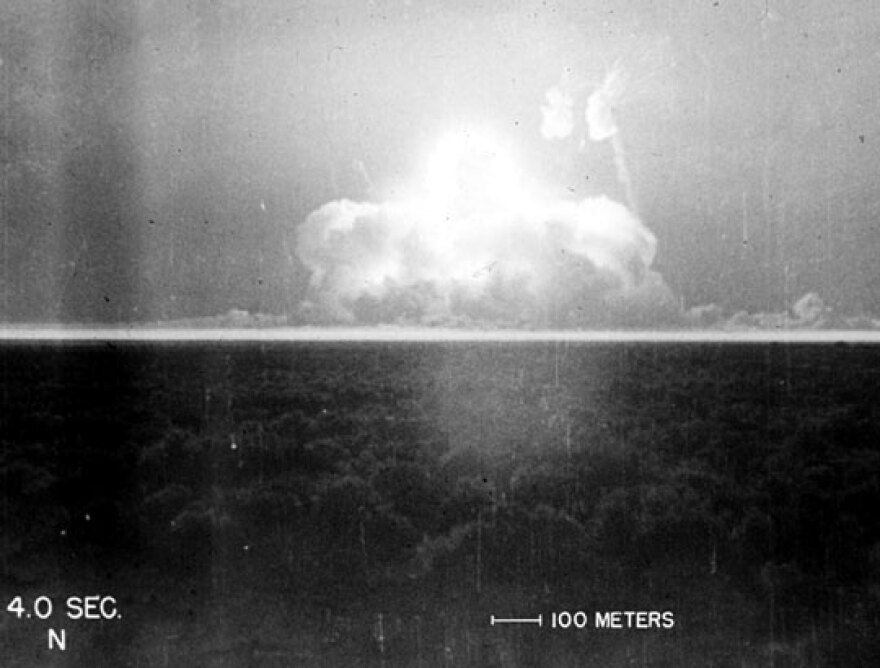
New Mexico is where the atomic age began and the nuclear industry still looms large here, with Sandia National Laboratories and Los Alamos National Laboratory bringing significant economic impact.
But the Archbishop of Santa Fe wants the state, and the world, to forge a new way forward. Rev. John C. Wester issued a pastoral letter last month calling for total nuclear disarmament. Wester spoke to KUNM’s Megan Kamerick about how his perspective changed during a visit to cities in Japan where the United States dropped atomic bombs in World War II. This interview is an excerpt of a longer interview that will air on New Mexico in Focus Friday Feb. 25 at 7 p.m.
JOHN C. WESTER: It was just so horrific, especially with the children. I mean, the whole thing was difficult. But I read that the children saw the bright light, and they ran to the window to see what the light was, you know, and I can only imagine what happened either then or shortly after with the exposure to the radiation.
Putin’s Nuclear Threat Sets the West on Edge
By promising a response “never seen” in history if other countries interfere in Ukraine, the Russian leader upended decades of relative stability.
By GARRETT M. GRAFF | WIRED February 24, 2022 wired.com
THE FIRST IMAGES out of Russia’s fresh invasion of Ukraine appeared to herald a fairly traditional land war: tanks battling, artillery firing, and planes swooping low over cities. But even as Western leaders moved to craft a strong response to Vladimir Putin’s unprovoked aggression, they did so warily, conscious that the dramatic escalation in Eastern Europe could spill over into two new domains with much larger implications for the world beyond: cyberspace and nuclear weaponry.
In his speech early Thursday morning, Moscow time, Putin announced what he called a “special military operation” and issued a stark warning against Western intervention.
“No matter who tries to stand in our way or all the more so create threats for our country and our people, they must know that Russia will respond immediately, and the consequences will be such as you have never seen in your entire history,”
He said, in remarks officially translated by the Kremlin that seemed to leave little doubt as to the threat of nuclear retaliation.
This is what would happen to Earth if a nuclear war broke out between the West and Russia
Climate change is not the only man-made threat that could wipe out humanity; a nuclear war would also do that
By MATTHEW ROZSA | Salon February 19, 2022 salon.com
Suddenly, the threat of nuclear war feels closer than it has in decades. The Bulletin of Atomic Scientists updated their Doomsday Clock to 100 seconds to midnight, and President Joe Biden has issued increasingly ominous statements reflecting how the looming conflict over the Ukraine that could ensnare both Russia and the west into conventional war.
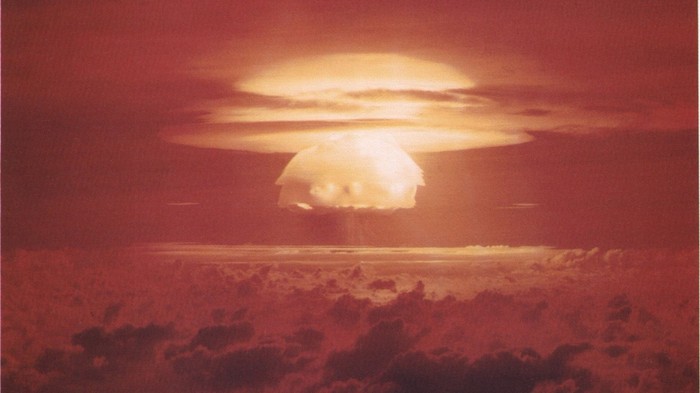
And, some fear, war with nuclear weapons. It is a prospect that has haunted human beings since the dawn of the Cold War. Politicians who were perceived as too open to the idea of nuclear war would pay for their hawkishness at the polls. Motion pictures from “Dr. Strangelove” to “The Day After” have depicted an uninhabitable world, filled with lethal amounts of radiation and short on necessities like food and water.
The Bomb and Us: Why Gen Z Should Care About Nuclear Disarmament
“Some scholars, including Kenneth Waltz, have gone so far as arguing that we should allow nuclear weapons proliferation as a method of promoting peace. However, this deterrence-based approach does not take into account the possibility of accidental and unauthorized nuclear explosions, or of nuclear terrorism, two very real menaces.”
Anna Bartoux February 10, 2022 cpreview.com
You cannot go around saying to people that there is a 100% chance that they’re gonna die. You know? It’s just nuts. —President Orlean, “Don’t Look Up,” 20:40
This line is from the new Netflix sensation, “Don’t Look Up,” a movie starring Leonardo Dicaprio and Jennifer Lawrence in the role of two astronomers trying to raise awareness about a comet on a collision course with Earth. “Don’t Look Up” has prompted the interest of many because of its not-so-hidden political commentary on the apathy surrounding climate change, however, few seem to realize the relevance of the movie’s message for another, even less recognized issue: nuclear disarmament.
Indeed, the extent to which nuclear weapons still threaten our lives today is little understood. Despite being one of the most socially engaged and politically minded generations across a range of topics, few Gen Zers really consider the nuclear issue with the urgency it demands.
Los Alamos lab contractor receives good rating in annual review but had safety lapses – Santa Fe New Mexican
The cursory assessment winds up glossing over what could be serious problems at the lab, said Jay Coghlan, executive director of Nuclear Watch New Mexico.
“The full evaluation reports used to be available; there’s nothing classified about them,” Coghlan said. “It’s all paid for by the taxpayer, and the taxpayer has a right to know how the contractor has performed.”
THE SANTA FE NEW MEXICAN | February 11, 2022 santafenewmexican.com
Six B-21s in Production, Fuel Control Software Already Tested
The nuclear modernization effort, however, does face one potentially significant hurdle, particularly for missiles such as the GBSD and the Long Range Standoff Weapon: the production of plutonium “pits” that go in the center of nuclear warheads.
The National Nuclear Security Administration had set a goal of producing 30 pits per year by 2026 and 80 by 2030. But, “I think NNSA will readily admit they’re not going to make that requirement,” Wolfe said.
By Greg Hadley airforcemag.com
The B-21 Raider continues to be a “model” program for the Air Force, with six of the new bombers currently in production and some of its software already validated through digital testing, a top general at Air Force Global Strike Command said Feb. 9.
Speaking at the 2022 Nuclear Deterrence Summit, Maj. Gen. Jason R. Armagost said the new stealth bomber will likely fly in 2022, echoing previous predictions by other Air Force officials.
[Los Alamos Reporter] NNSA Whitewashes LANL Performance, Hides Information From Taxpayers
The Los Alamos Reporter February 10, 2022 losalamosreporter.com
The National Nuclear Security Administration (NNSA) is releasing only cursory, three-page summaries of its FY 2021 Performance Evaluation Reports (PERs), which provide scant information and essentially whitewash contractor performance. For context, the Department of Energy’s nuclear weapons and cleanup programs have been on the Government Accountability Office’s High Risk List for project and contractor mismanagement for 27 consecutive years. In 2012 Nuclear Watch New Mexico sued to obtain the full and complete Performance Evaluation Reports, after which NNSA caved in and immediately provided them. However, that unfortunately resulted in no legal settlement requiring annual releases of the full and complete PERs, and now the agency is back to suppressing information on contractor performance paid for by the American taxpayer.
Newsweek Exclusive: Ukraine Crisis Could Lead to Nuclear War Under New Strategy
“In the new nuclear war plan, integration of all military and non-military weapons in the American armory is labeled the new deterrent. Planners seek to debilitate and immobilize any enemy rather than physically destroy it. The dividing line between what is nuclear and what is conventional has been blurred more than ever…”
By William M. Arkin and Marc Ambinder February 4, 2022 NEWSWEEK newsweek.com
Three thousand American troops are headed to Europe, with thousands more on stand-by in response to the Kremlin’s threats against Ukraine. President Joe Biden is pondering further actions—and as U.S.-Russia tensions rise, a new American nuclear war plan, previously unknown, lurks in the background.
For the first time, the war plan fully incorporates non-nuclear weapons as an equal player. The non-nuclear options include the realm of cyber warfare, including cyber attacks on the basic workings of society like electrical power or communications. Rather than strengthen deterrence, the emergence of countless options and hidden cyber attack schemes weakens deterrence, obscures the nuclear firebreak and makes escalation more likely. Why? Because an adversary such as Russia can be confused about where preparations for nuclear war start, and whether a multi-domain attack is merely a defense or the makings of a first strike.
It isn’t the war plan of yesterday with hair-trigger alerts, bolts from the blue and global destruction. Instead, the standalone nuclear option has become the integration of many options: nuclear, conventional and unconventional, defensive as well as offensive, “non kinetic” as well as “kinetic.”
President Biden alluded to this widened spectrum of warfare on February 7 when he warned that if Russia crossed the Ukraine border, the United States would bring an end to Nord Stream 2, the natural gas pipeline connecting Russia to Germany, and one that the Russian energy economy depends on.
NEW Report from ICAN: No place to hide: nuclear weapons and the collapse of health care systems
ICAN is launching a report revealing that the healthcare systems in ten major cities around the world would be desperately overwhelmed by the immediate impact of the detonation of just one nuclear weapon. The study models the detonation of one 100-kiloton airburst nuclear explosion over major cities in each of the nine nuclear-armed states and Germany, which hosts U.S. nuclear weapons on its territory. It then examines how many hospital beds, doctors, nurses and where information is available, ICU beds and burn care centres would be left to treat hundreds of thousands to over one million injured people.
Concerns raised about a Marshall-style wildfire on former Rocky Flats nuclear weapons site
Some worry about a release of residual plutonium into the air; refuge officials say it’s safe
By John Aguilar, The Denver Channel February 8, 2022 thedenverchannel.com
December’s Marshall fire spared the Rocky Flats National Wildlife Refuge, an expanse of grasslands between Superior and Arvada that, had winds shifted, could have provided 6,200 acres of additional drought-stricken fuel to the destructive blaze.
What if a fire like the one that burned down more than 1,000 homes in Boulder County on Dec. 30 had turned suddenly south and raced across the refuge, where for 40 years triggers for nuclear warheads were assembled as part of the country’s Cold War standoff with the Soviet Union?
That was the topic of discussion Monday at a Rocky Flats Stewardship Council meeting, where elected officials from communities surrounding the refuge came together to talk about the potential hazards — including the release of deadly plutonium from the soil into the air — that could arise from an event like the Marshall fire on refuge land.
“Rocky (Flats) has burned before, Rocky will burn again in the future,” the council’s executive director, Dave Abelson, said. “Those are just facts. You can’t stop wildfire, as we all know.”
Ukraine and the Threat of Nuclear War
“The great powers can no longer pursue a zero-sum game to see who will come out on top. It is possible that one of them will emerge on top of the heap—but the heap may well be a global ash pile.”
By Ira Helfand The Nation February 8, 2022 thenation.com
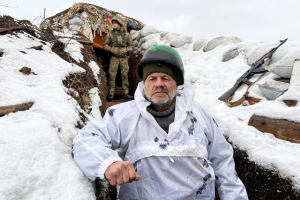
As the crisis in Ukraine deepens, it is appropriate to consider what the actual consequences of war there might be. An armed conventional conflict in Ukraine would be a terrible humanitarian disaster.
Last week, US government officials estimated that the fighting could kill 25,000 to 50,000 civilians, 5,000 to 25,000 Ukrainian military personnel, and 3,000 to 10,000 Russian soldiers. It could also generate 1-to-5 million refugees.
These figures are based on the assumption that only conventional weapons are used. However, if the conflict spread beyond Ukraine’s borders and NATO became involved in the fighting, this would become a major war between nuclear-armed forces with the very real danger that nuclear weapons would be used—and the public debate about this crisis is utterly lacking in discussion of this terrible threat.
‘Dumping ground?’: Human impacts of New Mexico nuclear industry haunt proposed waste project
“We are not important to them. All we’re good for is to have a site, an area where they can dump their nuclear waste. We have to fight that. We’re a sacrifice zone for New Mexico and that has to end.” – Bernice Gutierrez, 76, a retired social worker living in Albuquerque, who was born eight days before the Trinity blast in Carrizozo.
By Adrian Hedden and Thomas C. Zambito Carlsbad Current-Argus February 5, 2022 currentargus.com
The world’s first atomic bomb was detonated at a test site in the southern New Mexico desert during the summer of 1945, sending a multi-hued cloud thousands of feet in the air and carving out a crater in the earth a half-mile wide and eight-feet deep.
Sand was fused by the heat, forming a glass-like substance that would come to be known as “trinitite,” a reference to the Trinity nuclear weapon test site, about 36,000 acres in south-central New Mexico where the blast took place.
All that stood between the test site and surrounding area was a chain-link fence.
THE BLACK HEROES WHO FOUGHT AGAINST NUCLEAR WAR
Nuclear weapons facilities have been poisoning black and brown communities for decades. For #BlackHistoryMonth , we honor those who fought for saner policies. We need to #StopInvestinginDestruction now. (please share) pic.twitter.com/xoikpDfjZc
— Outrider.org (@OutriderFdn) February 1, 2022
3 Questions With Archbishop John C Wester
“[Nuclear Diarmament] is a human life issue. This is the sanctity of life because nuclear arms, in fact, could wipe out life as we know it. It can wipe out the planet. It’s an issue of poverty. What are we gonna do in New Mexico? We have a huge issue in poverty. We’re spending, the next [30] years, $1.7 trillion on our nuclear arsenal; that money could go to the poor.”
By William Melhado The Santa Fe Reporter February 2, 2022 sfreporter.com
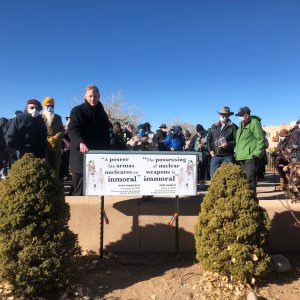 When John C Wester returned to Santa Fe after visiting Hiroshima and Nagasaki in 2017, he noticed a jarring juxtaposition between the atrocities committed by the United States government and the proximity of his work to the birthplace of the nuclear bomb. It opened his eyes to the line that had been crossed. As the Archbishop of the Santa Fe Archdiocese, Wester called for a renewed conversation for nuclear disarmament in a pastoral letter published last month.
When John C Wester returned to Santa Fe after visiting Hiroshima and Nagasaki in 2017, he noticed a jarring juxtaposition between the atrocities committed by the United States government and the proximity of his work to the birthplace of the nuclear bomb. It opened his eyes to the line that had been crossed. As the Archbishop of the Santa Fe Archdiocese, Wester called for a renewed conversation for nuclear disarmament in a pastoral letter published last month.
Bill Reignites Holtec Nuclear Waste Debate
“Interim in this case effectively means permanent…We have great concern about that public safety component of any private waste moving through the state to a facility” — Sarah Cottrell Propst, the Energy, Minerals and Natural Resources Department secretary.
BY THERESA DAVIS / JOURNAL STAFF WRITER Copyright © 2022 Albuquerque Journal February 1, 2022 abqjournal.com
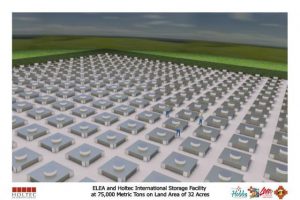
A bill aimed at banning disposal of spent nuclear fuel and high-level radioactive waste in New Mexico has reignited debate over Holtec International’s plans for an interim nuclear waste storage facility between Carlsbad and Hobbs.
Senate Bill 54, sponsored by Sen. Jeff Steinborn, D-Las Cruces, cleared the Senate Conservation Committee 5-3 on Tuesday with no recommendation.
The U.S. does not have a permanent storage site for the nation’s spent nuclear fuel.
Nuclear fears mount as Ukraine crisis deepens
Officials and experts are warning that a Russian invasion could inadvertently trigger a nuclear exchange with the U.S.
By BRYAN BENDER January 28, 2022 POLITICO
As Russian troops bear down on Ukraine and the United States prepares its own military buildup in Eastern Europe, concerns are growing across the ideological spectrum that the standoff could inadvertently escalate into the unthinkable: nuclear war.
President Joe Biden has insisted that he will not use American forces to directly defend Ukrainian territory against a possible Russian invasion. But that is no guarantee that the two sides won’t come to blows.
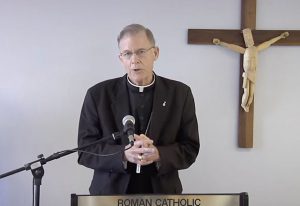
January 31, 2022 Where does the Catholic Church stand on nuclear weapons? Archbishop John C. Wester of Santa Fe joins co-host Tom Collina to discuss the Church’s historical advocacy of nuclear disarmament and his new pastoral letter urging the global abolition of such weapons.
On Early Warning, co-host Michelle Dover sits down with Katrina vanden Heuvel, editorial director and publisher for The Nation, who is also involved with the American Committee on US-Russia Accord. She discusses the current topic headlining in the news: elevated tensions in Ukraine.
Listen, Subscribe and Share on iTunes · Spotify · SoundCloud · YouTube · Google Play · Sticher
Also available on ploughshares.org/pressthebutton
COVID-19 an obstacle for nuclear waste disposal at Waste Isolation Pilot Plant, officials say
Officials plan to ramp up operations as pandemic hoped to subside
“With continued increases in shipments, WIPP officials said they hoped to fill the seventh disposal panel by the middle of 2022, planning to begin emplacing waste in the eighth and final panel as mining the area was completed last year.”
By Adrian Hedden Carlsbad Current-Argus January 31, 2022 currentargus.com
Nuclear Colonialism in the Age of the Ban Treaty January 25, 2022
The Affected Communities Working Group of the Nuclear Ban Treaty Collaborative hosted a discussion marking the one-year anniversary of the entry into force of the nuclear ban treaty on January 25, 2022.
“…That’s how the NRC operates – they want to just run the script and get it done and they’ll answer all your questions “later.” So the next step for us is to go into higher court and see if we can at least get some attention drawn to the very fact that giving them a license is illegal.
The National Waste Policy Act does not allow private organizations to move commercial waste from commercial facilities.
So there’s that problem, and then of course we have to consider that they don’t have all our questions answered yet, like: Who owns the waste? Where is it going to go and who is going to own it? And on the transportation route who is going to own it? And when it gets to the site? There’s no telling, there’s no answer – we don’t know yet. So we have all these questions that haven’t been answered.”
“My question is: Will this #nuclearwaste ever leave? Part of NEPA says that these consolidated interim storage (CIS) sites are temporary. For how long? 30? 40? 50? 100 years? We have to be careful,”
– Rose Garnder with the Alliance for Environmental Strategies in Eunice, New Mexico
Nuclear weapons development coming soon to Los Alamos National Laboratory amid safety concerns
During the question and answer period, Nuclear Watch New Mexico executive director Jay Coghlan said he was fascinated to hear that there was some funding allocated for a new SWEIS.
“Nuclear Watch New Mexico and Savannah River Site Watch subsequently in June 2021 filed a lawsuit in U.S. District Court for the District of South Carolina’s Aiken Division against the DOE and NNSA, arguing pit production should not be increased until site-wide environmental analysis were conducted at both facilities.”
By Adrian Hedden, Carlsbad Current-Argus | January 29, 2022 alamogordonews.com
A main component of nuclear weapons was poised to be built in New Mexico after federal regulators granted approval for a plan to prepare Los Alamos National Laboratory (LANL) for the work.
The National Nuclear Security Administration (NNSA), an arm of the U.S. Department of Energy, announced earlier this month it approved LANL’s project to prepare areas of the lab to be used in plutonium pit production – a project known as LAP4.
Nuclear Disarmament Urged by Catholic Archbishop in New Mexico, Birthplace of Nuclear Weapons
As the Biden administration reviews U.S. nuclear weapons policy, over 60 advocacy groups, including Veterans for Peace and CodePink, recently issued a joint statement calling for the elimination of hundreds of U.S. intercontinental ballistic missiles.
“The notion is if you get rid of those ICBMs, you reduce the risk of accidental nuclear war, and it’s a first step towards more rational nuclear policy,” says William Hartung, research fellow at the Quincy Institute for Responsible Statecraft.
The Tularosa Downwinders Have Waited 75 Years for Justice
Even though the first atomic bomb exploded in their state, New Mexicans were never compensated for the health consequences of nuclear contamination. These campaigners have vowed to change that.
By Sofia Martinez | The Nation thenation.com January 22, 2022
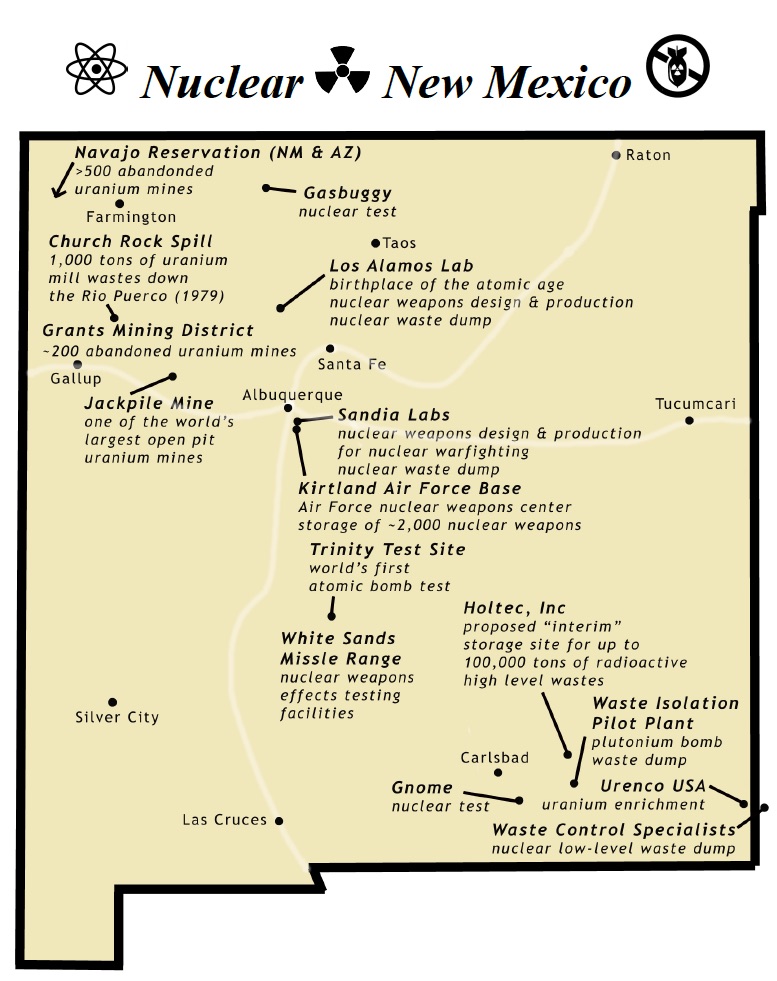
“It’s been over 75 years—we can’t wait anymore,” states Tina Cordova, cofounder of the Tularosa Basin Downwinders Consortium.
The group, which came together in 2005, is seeking environmental justice for the victims and survivors, called Downwinders, who were contaminated by the testing of the world’s first nuclear bomb on July 16, 1945. Its goal is to extend and expand the Radiation Exposure Compensation Act (RECA).
Voices for a World Free of Nuclear Weapons
Nominations are open for the Third Annual Gorbachev/Shultz, Voices Youth Award 2022
PR Newswire January 24, 2022
SAN FRANCISCO, Jan. 24, 2022 /PRNewswire/ — The Voices for a World Free of Nuclear Weapons Third Annual Voices Youth Award will be given to a youth who, or organization which, has pioneered or been part of exemplary programs and actions to engage youth in the local, regional or global movement to abolish nuclear weapons. The award honors the legacy of former U.S.S.R. President Mikhail Gorbachev and former U.S.A. Secretary of State George Shultz in their efforts for nuclear disarmament.
Photos from Celebrations of the 1st Anniversary of the Nuclear Ban Treaty – January 22, 2022
“Celebrating The Banniversary – Ban Treaty First Anniversary 1/22/22″
“The Beginning of the End of Nuclear Weapons”
By Ann Suellentrop, Peace Works Kansas City | January 22, 2022
People around the world want to save the Earth from nuclear weapons, and they are demanding it! There has been a flurry of activity regarding nuclear weapons very recently ahead of the first anniversary of the Treaty on the Prohibition of Nuclear Weapons, or the Ban Treaty. It was announced this past Thursday, January 20, that the Doomsday Clock remains stuck at 100 seconds to midnight for the third straight year. This is due to the current second nuclear arms race, as well as other dangerous developments, such as climate catastrophe and automated and hypersonic weapons currently being developed.
…On January 11, Archbishop John C. Wester of Santa Fe, New Mexico sent a pastoral letter in support of nuclear weapons abolition and the Treaty on the Prohibition of Nuclear Weapons to all the parishes in his diocese. This is bold and prophetic as Los Alamos Nuclear Lab nearby was the site of the invention of the first nuclear bomb, and New Mexico has perhaps the largest stockpile of nuclear weapons in the world at Kirtland AFB near Albuquerque. He called for nonviolence and dialogue to rid the world of all nuclear weapons. See: https://www.icanw.org/archbishop_letter
Nuclear News Archives – 2021
NNSA Says No Injuries, Contamination During February 26 Incident At LANL Plutonium Facility
February 26 at the Los Alamos National Laboratory’s Plutonium Facility (PF-4) waste generator site at Technical Area 55 involving sparking in a where a metal waste item in a transuranic waste drum has resulted in a potential noncompliance notification to the New Mexico Environment Department.
By: MAIRE O’NEILL maire@losalamosreporter.com | Los Alamos Reporter March 17, 2021
A spokesperson for the Department of Energy National Nuclear Security Administration Los Alamos Field Office confirmed that there were no injuries, no fire, contamination or release of material to the environment.
“During normal waste packaging operations, small sparks were observed in a plastic waste bag containing a High Efficiency Particular Air (HEPA) from a titanium welding area inside a glovebox,” she said. “The staff at TA-55 responded quickly and effectively, appropriately following safety protocol to evacuate the area and notify the Los Alamos Fire Department.”
A March 12 letter from NNSA to NMED noting the potential for noncompliance under the Hazardous Waste Facility permit says preliminary calculations indicate that there is no imminent or potential threat to human health or the environment and that NNSA is providing this report as a precautionary measure to keep NMED informed of the fact-finding extent of condition and the planned recovery path.
Ongoing ‘review’ forces Pentagon official to pull out of SC pit production briefing
A Pentagon official backed out of a plutonium pit production briefing in Columbia this week because the Biden administration is “engaged in a full review of the program,” according to Rick Lee, the chairman of the S.C. Governor’s Nuclear Advisory Council.
By: Colin Demarest cdemarest@aikenstandard.com | postandcourier.com
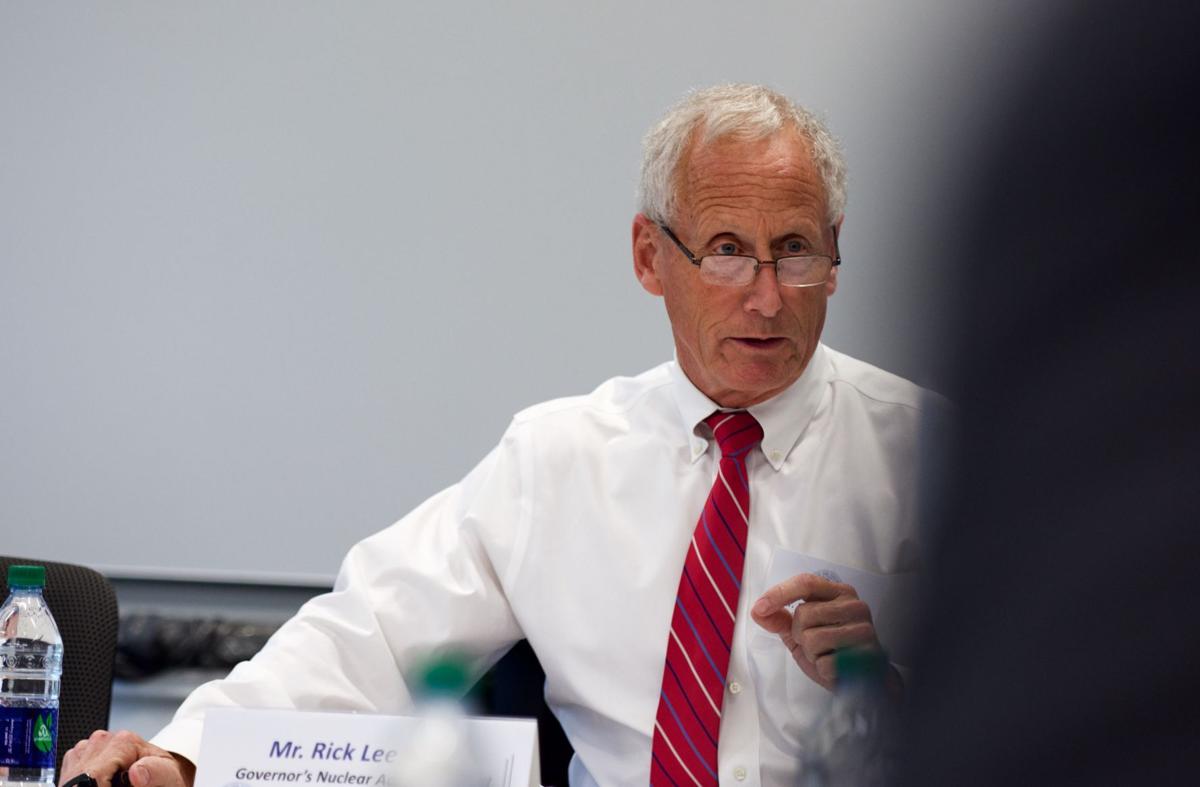
Local Governments Should Leave the Regional Coalition of LANL Communities
Summary: Local governments get little in return for being members of the Regional Coalition of LANL Communities (RCLC). That is because the Coalition is ineffective, dysfunctional, wastes taxpayers’ money and stands in the way of genuine, comprehensive cleanup at the Los Alamos National Laboratory. The RCLC was created to serve the interests of the Department of Energy and Los Alamos County, both of whom strongly support expanded plutonium pit production for new nuclear weapons and supply 80% of the Coalition’s funding. The Regional Coalition brings no discernible economic benefit to local governments other than already rich Los Alamos County because the Lab’s presence is an economic net loss to them. Local governments should not put their time and money into the Coalition. Instead, their constituents would be better served if local governments left the coalition and advocated for comprehensive cleanup that would permanently protect the environment while providing hundreds of high paying jobs.
Background
In 2011 the Department of Energy pulled promised funding from the Community Involvement Fund administered by the New Mexico Community Foundation that supported independent, often critical citizen and tribal analyses of DOE cleanup programs. At the same time DOE began funding the Regional Coalition of LANL Communities modeled on earlier alliances with local governments around the Rocky Flats Plant near Denver, CO and the Mound Plant, near Mound, OH.
The Nuclear Weapons Dimensions of the 2021 Integrated Review: A First Look
ACROSS THE POND AND OVER TO THE SAVANNAH RIVER AND NEW MEXICO MOUNTAINS: The UK will rearm itself with new American-made W93 warheads, and the plutonium pits for these weapons will be manufactured here at LANL and at the Savannah River Site in South Carolina.
BY: SEBASTIAN BRIXEY-WILLIAMS basicint.org March 16th, 2021
Today’s Integrated Review of Security, Defence, Development and Foreign Policy (IR), Global Britain in a Competitive Age, is said to contain the most comprehensive review of UK nuclear weapons policy since the end of the Cold War (pp.76-78). Although there is certainly some continuity with the 2015 Strategic Defence and Security Review, it sets a decisive course away from the United Kingdom’s long-term trend towards nuclear arms reductions and greater transparency.
Warhead Numbers and Transparency
The most headline-grabbing change to UK nuclear weapons policy is the increase to the cap on its overall nuclear warhead stockpile from 180 to 260, which was leaked last week and is now confirmed. This 44.4% increase decisively moves the Johnson Government away from the pledge made by the Coalition Government in 2010 to limit numbers to not more than 180 by the mid-2020s. While neither confirming that numbers will actually rise nor stating the precise reasons for this change, the IR claims vaguely that the previous target cap must be abandoned due to ‘recognition of the evolving security environment, including the developing range of technological and doctrinal threats’ (p.76).
New United Kingdom Defense Strategy a Troubling Step Back on Nuclear Policy
“We have RCLC, which is funded primarily by the Department of Energy funds, yet DOE doesn’t necessarily listen to the resolutions that we put forward about reducing plutonium pit production. They don’t ask us what we think as city of Santa Fe residents.”
For Immediate Release: March 15, 2021
Media Contacts: Daryl G. Kimball, executive director, (202) 463-8270 ext 107; Kingston Reif, director for disarmament policy, (202) 463-8270 ext 104
|
New Mexico demands more of US when addressing nuclear waste
“Some elected officials and watchdog groups say the list is another indication that New Mexico is on the back burner when it comes to cleaning up legacy waste. They’re also raising concerns that new waste generated by Los Alamos when it ramps up production of key nuclear warhead components will need to be cleaned up and could further sideline decontamination efforts.”
BY: SUSAN MONTOYA BRYAN/Associated Press krqe.com March 15th, 2021

ALBUQUERQUE, N.M. (AP) – The U.S. Energy Department has rolled out its 2021 priorities for cleaning up tons of toxic waste left behind by decades of bomb-making and nuclear research at scientific installations and defense sites around the country.
The list includes a goal of sending 30 shipments from the birthplace of the atomic bomb — Los Alamos National Laboratory — to the federal government’s underground waste repository in southern New Mexico.
For the NPT to work, plutonium has to go
Dealing with uranium enrichment is complicated because nuclear power plants use enriched uranium fuel, but that should not hold us back from eliminating the danger we can eliminate—plutonium.
By Victor Gilinsky, Henry Sokolski thebulletin.org | March 15, 2021
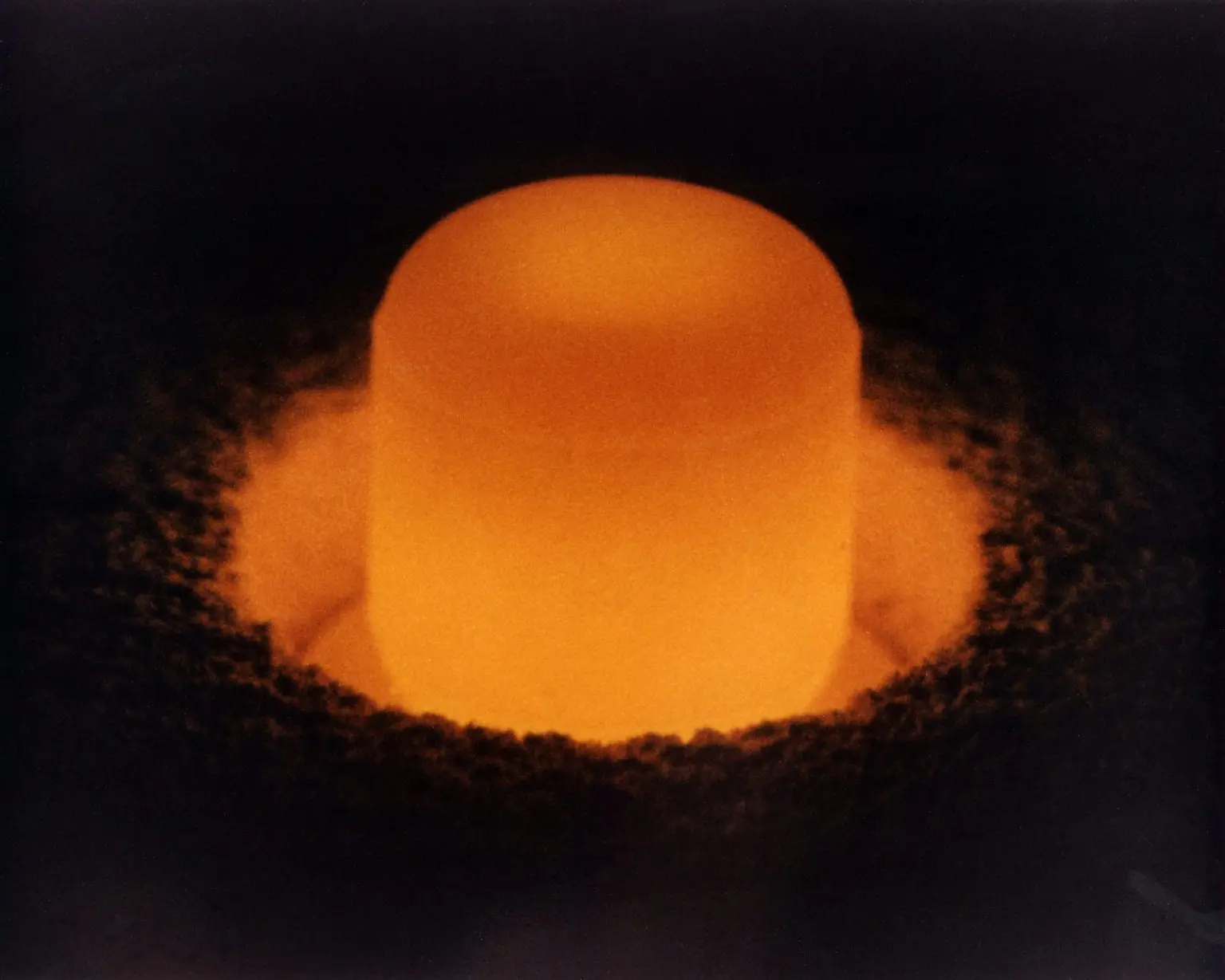
The Nuclear Nonproliferation Treaty (NPT), whose tenth review conference is coming up in August, is in trouble, and not only because of the crescendo of complaints about the failure of the nuclear-armed states to implement nuclear disarmament. The treaty is threatened with irrelevancy because its controls have not kept up with the times. It was drafted over 50 years ago, when it was widely believed that nuclear energy represented the future and would soon take over the generation of electricity. Not surprisingly, countries put few treaty restrictions on access to technology or materials other than to impose international inspection, and even that was circumscribed. We now have a more realistic view of the dangers of access to fuels that are also nuclear explosives (plutonium and highly enriched uranium) and also of the limited economic utility of these fuels for powering reactors. If we want an effective NPT, we have to eliminate these dangerous materials from civilian nuclear power programs.
Checking in: WIPP maintenance work ‘on schedule’ during 2-month operations pause
At WIPP, the waste is delivered from facilities operated by the U.S. Department of Energy around the country and buried in an underground salt deposit which gradually collapses and encases the waste permanently.
By: Adrian Hedden | currentargus.com March 15, 2021
The Waste Isolation Pilot Plant halted waste emplacement and handling operations for the last month at the nuclear waste repository near Carlsbad while an array of maintenance projects was completed.
The facility, which permanently disposes of low-level transuranic (TRU) nuclear waste about 2,000 feet underground, planned the outage for about two months until April 14 to allow workers to complete routine upgrades to its infrastructure and other needed work.
During the two-month pause, WIPP planned on 97 activities from six departments including mine operations, waste handling, hoisting, work control, safety and engineering.
Japan Hasn’t Recovered 10 Years After Fukushima Meltdown
“There is an old laboratory adage that says, “The best way to clean up a spill is not to have a spill,” and this applies on a much larger scale to the entirety of northern Japan, where cleanup will remain economically unfeasible.”
BY: Arnie Gundersen Truthout March 11th, 2021
On March 11, 2011, a devastating offshore earthquake and ensuing tsunami rocked Japan and resulted in nuclear meltdowns in three nuclear reactors at the Fukushima Daiichi nuclear site. Until the 2020 Tokyo Olympics were placed on a one-year hiatus because of concerns over COVID-19, the Japanese government had portrayed these events as the “Recovery Olympics.” It had hoped to use the Olympics to showcase a claimed restoration of Japan since it was devastated in 2011. But has Japan really “recovered?”
Recently, corresponding author Marco Kaltofen (Worcester Polytechnic Institute), co-author Maggie Gundersen (Fairewinds Energy Education) and I published our second peer-reviewed journal article analyzing hundreds of radioactive samples from northern Japan that we collected with assistance from Japanese citizens and scientists. Our sampling on five occasions over almost a decade totaled 70 days on the ground.
Report: Cancer death rates rising near Fermi nuclear plant
A new study is looking to test baby teeth from children living near the plant.
By: Tricia Ennis | 13abc.com
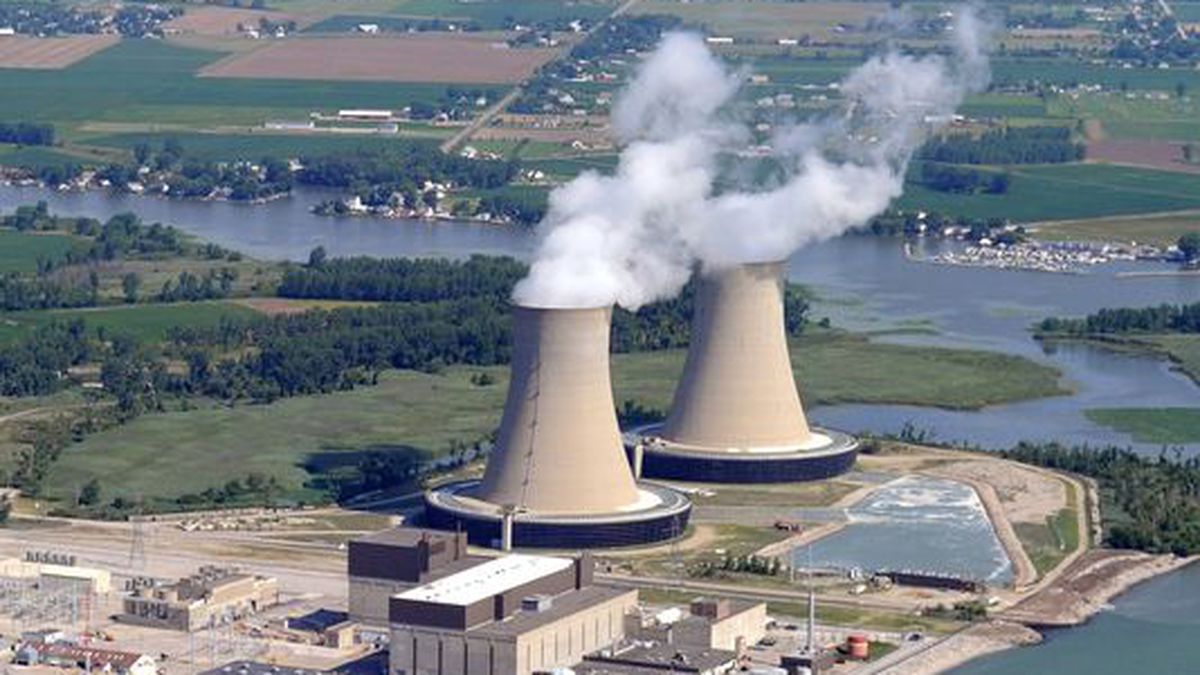
NEWPORT, Mich. (WTVG) – A new report from the Radiation and Public Health Project claims that the cancer death rate in Monroe County, Michigan is on the rise and it’s tying that growth to the Fermi 2 nuclear plant in Newport.
According to the report, which uses public health data from the Centers for Disease Control and Prevention, the rate of death due to cancer in Monroe County was roughly equal to that of the rest of the United States. Since 1988, that rate has risen steadily, reaching 11.3% higher than the national average in the most recent 10 years (2009-2018). From 2014-2018, that rate was 14.3% higher than the national average, amounting to 1,794 deaths. In the period between 1969 and 1978, outlines the report, that rate was 4.5% lower than the national average.
LANL W-87-1 Nuclear Warhead and Proposed Expansion into Santa Fe
“CCNS asks that we look more closely at LANL’s claim to boost the local economy – an extra cup of coffee in the morning, a bagel for lunch, a tank of gasoline, a trip to the bank to deposit the salaries of some of the highest paid employees in New Mexico? LANL’s taxes are already contributing to Santa Fe’s economy. Such claims depend on redefining what is meant by “economic support” because there is no commercial product, nothing that is a benefit to the community.”
nucleractive.org March 11th, 2021
The W-87-1, a new plutonium pit for a proposed nuclear warhead for fighting a full-scale nuclear war, would be fabricated at Los Alamos National Laboratory (LANL). A plutonium pit is a grapefruit sized radioactive core of a nuclear warhead. The plutonium pit would fit on a proposed Ground-Based Strategic Deterrent intercontinental ballistic missile. Many people question the need for a new estimated one billion dollar weapon, which they say is “outdated and unnecessary.” https://fas.org/issues/icbm-information-project/ (Federation of American Scientists); https://www.internationalpolicy.org/program/Arms-%26-Security-Program (Issue Brief: Inside the ICBM Lobby: Special Interests or The National Interest, Center for International Policy’s Arms & Security Program); and https://www.opensecrets.org/news/reports/capitalizing-on-conflict (Capitalizing on conflict: How defense contractors and foreign nations lobby for arm sales, Center for Responsive Politics).
The total congressional budget request for LANL in Fiscal Year 2021 is approximately $3.7 billion. Approximately 80 percent is for nuclear weapons activities, or $3 billion.
Recently LANL signed two 10-year leases for nearly 96,000 square feet of space in three vacant office buildings in Santa Fe. LANL plans for 75 employees to be based in one building on the corner of West Alameda and Guadalupe, and 500 more in two buildings on the hill above the intersection of St. Michael’s and Pacheco. It is calculated that of those employees, 460 will work on nuclear weapons.
Staffing, scheduling problems imperil projects at Waste Isolation Pilot Plant, report says
Within the report, the GAO pointed to “significant” staffing shortages at WIPP that could prevent WIPP from completing construction projects needed to increase the facility’s space for waste disposal and allow for more workers in the underground to mine and emplace waste simultaneously.
By: Adrian Hedden | currentargus.com March 11, 2021
Staffing and other problems at the Waste Isolation Pilot Plant continued to be voiced by the federal government’s watchdog agency in a two-year report seeking to identify struggling areas in the government and ways to improve operations.
The Government Accountability Office (GAO) identified the U.S. Department of Energy’s contract and project management at both the National Nuclear Security Administration (NNSA) and the Office of Environmental Management (EM) as one of six areas in its 2021 “High Risk List” that had showed some improvement since the last such report in 2019.
The EM manages WIPP on a federal level as low-level nuclear waste is permanently disposed of in an underground salt bed at the facility near Carlsbad.
63 Years Ago – March 11, 1958: The Atomic Bomb that Faded into South Carolina History
Two women recall the bizarre day in 1958 when an atomic bomb fell out of the sky and landed on a Mars Bluff farm outside Florence.
Thankfully, the nuclear warhead, which at 30 kilotons was twice as powerful as the Hiroshima bomb, didn’t go off. But its TNT trigger did, leveling the farmhouse and leaving a massive crater. Such “broken arrow”incidents took place an extremely troubling number of times during the Cold War.
House nears vote to repeal nuclear plant bailout
“We need to hit the reset button and start from scratch here,” state Rep. Jeffrey Crossman (D., Parma) said. “We can’t continue this nonsense of pretending that the corruption didn’t happen.”
By: JIM PROVANCE | The Blade, Toledo (TNS)
COLUMBUS — A House committee Tuesday set the stage for a full chamber vote to partly repeal provisions of a state law at the heart of a $61 million Ohio Statehouse bribery scandal.
The full Ohio House of Representatives was expected to vote Wednesday.
This would mark the House’s first action to undo a $1 billion, consumer-financed bailout of the Davis-Besse nuclear power plant near Oak Harbor and the Perry plant east of Cleveland. That law has come to epitomize shady, backroom dealing hidden even to those lawmakers ultimately manipulated to get it passed.
Two players and a nonprofit, dark-money corporation have already pleaded guilty to federal racketeering charges carrying up 20 years in prison for the individuals. Three others — including former House Speaker Larry Householder (R., Glenford) — face similar charges.
Nuclear Power Looks to Regain Its Footing 10 Years after Fukushima
Economics may play a stronger role than fear in steering nuclear power toward a slow decline.
“The pace of nuclear technologies’ progress could also be a factor in clean-energy strategies turning away from such power generation. Small modular reactors, along with other experimental designs, are not expected to begin commercial operations (or even testing) until the 2030s at the earliest, according to the DOE. This suggests that small reactors are unlikely to make a meaningful difference in reducing carbon emissions within the next 20 years. And at that point, they will have to compete in a future energy landscape that has been transformed even further by cheaper renewables and energy-storage technologies.”
“One imagines that solar will be more ingrained and cheaper, wind may be more ingrained and cheaper, the offshore wind will be developed, maybe batteries will be better developed, and storage will be better developed,” says Allison Macfarlane, who was chair of the NRC in 2012–2014. “That’s the market nuclear will have to compete in.”
By: Jeremy Hsu| scientificamerican.com March 9, 2021
Nuclear power faces a wobbly future 10 years after an earthquake and tsunami triggered a triple reactor meltdown at the Fukushima Daiichi plant in Japan. But the industry’s unstable footing has less to do with the Fukushima accident—and more to do with how a natural gas glut and the rise of renewable power have transformed the global energy landscape.
Fukushima has certainly left its mark on the nuclear industry. When the Tohoku earthquake and tsunami occurred on March 11, 2011, there were 54 nuclear reactors in Japan. Since then about a third of them have been permanently shut down, and only nine have resumed operation.
“In Japan, [the accident is] still an outsize event,” says Edwin Lyman, director of nuclear power safety at the Union of Concerned Scientists. “It not only had direct and indirect environmental consequences that they’re still dealing with—and a price tag of hundreds of billions of dollars to clean it up—but also it shattered the confidence of the Japanese people in nuclear power, which the authorities had always assured them was totally safe.”
Additionally, the accident spurred regulatory reviews of nuclear power worldwide and accelerated a preexisting plan in Germany to completely phase out nuclear power by the end of 2022. Other countries, including Spain, Belgium and Switzerland, are in the process of doing so within the next 14 years.
After 75 years, it’s time to clean Bikini
“It is time, finally, to recognize and right the wrongs perpetrated by the US government in the Marshall Islands. The US forced a new and dangerous technology on the native lands and peoples, without fully comprehending the short- and long-term consequences.”
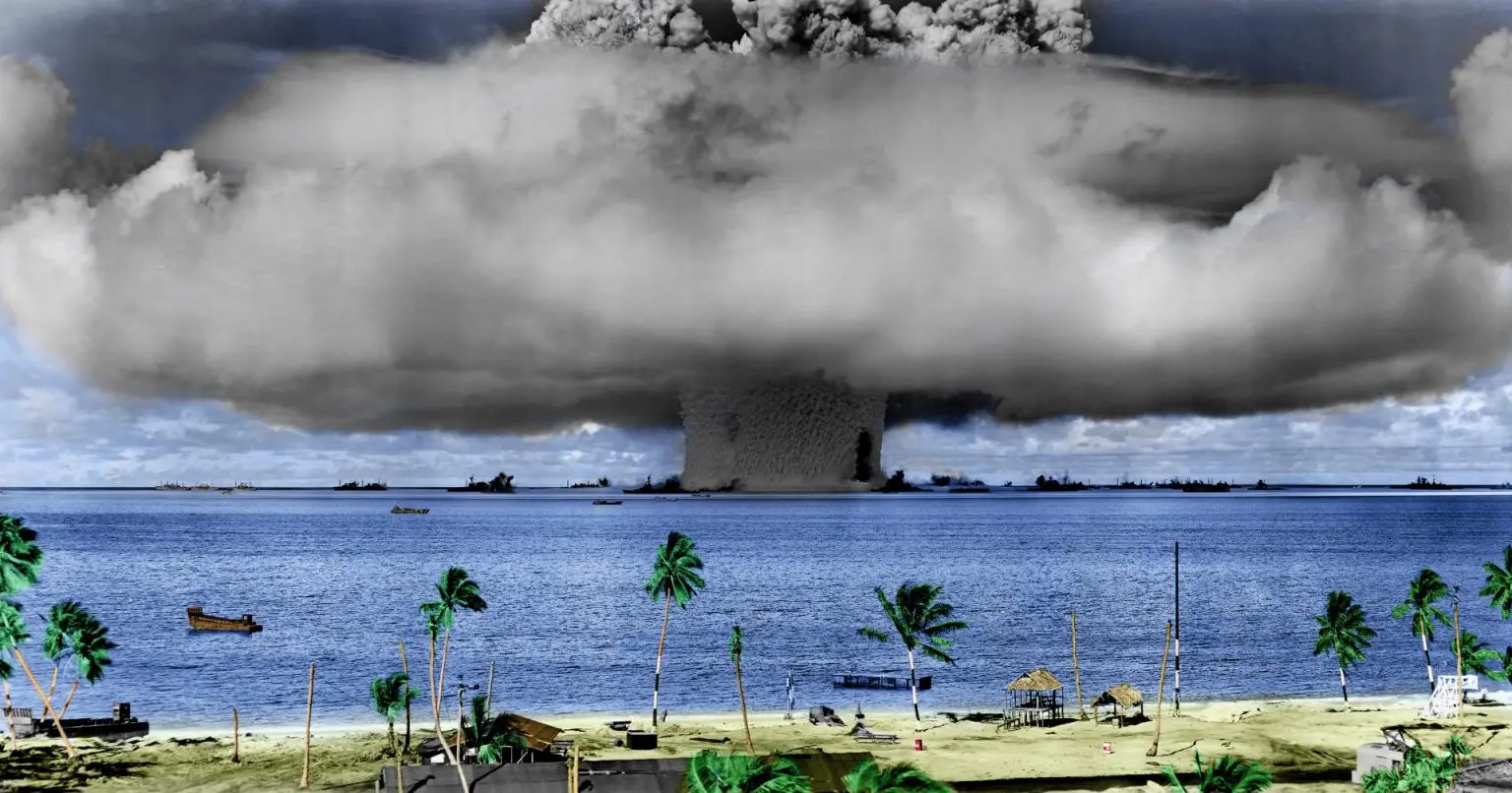
BY: Hart Rapaport, Ivana Nikolić Hughes | thebulletin.org March 9, 2021
Due to their remote location in the Northern Marshall Islands, the people of Bikini Atoll were spared the worst of the mid-Pacific fighting between the American and Japanese armies in the final years of World War II. Their millennia-old culture and sustainable way of life ended abruptly when, in early 1946, Commodore Ben Wyatt, a representative of the occupying United States Navy, informed King Juda and other Bikini residents that the US would begin to test nuclear weapons near their homes. Wyatt asked the Bikinians to move elsewhere, stating that the temporary move was for “the good of mankind and to end all wars.” Though Wyatt may have believed his words to be true, the show of might by the US that followed neither ended all conflict, nor was the exodus short-lived. Seventy-five years later, Bikinians have yet to return.
Continue reading
By: William D. Hartung | Arms & Security Program
Intercontinental Ballistic Missiles (ICBMs) have been called “some of the most dangerous weapons in the world” by former Defense Secretary William Perry, because under current policies the president would have only a matter of minutes to decide whether to launch them in a crisis, increasing the risks of an accidental nuclear war.1 Despite this reality, proposals for reducing this risk have routinely been blocked, in significant part due to a group of Senators from states that host ICBM bases or ICBM maintenance and development activities, often referred to as the ICBM Coalition. The Coalition includes Senators from Montana, North Dakota, Utah, and Wyoming.
The polices promoted by the ICBM Coalition and its allies do not have wide public support. A recent poll conducted by ReThink Media and the Federation of American Scientists found that 60% of Americans supported either forgoing the development of a new ICBM, eliminating ICBMs altogether, or eliminating all nuclear weapons, an indication that a change in current ICBM policies would have significant public support.
Can the Energy Department store 50 tons of weapons-grade plutonium for 10,000 years?
Safely ridding the nation of one of the world’s largest excess stockpiles of weapons-grade plutonium will be no minor feat. At issue is the US Energy Department’s 2016 decision to dilute and dispose of, all told, about 48.2 metric tons of plutonium, including 26.2 tons of components, known as “pits,” from several thousand dismantled thermonuclear warheads and 22 metric tons in other forms…If one gram of soil contains as little as 1.587 micrograms of plutonium, the Energy Department is required by federal standards to geologically isolate it from the environment for at least 10,000 years at WIPP.
By: Robert Alvarez | March 8, 2021 | thebulletin.com
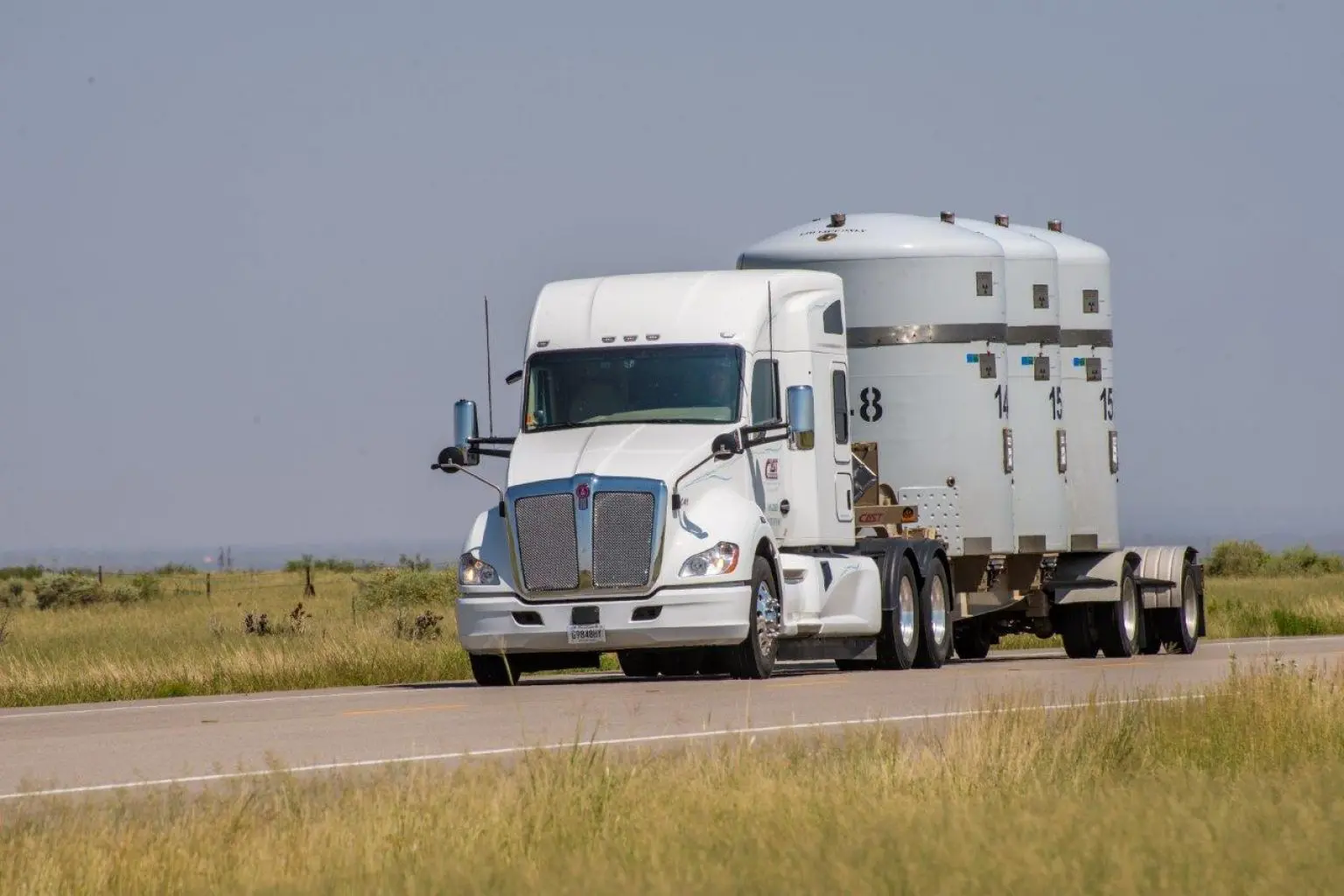
The nuclear age is undergoing a paradigm shift. During much of the latter half of the past century, the nuclear enterprise was ascendant; now, it has entered a period of decline and uncertain long-term custodianship. This reversal of fortune is especially apparent in the United States’ efforts to rid itself of its unwanted reserves of plutonium. It’s been more than 75 years since a blinding flash lit up the pre-dawn sky at Alamogordo in the Chihuahua Desert of New Mexico. On July 16, 1945, a single gram of the grapefruit-size sphere of plutonium at the center of the world’s first nuclear explosion released three times the destructive force of the largest conventional bomb used during World War II. [1]
Thereafter, the United States government built a grossly oversized nuclear arsenal and never envisioned having to stop building it. Between 1944 and 1994, the Energy Department and its predecessors produced 99.5 metric tons of plutonium for use in an estimated 70,000 nuclear weapons. (An additional 11 tons were produced or acquired for research and development purposes.)
This Is How the Biggest Arms Manufacturers Steer Millions to Influence US Policy
Five of the nation’s biggest defense contractors — Lockheed Martin, Boeing, Northrop Grumman, Raytheon Technologies and General Dynamics — spent a combined $60 million in 2020 to influence policy, according to a new report from the Center for Responsive Politics.
By: Stephen Losey | military.com 7 Mar 2021
The paper, “Capitalizing on conflict: How defense contractors and foreign nations lobby for arms sales,” details how a network of lobbyists and donors steered $285 million in campaign contributions and $2.5 billion in lobbying spending over the last two decades, as well as hiring more than 200 lobbyists who previously worked in government.
The amount of money at stake is immense, both at home and abroad, the center states on its website, OpenSecrets.org. Not only is a significant portion of the Pentagon’s $740 billion annual budget spent on weapons, the report explains, but American defense firms agreed to sell $175 billion in weapons to other countries over the last year. That includes deals to sell $23 billion in F-35 Joint Strike Fighters and drones to the United Arab Emirates, and billions more in sales to Taiwan and Saudi Arabia, it adds.
The practice appears unlikely to change significantly under the Biden administration.
Putin, Biden Should Aim For More Arms Curbs: Gorbachev
Gorbachev told the Interfax news agency that the two leaders – who spoke by phone after Biden’s inauguration last month – should meet and discuss further arms curbs.
By: AFP NEWS – Agence France Presse /
Former Soviet leader Mikhail Gorbachev on Saturday urged Russian President Vladimir Putin and new US President Joe Biden to push for deeper restrictions on nuclear weapons.
Tensions soared between the two nations under previous US leader Donald Trump, fuelled by allegations of sweeping cyberattacks and a litany of other disagreements.
But soon after Biden took office, the two powers extended a pact that limits each side to 1,550 nuclear warheads, which Putin hailed as a positive development.
Continue reading
Celebrating International Women’s Day 2021 #ChooseToChallenge

Today, as thousands of nuclear weapons remain in unchecked control by only a few men in power, Ploughshares Fund continues to #ChooseToChallenge – the false assumptions, unfair gender biases, as well as the systematic racism that legitimize and normalize dangerously outdated nuclear weapons policies.
A Decade Later: Human Suffering and Failures of Fukushima
Fukushima Daiichi 2011-2021
By: beyondnuclearinternational March 7, 2021

The decontamination myth and a decade of human rights violations
The following is the Executive Summary from the new Greenpeace report. Download the full report.
As a result of a catastrophic triple reactor meltdown at the Fukushima Daiichi nuclear plant on 11 March 2011, several tens of thousands of square kilometres in Fukushima Prefecture and wider Japan were contaminated with significant amounts of radioactive caesium and other radionuclides. The first Greenpeace radiation expert team arrived in Fukushima on 26 March 2011, and Greenpeace experts have since conducted 32 investigations into the radiological consequences of the disaster, the most recent in November 2020.
This report, the latest in a series, chronicles some of our principal findings over recent years, and shows how the government of Japan, largely under prime minister Shinzo Abe, has attempted to deceive the Japanese people by misrepresenting the effectiveness of the decontamination programme as well as the overall radiological risks in Fukushima Prefecture. As the latest Greenpeace surveys demonstrate, the contamination remains and is widespread, and is still a very real threat to long term human health and the environment.
Department of Energy, nuclear oversight agency on ‘high-risk’ list
“This is more than just chronic behavior — it’s like institutionalized bad management,” said Jay Coghlan, executive director of nonprofit Nuclear Watch New Mexico.
By: Scott Wyland swyland@sfnewmexican.com | santafenewmexican.com March 3, 2021
The U.S. Department of Energy and its agency overseeing the nation’s nuclear weapons program have serious enough problems with managing contractors and projects — including for nuclear waste cleanup — that they made a government watchdog’s “high-risk” list again this year.
Both the Energy Department and its branch known as the National Nuclear Security Administration have made some progress in how they manage personnel, facilities and waste disposal, but they still are deficient in key areas, the Government Accountability Office said in its biannual high-risk report.
The report lists programs and operations that are high-risk due to their vulnerabilities to fraud, waste, abuse and mismanagement — and some require an overhaul.
The GAO issues the reports at the start of each new session of Congress. They have led to more than $575 billion in cost benefits to the federal government in the past 15 years, the GAO said.
Santa Fe councilors question LANL coalition membership
BY: Kyle Land /
What’s the actual benefit to the city?
That was the question Santa Fe city councilors debated Monday as they considered the city’s membership in the Regional Coalition of LANL Communities.
At the center of it all was a revised Joint Powers Agreement for the coalition, which officials hope will solve some of the group’s long-standing organizational issues.
Panel weighs benefits to LANL communities coalition
BY: Sean P. Thomas sthomas@sfnewmexican.com / Updated
Santa Fe City Councilor Renee Villarreal renewed her concerns Monday about the city’s involvement in a joint powers agreement with the Regional Coalition of LANL Communities.
During a Finance Committee meeting Monday, Villarreal said she has yet to understand how the city benefits from the agreement, which calls for a $10,000 contribution.
“Why is it important we are part of this coalition?” she asked. “It’s never been clear to me about the benefits and how it holds up the values that we care about in Santa Fe.”
The city is one of nine cities, counties, towns and tribal governments that make up the regional coalition, which was established in 2011 to give communities in Northern New Mexico a more official say in decision-making pertaining to job development and cleanup at Los Alamos National Laboratory.
But controversy emerged in recent years over the organization’s spending practices.
How Green Berets prepared to carry ‘backpack nukes’ on top-secret one-way missions during the Cold War
“During training, the instructors had told us we had about 30 minutes to clear the blast radius of the device. We never really believed that,” a retired Special Forces operator who served on a Green Light Team told Insider.
BY: Stavros Atlamazoglou / March 1st, 2021 businessinsider.com
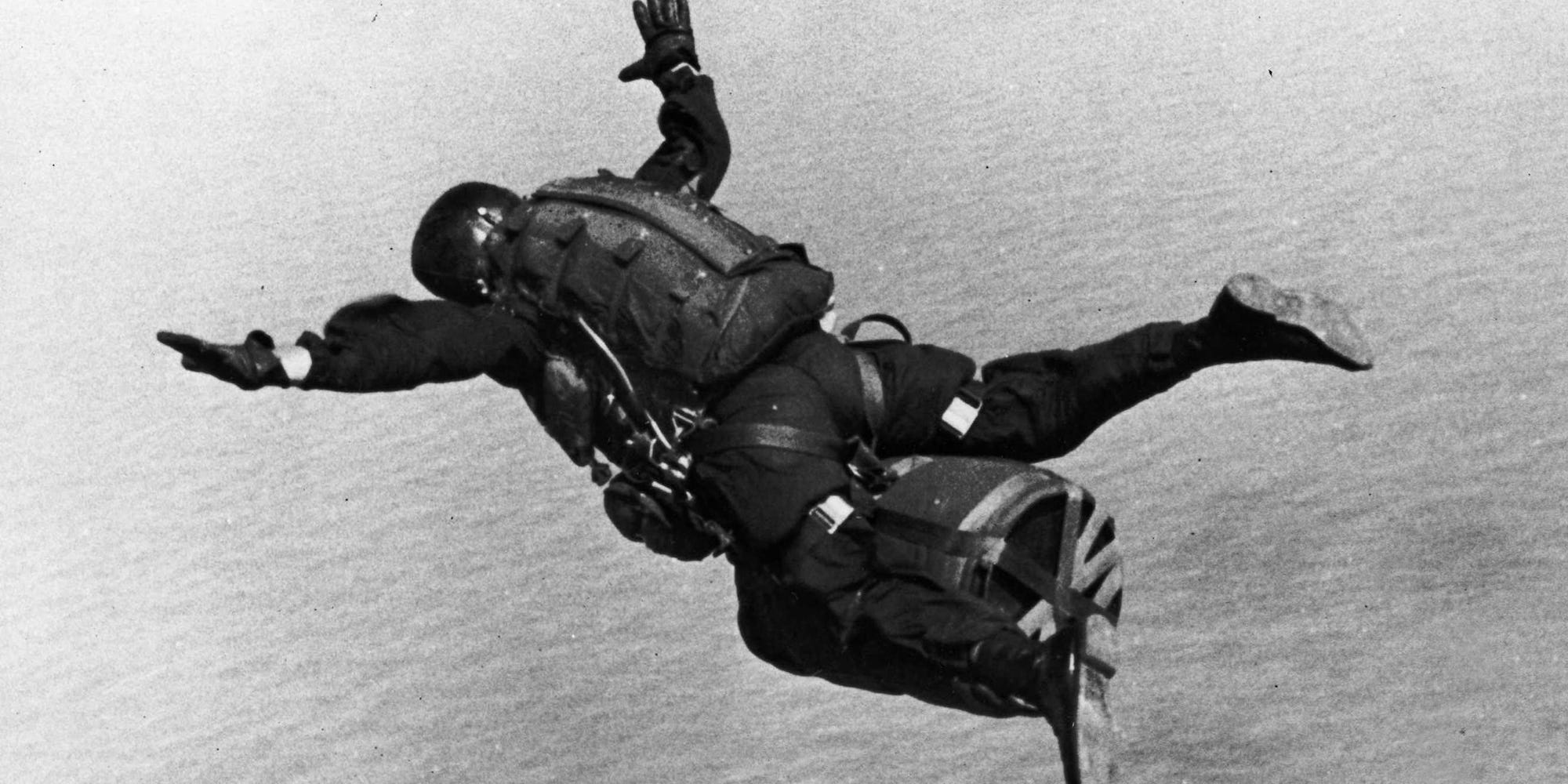
- In the Cold War, strategists wanted nuclear weapons they could use without sparking a nuclear war.
- That led to the development of tactical nuclear weapons for use against targets.
- Teams of Green Berets trained to carry those nukes to their targets and saw it as a one-way mission.
Throughout the Cold War, as the nuclear arms race became more frantic, a nuclear confrontation between the US and the Soviet Union remained a major concern.
With intercontinental ballistic missiles, submarine-launched missiles, and air-dropped bombs, both countries had several options when it came to nuclear warfare.
But the atomic bombings of Hiroshima and Nagasaki in the closing days of World War II made clear the destructive capability of nuclear arms and the danger of a full-blown nuclear conflict.
As a result, US strategists sought ways to use nuclear weapons without triggering an all-out nuclear war.
Continue reading
New Mexico alleges in court filing Los Alamos National Lab failed to clean up nuclear waste
“I’m glad that NMED went to court. If LANL is serious, they should not be spending lots of federal time and resources and lawyers to fight this…They should be trying to see what they can do to come to an agreement with NMED.” — Don Hancock, director of the nuclear waste program at the Southwest Research and Information Center
By: Adrian Hedden Carlsbad Current-Argus / March 2nd, 2021 currentargus.com
An alleged failure to clean up hazardous and radioactive waste at Los Alamos National Laboratory (LANL) led the New Mexico Environment Department (NMED) to take the U.S. Department of Energy (DOE) to court in hopes of seeing the DOE address its concerns.
In a complaint filed in the First Judicial District Court in Santa Fe County, NMED alleged the DOE displayed a “pattern” of failing to meet deadlines and benchmarks for hazardous waste clean-up at the federal nuclear facility in northern New Mexico.
NMED sought to terminate a 2016 consent order, enacted during the past administration, citing a lack of adequate targets and progress in cleaning up waste at the facility.
Gorbachev’s Greatest Hits
Mikhail Sergeyevich Gorbachev did more for global nuclear disarmament than any other person in history
Gorbachev made history, then freed history by opening his documents
Briefing Book #746 | Edited by Svetlana Savranskaya & Thomas Blanton / March 2nd, 2021 nsarchive.gwu.edu
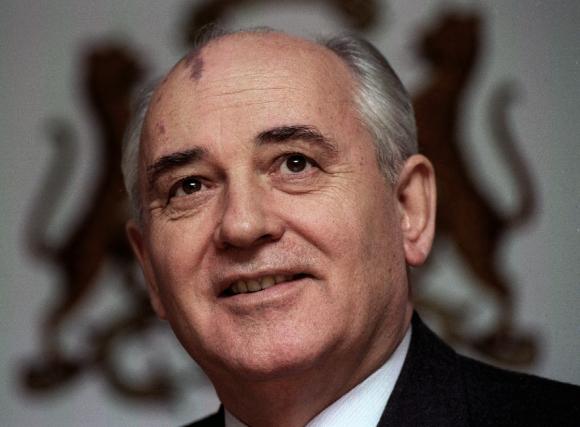
Washington, D.C., March 2, 2021 – The first and only president of the Soviet Union, Mikhail Sergeyevich Gorbachev, is turning 90 years old today in Moscow. On the occasion of his anniversary, the National Security Archive has compiled a collection of postings called “Gorbachev’s Greatest Hits.” These documents help illuminate the story of the end of the Cold War, political reform of the Soviet system, and the vision of a world built on universal human values.
This compendium, accompanied by a collection of Russian-language documents on the Archive’s Russia Page, is intended to encourage scholars and others to revisit and study those miraculous years in the late 1980s and early 1990s when the global confrontation stopped, walls fell, peoples found freedom, and Europe was seen as a common home. Though not for long.
Modeling Software Once Led Us to the Precipice of Nuclear War. What Will AI Do?
The Pentagon must heed the lessons of RYAN and Able Archer amid its artificial-intelligence aspirations.
By: Steve Blank Defense One / March 1st, 2021 defenseone.com
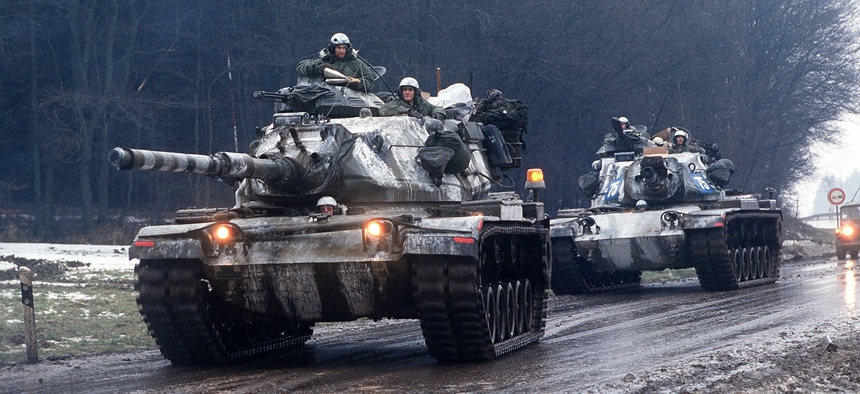
In 1983, the world’s superpowers drew near to accidental nuclear war, largely because the Soviet Union relied on software to make predictions that were based on false assumptions. Today, as the Pentagon moves to infuse artificial-intelligence tools into just about every aspect of its workings, it’s worth remembering the lessons of RYAN and Able Archer.
Two years earlier, the Soviet Union had deployed a software program dubbed RYAN, for Raketno Yadernoye Napadenie, or sudden nuclear missile attack. Massive for its time, RYAN sought to compute the relative power of the two superpowers by modeling 40,000 military, political, and economic factors, including 292 “indicators” reported from agents (spies) abroad. It was run by the KGB, which employed more than 200 people just to input the data.
New Mexico is right to hold Energy’s feet to the fire
Santa Fe New Mexican | Our View, March 1, 2021
New Mexico is getting tougher with Los Alamos National Laboratory when it comes to waste cleanup. That’s good news. The state has filed suit against the U.S. Department of Energy for what it claims is the lab’s inadequate cleanup of legacy waste.
New Mexico Environment Department Takes Legal Action To Terminate Defective LANL Cleanup “Consent Order”
FOR IMMEDIATE RELEASE, February 25, 2021
The New Mexico Environment Department has announced that it is filing a lawsuit against the Department of Energy to terminate a “Consent Order” governing cleanup at the Los Alamos National Laboratory (LANL). Nuclear Watch New Mexico, which has fought against that Consent Order ever since it went into effect nearly five years ago, strongly supports and applauds NMED’s decision.
Much to its credit, in 2005 the State of New Mexico successfully compelled DOE to enter into a strong, enforceable Consent Order after years of tough negotiations and lawsuits brought against it by DOE and the University of California (then LANL’s manager). However, at the Lab’s request the anti-regulation Susanna Martinez Administration eviscerated that Consent Order with more than 150 milestone extensions.
State sues DOE over LANL cleanup
The lawsuit notes that Nuclear Watch New Mexico previously filed a lawsuit against the DOE over its non-compliance with the 2016 Consent Order.
Jay Coghlan, executive director of Nuclear Watch New Mexico, said in a statement that “What New Mexicans really deserve (is) to have needed cleanup drive funding instead of the budget that DOE wants driving cleanup. We strongly salute the Environment Department for taking legal action against DOE’s scheme of expanding dirty nuclear weapons production over cleanup.”
By: T.S. LAST / JOURNAL NORTH / February 25th, 2021 at 11:45pm Copyright © 2021 Albuquerque Journal abqjournal.com
SANTA FE – The state Environment Department has lost patience with the U.S. Department of Energy over what it says is a “continuing pattern of delay and noncompliance” with the cleanup of hazardous legacy waste at Los Alamos National Laboratory, posing a health risk to people in surrounding communities.
After a dispute resolution process broke down, the New Mexico Environment Department late Wednesday filed a civil lawsuit against the DOE in 1st Judicial District Court in Santa Fe. It claims that DOE has failed to meet objectives identified in compliance orders in 2005 and 2016 and has dragged its feet in cleaning up contamination left behind from decades of bomb-making and nuclear research.
It asks that a court-supervised process be conducted to resolve the issues.
“We’re a state agency, and our patience is long,” Environment Secretary James Kenney said in a phone interview. “But our patience runs out quickly when there’s an inability to meet promises.”
New Mexico sues feds over LANL cleanup, plans tougher oversight
Jay Coghlan, executive director of nonprofit Nuclear Watch New Mexico, agreed that hard deadlines are crucial in making real headway on cleanup.
“The main thing we would want is to have cleanup drive funding instead of a budget that [the Energy Department] wants driving cleanup,” Coghlan said.
By: Scott Wyland santafenewmexican.com | Feb 25, 2021
Worker moves drums of transuranic (TRU) waste at a staging area. By filing a lawsuit against the U.S. Department of Energy, state regulators now hope to dissolve the existing consent order regulating waste cleanup at the lab and impose tougher rules for disposing of transuranic waste. Credit: Richard RobinsonState regulators are suing the U.S. Department of Energy for what they say is a failure to adequately clean up legacy waste at Los Alamos National Laboratory, and they will impose tougher rules for disposing of waste generated at the lab during the Cold War and Manhattan Project.
Critics have bashed the 2016 agreement for waste cleanup — known as a consent order — that was crafted under Republican Gov. Susana Martinez, saying it weakened the original 2005 order by eliminating real deadlines and imposing few penalties for slow or deficient work.
The lawsuit, filed in state District Court, seeks to cancel the consent order, fine the Energy Department about $330,000 for not meeting its cleanup obligations and have the court oversee mediation between the two parties for a new waste agreement.
New Mexico Environment Department’s (NMED) virtual Los Alamos community engagement meeting Thursday, Feb. 25, 2021
Fantastic News for Comprehensive Cleanup at LANL: Environment Department files complaint against U.S. Department of Energy to speed clean-up of legacy waste, terminate 2016 Consent Order at Los Alamos National Laboratory
Watch the full length recording here: https://www.facebook.com/NukeWatch.NM/videos/812249586045073
Ex-SCANA CEO pleads guilty to fraud in SC nuclear fiasco: ‘I’m sorry it’s come to this’
Tom Clements, an environmental activist who criticized the nuclear project even before its abandonment, noticed and shouted a question as the former SCANA executive walked past. “Mr. Marsh, are you going to apologize to the people of South Carolina for this nuclear nightmare?”
By Avery G. Wilks & Conor Hughes | postandcourier.com February 24, 2021 – updated March 5, 2021
COLUMBIA — Former SCANA Corp. Chief Executive Officer Kevin Marsh will spend at least two years in prison and pay back at least $5 million for defrauding electric ratepayers in South Carolina’s $9 billion nuclear power fiasco, according to a plea deal that was presented to a federal judge Feb. 24.
The 65-year-old Marsh appeared in court for the first time to plead guilty to fraud charges and formally accept responsibility for his role in the failed, decade-long expansion of SCANA’s V.C. Summer nuclear power plant in Fairfield County. Marsh had to surrender his passport at the courthouse but was released without having to post money for bond.
Once one of South Carolina’s top businessmen, Marsh has spent the past six months as a criminal informant and will continue to be a key witness for state and federal prosecutors who continue to probe the V.C. Summer project’s failure. He faces up to 10 years in prison if he does not fully cooperate with that investigation, according to the new terms of his plea deal.
“Justice has been served,” U.S. Attorney for South Carolina Peter McCoy said after the hearing. “For years, institutions and individuals have abused the public trust with little to no accountability. This includes corporations that have increased profits at the expense of their customers. Oftentimes, it’s assumed that these executives will avoid any oversight because of who they are and where they’ve worked.”
Marsh’s first day in court was a long one, a product of a three-year investigation by the FBI, U.S. Attorney’s Office for South Carolina, State Law Enforcement Division and S.C. Attorney General’s Office that brought both state and federal fraud charges against him.
That Time an Airman Accidentally Prevented a Nuclear Apocalypse
Perroots wrote, “it is not certain that we looked hard enough or broadly enough for information…For Western collectors the context was peacetime without even the most basic ripples of crisis. For the Soviets, however, the view may have looked quite different.”
In a 1989 memo, CIA officials admitted that Perroots’ letter surfaced “a long standing warning problem, i.e. the need for the intelligence community in Washington to provide more timely, discriminating and accurate warning in support of the theater commander.”
By: DAVID ROZA | taskandpurpose.com FEBRUARY 23, 2021
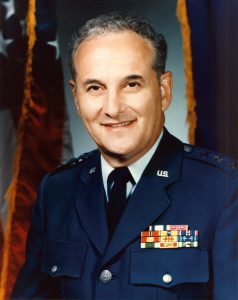
Lt. Gen. Leonard Perroots was on the intelligence desk for U.S. Air Forces Europe on Nov. 5, 1983, when he heard that Soviet Air Forces in East Germany were on high alert and being loaded with munitions. The Air Force officer called his boss, Gen. Billy Minter, who asked Perroots if they should load up for war in response.
“I said that we would carefully watch the situation,” Perroots later wrote in a letter to senior U.S. intelligence officials, “but there was insufficient evidence to justify increasing our real alert posture.”
Little did Perroots know, he had just played a crucial role in averting what could have resulted in armageddon, had the nuclear-capable war machines of both the North Atlantic Treaty Organization and the Soviet Union continued to spin up. Experts later compared the incident, now known as Able Archer 83, to the 1962 Cuban missile crisis in terms of how close both sides came to declaring war.
No Growth, No Big Cuts Likely For First Biden Defense Budget
The full budget, set to be released on May 3, should spark heated debate in Congress between an emboldened progressive wing of the Democratic party looking to cut defense budgets, and Republicans and conservative Democrats who say spending must increase to stay ahead of the Chinese military buildup.
“You can’t obtain serious and durable cuts in Pentagon spending without an equally serious rethinking of our strategic objectives…Resources constraints should cause us to rethink our strategic objectives, but the Biden team seems unwilling to do that.” – Christopher Preble, co-director of the New American Engagement Initiative at the Atlantic Council.
By: PAUL MCLEARY / breakingdefense.org
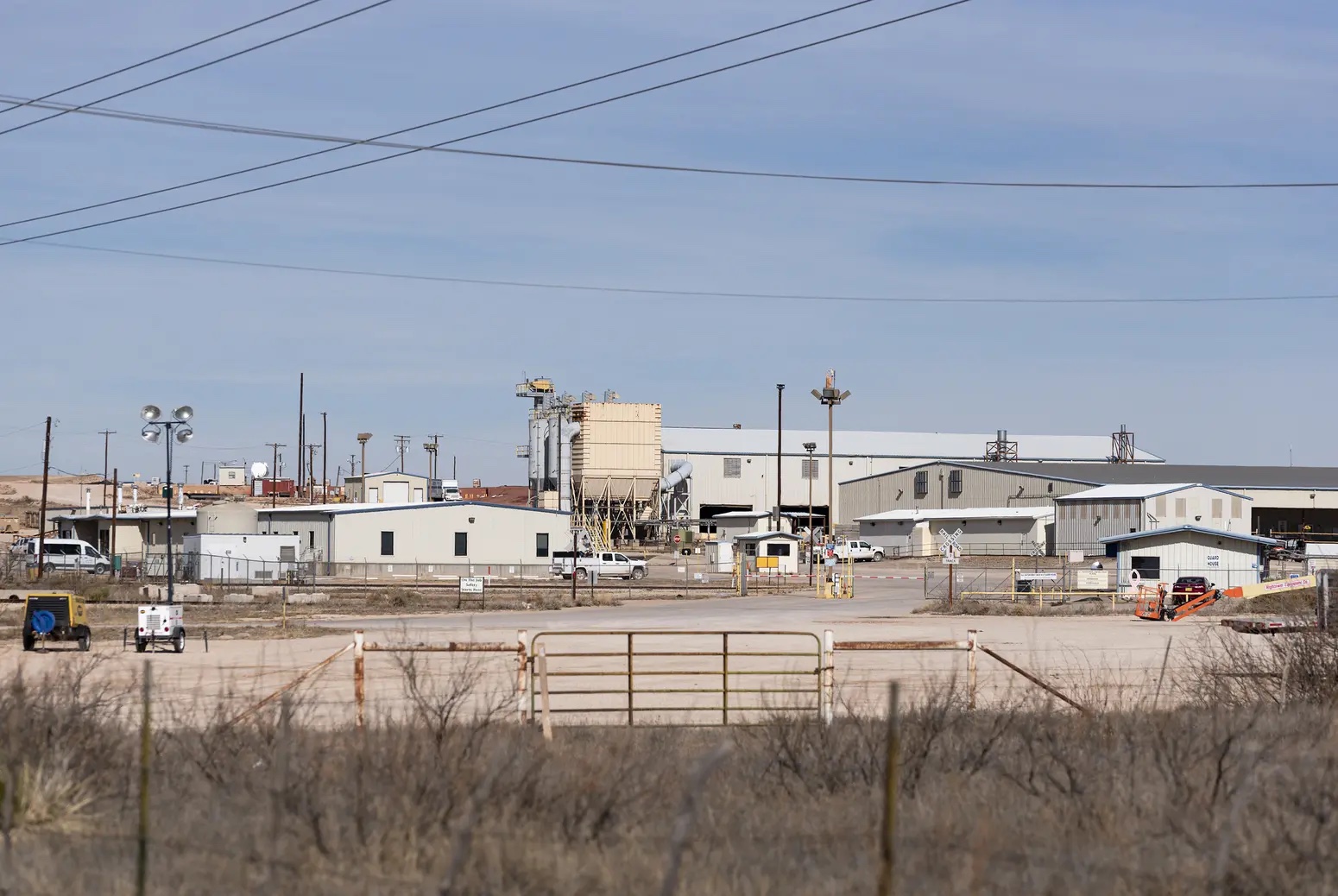
WASHINGTON: Early planning indicates that the Biden administration’s first defense budget might only match last year’s request, marking the second year in a row that the budget request will not keep up with inflation according to several sources familiar with the guidance.
If that planning holds up, the top line for the Pentagon’s 2022 budget will likely come in around the $696 billion the department received in it’s base funding 2021, which was itself just $2.6 billion more than the enacted 2020 budget.
The full budget is now scheduled to be released on May 3. The Biden administration’s first DoD funding request will be delivered to a Congress already split between an emboldened progressive wing of the Democratic party looking to cut defense budgets, and Republicans and conservative Democrats who say spending must rise significantly in order to stay ahead of the Chinese military buildup.
Progressives Face Tough Road in Bid to Cut Biden Defense Budget
⋅ ‘Legacy’ weapons programs to come under review, Reed says
⋅ Critics eye Northrop’s intercontinental ballistic missile
By: Roxana Tiron & Anthony Capaccio / bloomberg.com
The high price tag of taming the coronavirus pandemic and pressure from some Democrats to significantly reduce the Pentagon’s $700 billion budget probably won’t force arbitrary national security budget cuts, the Senate Armed Services Committee’s new chairman said.
“Arbitrary reductions would not be the right way to go,” Senator Jack Reed, the Rhode Island Democrat who leads the panel, said in an interview Monday. Congress will weigh President Joe Biden’s first budget request and review the military services’ proposals to see if they cut unnecessary, so-called “legacy” weapons programs and facilities, Reed said.
Reed’s position is significant because Biden’s election elevated a narrative within the Democratic Party that the president will be under enormous pressure from progressives to slash defense spending. National security makes up about half of the federal government’s discretionary budget.
Nuclear Weapons — They’re Illegal
“Remember that when your congressional members pitch expanding nuclear weapons production as jobs programs; you can respond that they are illegal. Tell them they should show visionary leadership and moral courage by helping to create cleanup and green energy jobs instead.”
By: Jay Coghlan / Santa Fe New Mexican

Jan. 22 will go down in history as the day when the tide turned against nuclear weapons. That was the day when the Treaty on the Prohibition of Nuclear Weapons went into effect, signed by 122 countries.
It specifically prohibits nations from developing, testing, using or threatening to use nuclear weapons and assisting others in doing so. It reinforces existing international law obligating all states not to test, use or threaten to use nuclear weapons.
What immediate impact will it have here, given that the Los Alamos National Laboratory is the birthplace of nuclear weapons and now sole producer of plutonium pit triggers for the expanding U.S. stockpile? The brutally honest answer is no impact, not immediately.
But think about it. Nuclear weapons are now internationally illegal, just as horrendous chemical and biological weapons of mass destruction have long been. But nuclear weapons are the worst WMDs, potentially killing millions more while causing radioactive fallout and famine-inducing nuclear winter. Ask your New Mexican congressional members to explain why nuclear weapons shouldn’t be internationally banned just like chemical and biological WMDs, all of which cause agonizing, indiscriminate suffering and death.
Semis Hauling Millions of Radioactive Loads Across the Country
“…Charles is concerned, not only with the radiation he and other drivers may have been exposed to, but with the fallout from the radioactive rigs that continue to travel our nation’s highways.”
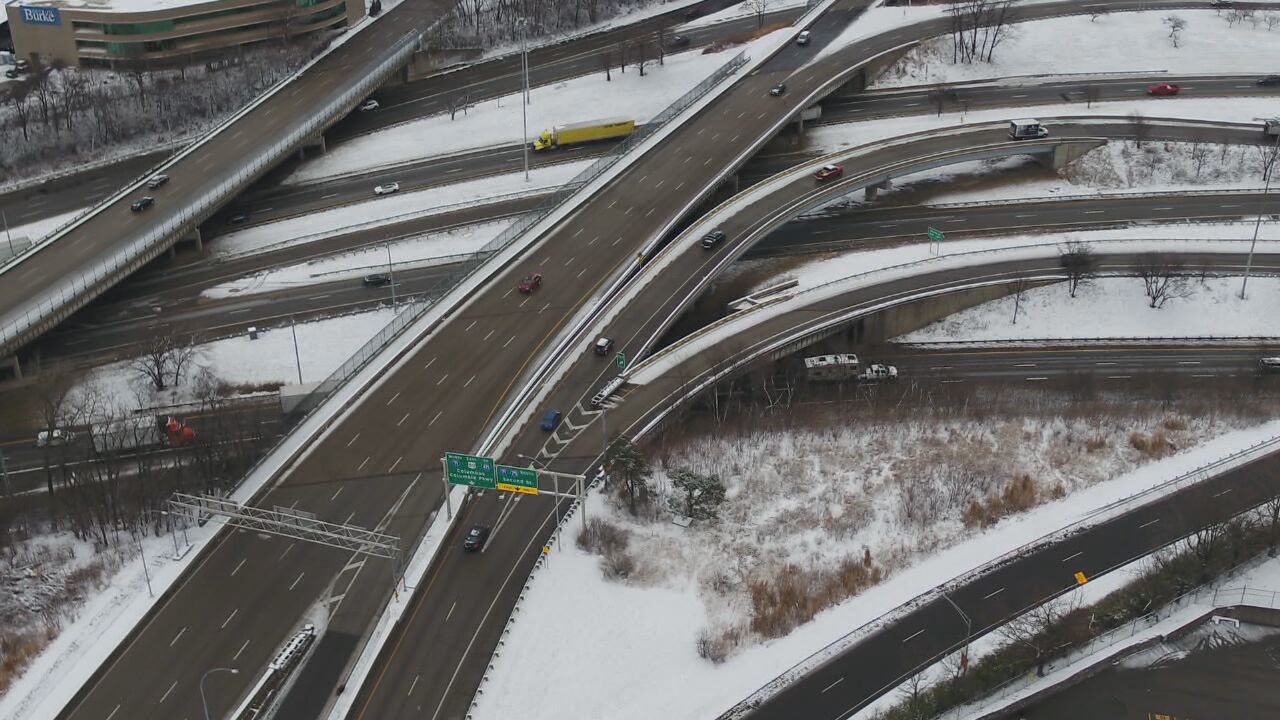
CINCINNATI (WKRC) – Each year, millions of radioactive loads are shipped across the country, many on trucks that travel right beside you on our highways.
The federal government says the shipments are safe, but some of those who handle and haul the toxic material disagree.
In this exclusive Local 12 Investigation, Chief Investigative Reporter Duane Pohlman interviews two of those workers.
PLOUGHSHARES FUND: JAY COGHLAN – MY FIRST GRANT: NUCLEAR WATCH NEW MEXICO
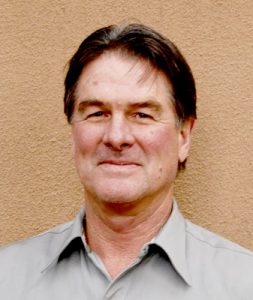
Jay Coghlan is the executive director of Nuclear Watch New Mexico, a nonprofit organization founded by veteran anti-nuclear activists that seeks to promote environmental protection at regional nuclear facilities, mission diversification away from nuclear weapons programs, greater accountability and cleanup in the nationwide nuclear weapons complex, and consistent US leadership toward a world free of nuclear weapons. Jay recently spoke with us on the initial reaction to Nuclear Watch New Mexico’s first grant from Ploughshares Fund, what has been accomplished since their founding in 1999, and what you can do to continue supporting their work.
What was your reaction when you found out that you received a grant?
My initial reaction was one of surprise. I was new to the work and didn’t really feel worthy of the trust that the Ploughshares Fund had put into me. Second came elation and the realization that I could become professional and devote myself to the work full time, which I view as a necessity. Third came a strong feeling of gratitude, which I still feel 28 years later because of Ploughshares’ incredible steadfast and consistent support.
What are you most proud of accomplishing in this field?
What I am most proud of is having played a central role in beating back four attempts by the US government to expand plutonium pit bomb core production, which has been the chokepoint of resumed US industrial-scale nuclear weapons production ever since a 1989 FBI raid investigating environmental crimes shut down the Rocky Flats Plant near Denver. This work included convincing a New Mexico senator to require an independent plutonium pit lifetime study which in 2006 concluded that pits last at least a century. Shortly thereafter, in conjunction with a restrained budget environment, Congress deleted funding for a new-design nuclear weapon called the Reliable Replacement Warhead and related expanded plutonium pit production.
Newly Released Documents Shed Light on 1983 Nuclear War Scare with Soviets
“On a hair trigger”: The Soviet Union put warplanes loaded with nuclear bombs on 24-hour alert during a 1983 war scare that was one of the most dangerous moments of the Cold War.
EPA awards 3 companies $220M for cleanup of abandoned uranium mines on Navajo Nation
“We are very pleased that Native American-owned firms are being considered and selected for the remediation of uranium mine sites,” Valinda Shirley, executive director of the Navajo EPA Shirley said in a statement. “The award of these contracts propels the cleanup of our priority mine sites across the Navajo Nation.”
SALT LAKE CITY (KUTV) — The U.S. Environmental Protection Agency has awarded three contracts for the clean-up of more than 50 abandoned uranium mine sites on the Navajo Nation, worth up to $220 million over the next five years.
The majority of the funding comes from the $1 billion Tronox settlement in 2015. According to the EPA, work is scheduled to begin later this year following the completion of assessments in coordination with the Navajo Nation Environmental Protection Agency. A news release stated that the cleanup sites are in New Mexico’s Grants Mining District and in 10 chapters located on the Navajo Nation, which was the primary focus of uranium extraction and production activities for several decades beginning in the 1950s.
The Navajo Area Abandoned Mine Remedial Construction and Services Contracts were awarded to:
- Red Rock Remediation Joint Venture,
- Environmental Quality Management Inc.,
- Arrowhead Contracting Inc.
In addition, the U.S. EPA and the Navajo Nation have secured funding agreements, through enforcement agreements and other legal settlements, for the assessment and clean-up of approximately 200 abandoned uranium mine sites on the Navajo Nation, the news release stated.
Navajo Nation President Jonathan Nez said in a prepared statement:
The Navajo people have endured decades of radiation exposure and contamination caused by uranium mining and production that has taken the lives of many former miners and downwinders and continues to impact the health of our children. We appreciate the U.S. EPA’s efforts to create incentives and opportunities for Navajo Nation residents by working with the contracted companies to develop training programs for our people and businesses to promote professional growth related to abandoned mine clean-ups. We strongly encourage these companies to create more opportunities for Navajo businesses to receive sub-contracts for the work related to assessments and clean-up efforts. We have many Navajo-owned entrepreneurs and businesses that have the expertise and experience to help clean-up our communities.
Each of the companies will develop training programs for Navajo individuals and businesses to promote professional growth in areas related to the AMRCS contract. Workforce training that could be offered by the contractors may cover radiological contamination, health and safety, construction and road building.
READ THE ENTIRE PRESS RELEASE HERE.
LANL Looks to Reduce Risks of Volatile Waste
“Many of the drums probably have sat around for years, even decades, posing a hazard,” said Scott Kovac, research and operations director for the nonprofit Nuclear Watch New Mexico.
“It’s an example of nuclear weapons work getting the priority while cleanup and waste management is on the back burner,”
By Scott Wyland swyland@sfnewmexican.com / sfnewmexican.com
Los Alamos National Laboratory is taking steps to address the hazards posed by dozens of barrels of radioactive waste mixed with incompatible chemicals, which have the potential to explode.
The lab is responding to a report in October by the federal Defense Nuclear Facilities Safety Board, which found the lab had failed to analyze chemicals present in hundreds of containers of transuranic nuclear waste.
Incompatible chemicals could blend together and cause a container to burst, releasing a high level of radiation that would threaten workers and the public, the report said.
Groups Seek Broader Review of Nuclear Work
Federal installations face a deadline of making 80 cores per year by 2030, with the first 30 due in five years.
“Nuclear Watch New Mexico, South Carolina-based SRS Watch and California-based Tri-Valley Communities Against a Radioactive Environment sent a letter to the U.S. Energy Department last week, asking that a rigorous environmental review be done before production is ramped up at Los Alamos National Laboratory in northern New Mexico and the Savannah River Site near Aiken, South Carolina.”
By: Susan Montoya Bryan | mbtmag.com Feb 18th, 2021
ALBUQUERQUE, N.M. (AP) — Watchdog groups want the Biden administration to reconsider a decision by a U.S. agency not to conduct a more extensive environmental review related to production of the plutonium cores used in the nation’s nuclear arsenal.
The renewed request comes as federal installations in New Mexico and South Carolina face a deadline of making 80 cores per year by 2030, with the first 30 due in five years.
With jobs and billions of dollars in spending at stake, the effort to modernize the nation’s nuclear arsenal has enjoyed bipartisan support in Congress over the years, especially among New Mexico Democrats whose districts stand to benefit from the economic windfall. The Biden administration has taken swift action to reverse some policies by the Trump administration but has yet to say whether it plans to push ahead with making more plutonium cores. It does say that work is being reviewed.
Nuke groups pressing Biden administration for more pit production environmental review
Savannah River Site Watch, Nuclear Watch New Mexico and Tri-Valley CAREs, represented by the the S.C. Environmental Law Project, in early February sent a letter and supporting documents to the Department of Energy and its National Nuclear Security Administration outlining grave concerns and allegations of cut corners.
By Colin Demarest cdemarest@aikenstandard.com postandcourier.com| February 17, 2021
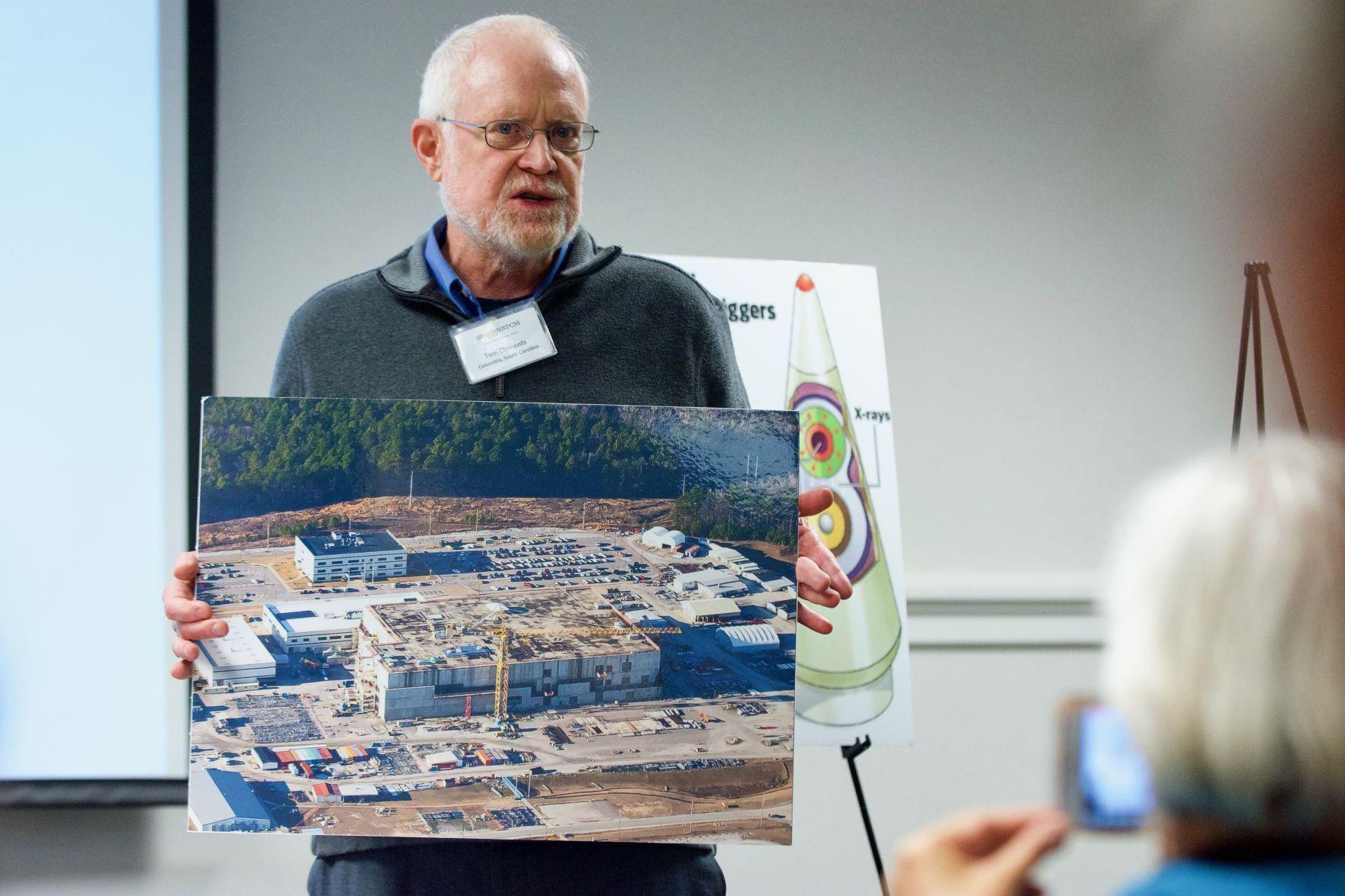
Staff photo by Colin Demarest
A coalition of nuclear watchers and nonprofits is again lobbying the federal government to conduct a more rigorous environmental review of plans to produce nuclear weapon cores in South Carolina and New Mexico, this time hoping the new administration is more amenable.
Savannah River Site Watch, Nuclear Watch New Mexico and Tri-Valley CAREs, represented by the the S.C. Environmental Law Project, in early February sent a letter and supporting documents to the Department of Energy and its National Nuclear Security Administration outlining grave concerns and allegations of cut corners.
Continue reading
Editorial: LANL’s lack of wildfire plan, action irresponsible
By Albuquerque Journal Editorial Board
Tuesday, February 16th, 2021
One would think an entity with 13 nuclear facilities that experienced two catastrophic wildfires in recent years would be taking fire prevention seriously.
After all, the 2000 Cerro Grande Fire burned about 7,500 acres of Los Alamos National Laboratory property, resulting in $331 million in damages. And that figure doesn’t include an estimated $15 million in lost productivity per week during a 15-day shutdown and recovery period.
And then there was the 2011 Las Conchas Fire. While it ultimately burned only about 1 acre of LANL land, it forced roughly 10,000 LANL employees out of their offices and out of Los Alamos for more than a week.
But according to a recent report from the Department of Energy’s Office of Inspector General, managers at LANL have not fully implemented measures designed to reduce the impact from wildland fires, including tree thinning in buffer zones below overhead power lines.
The report is so disappointing because the Las Conchas Fire, which burned about 156,293 total acres, started when a tree fell on a power line in the Santa Fe National Forest, resulting in a fast-burning “crown fire” that burned through tree canopy.
Biden Administration Asked to Review Plutonium Pit Expansion Plans
Jay Coghlan of Nuclear Watch New Mexico: “It’s important to note that no future pit production is to maintain the safety and reliability of the existing nuclear weapons stockpile. Instead, it is for speculative new nuclear weapons designs that can’t be tested because of the international testing moratorium, or perhaps worse yet may prompt the U.S. back into testing, after which surely other nations would follow.”
FEBRUARY 11, 2021
Public interest organizations sent a letter to the U.S. Department of Energy (DOE) requesting that it address calls for a rigorous environmental review of plans to expand production of nuclear bomb cores at the Los Alamos National Laboratory in New Mexico and the Savannah River Site in Aiken, South Carolina.
The non-profit groups—Nuclear Watch New Mexico, SRS Watch and Tri-Valley Communities Against a Radioactive Environment—have previously submitted a number of formal comments and information related to the environmental and public health risks associated with a significant expansion of plutonium “pit” production at the two DOE sites.
Continue reading

